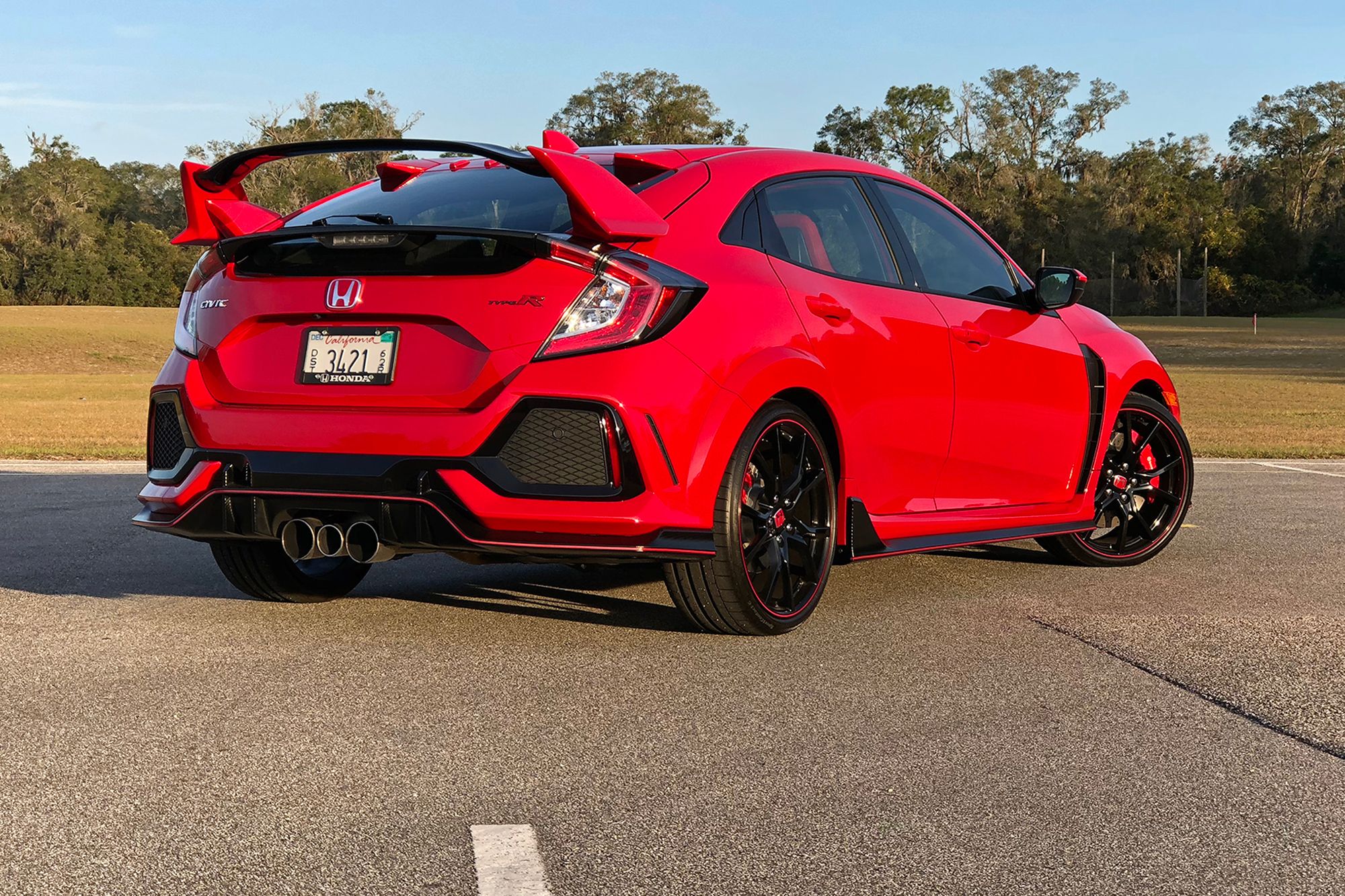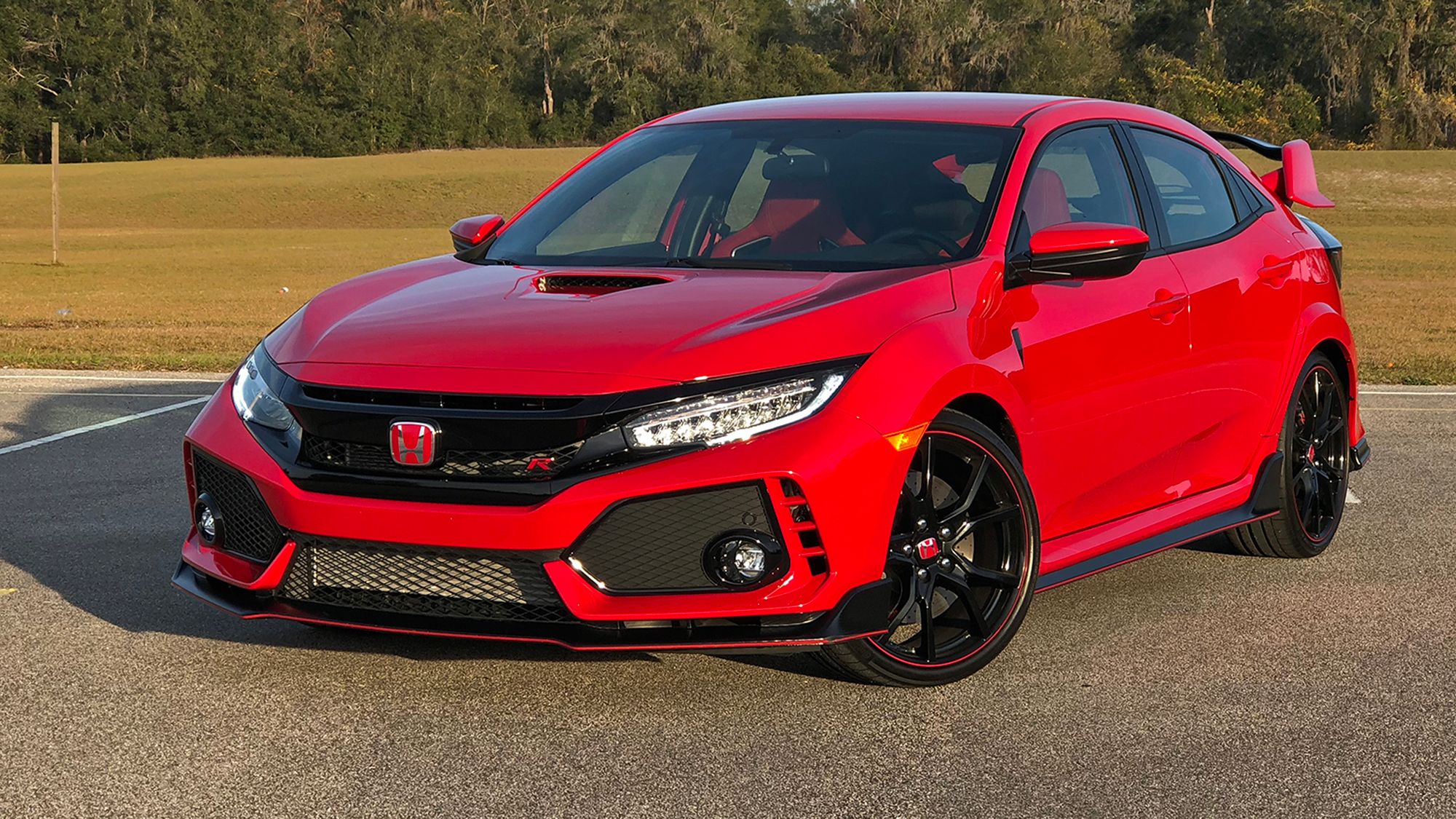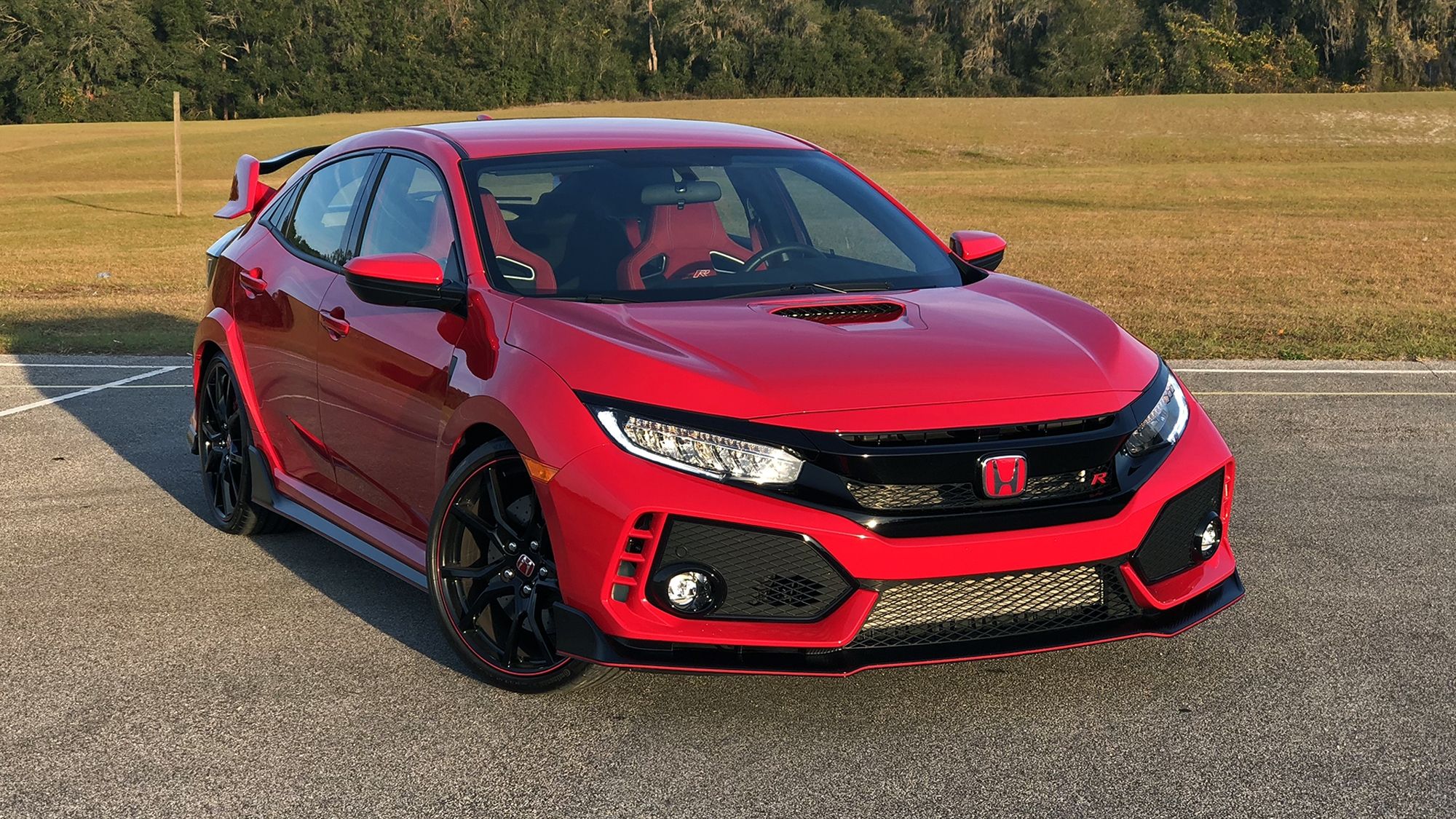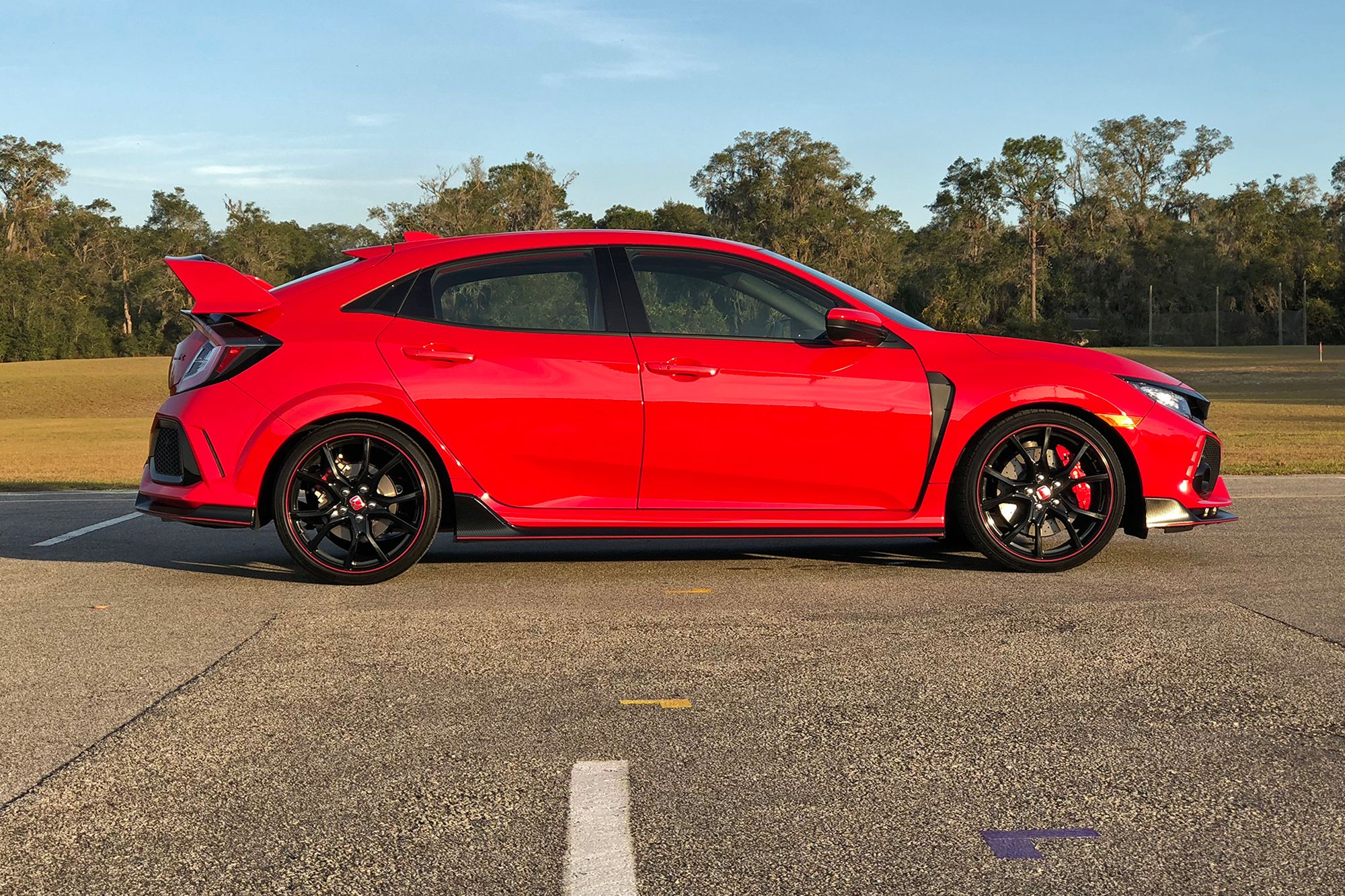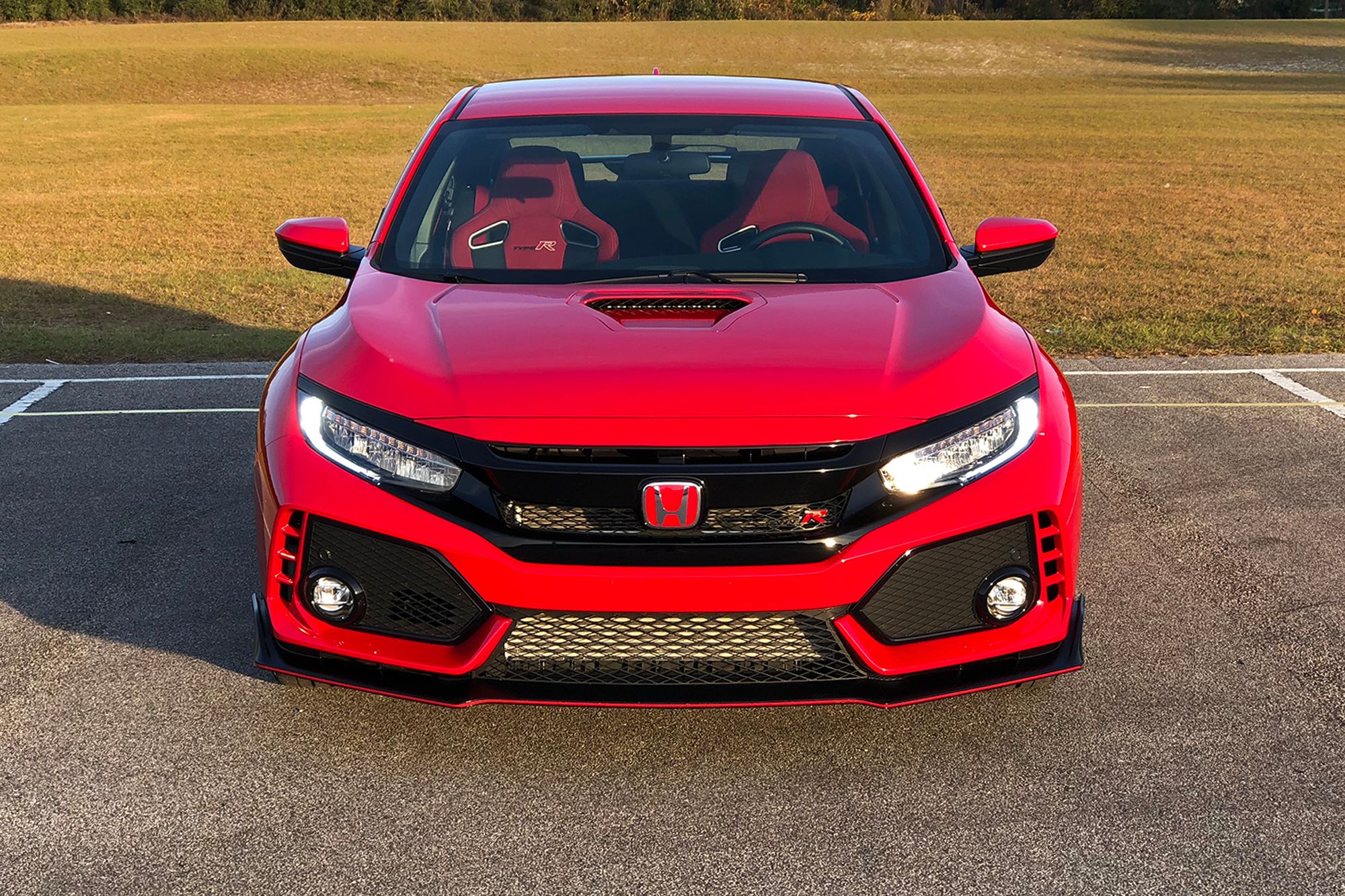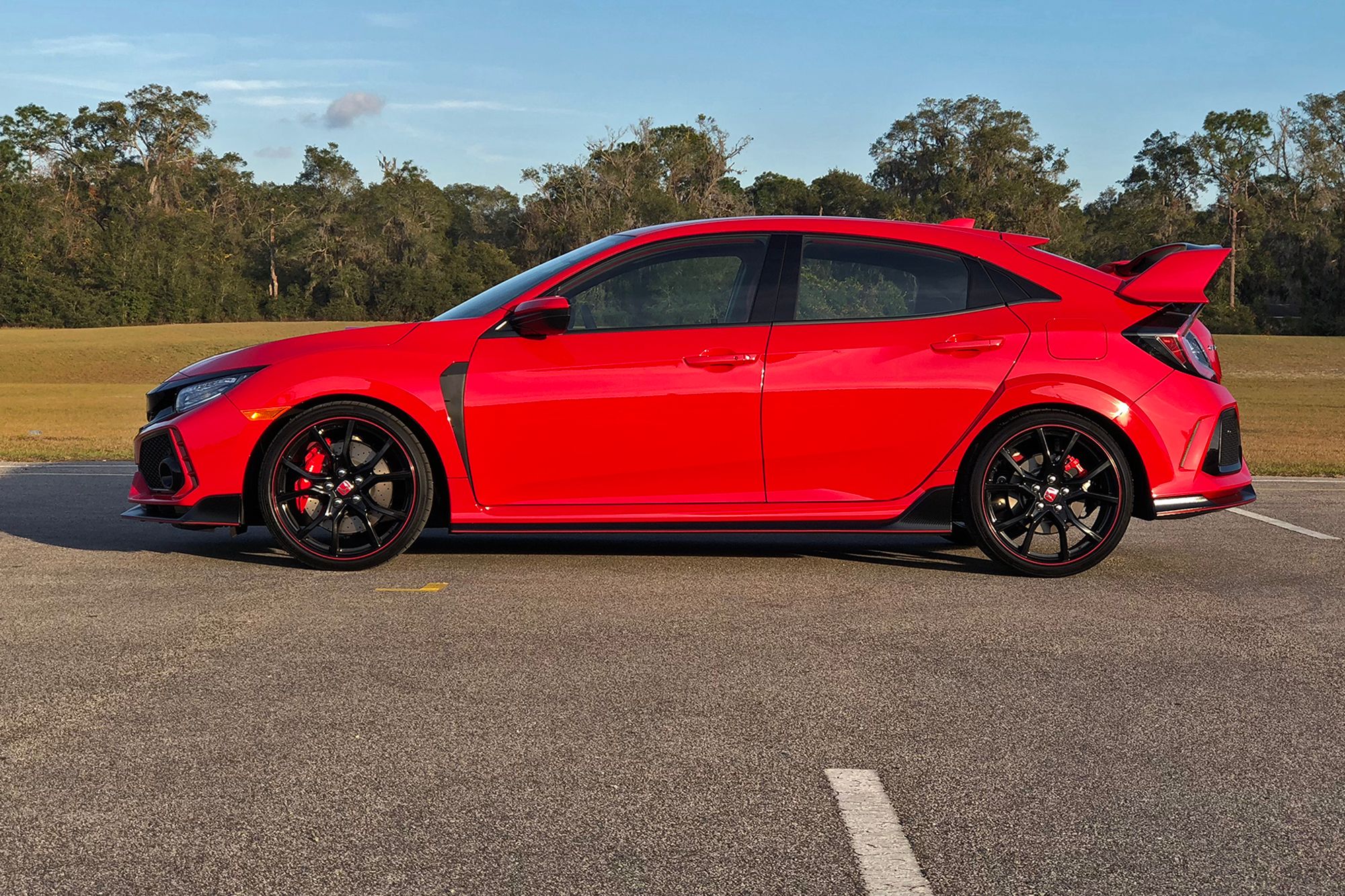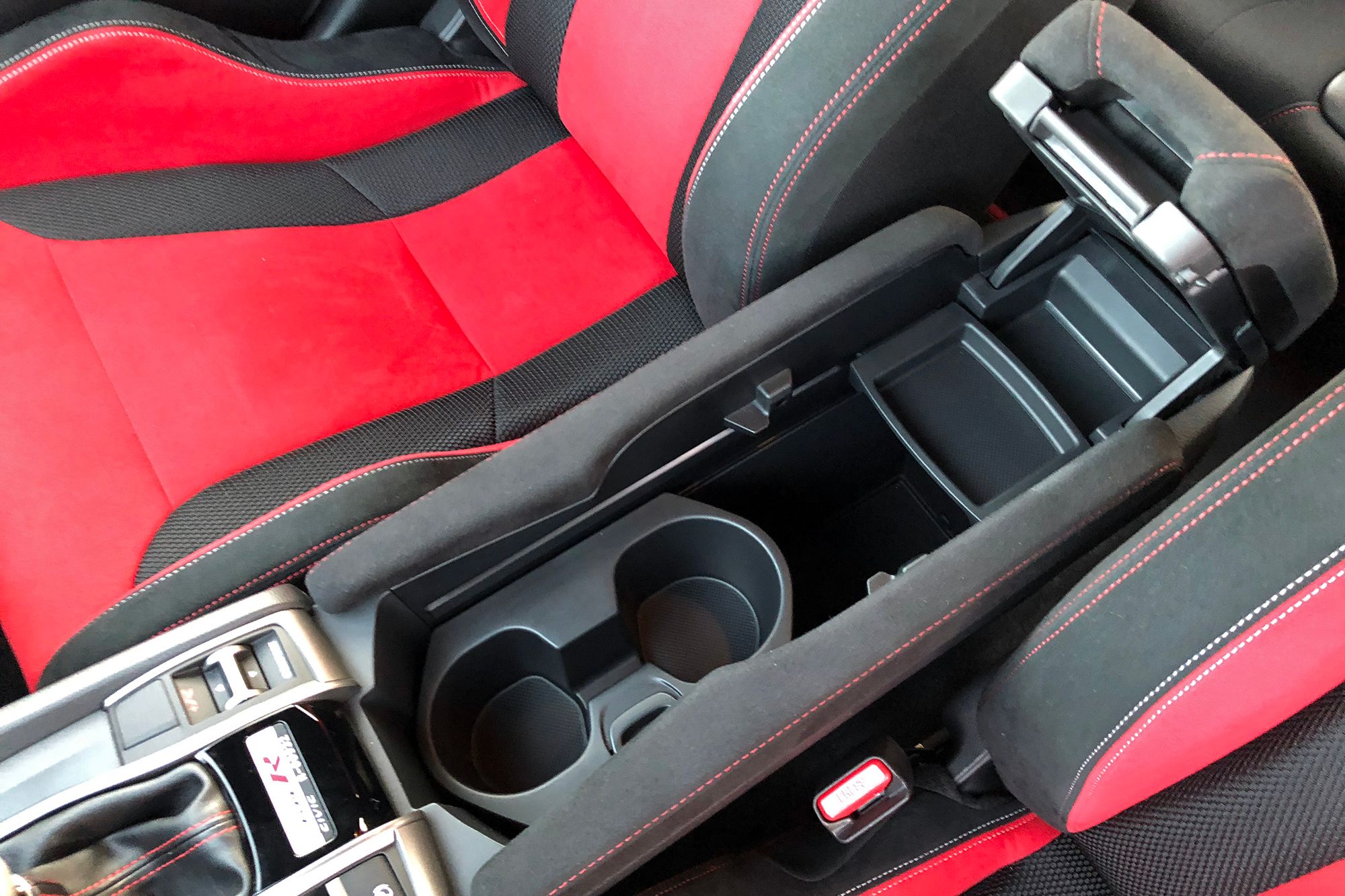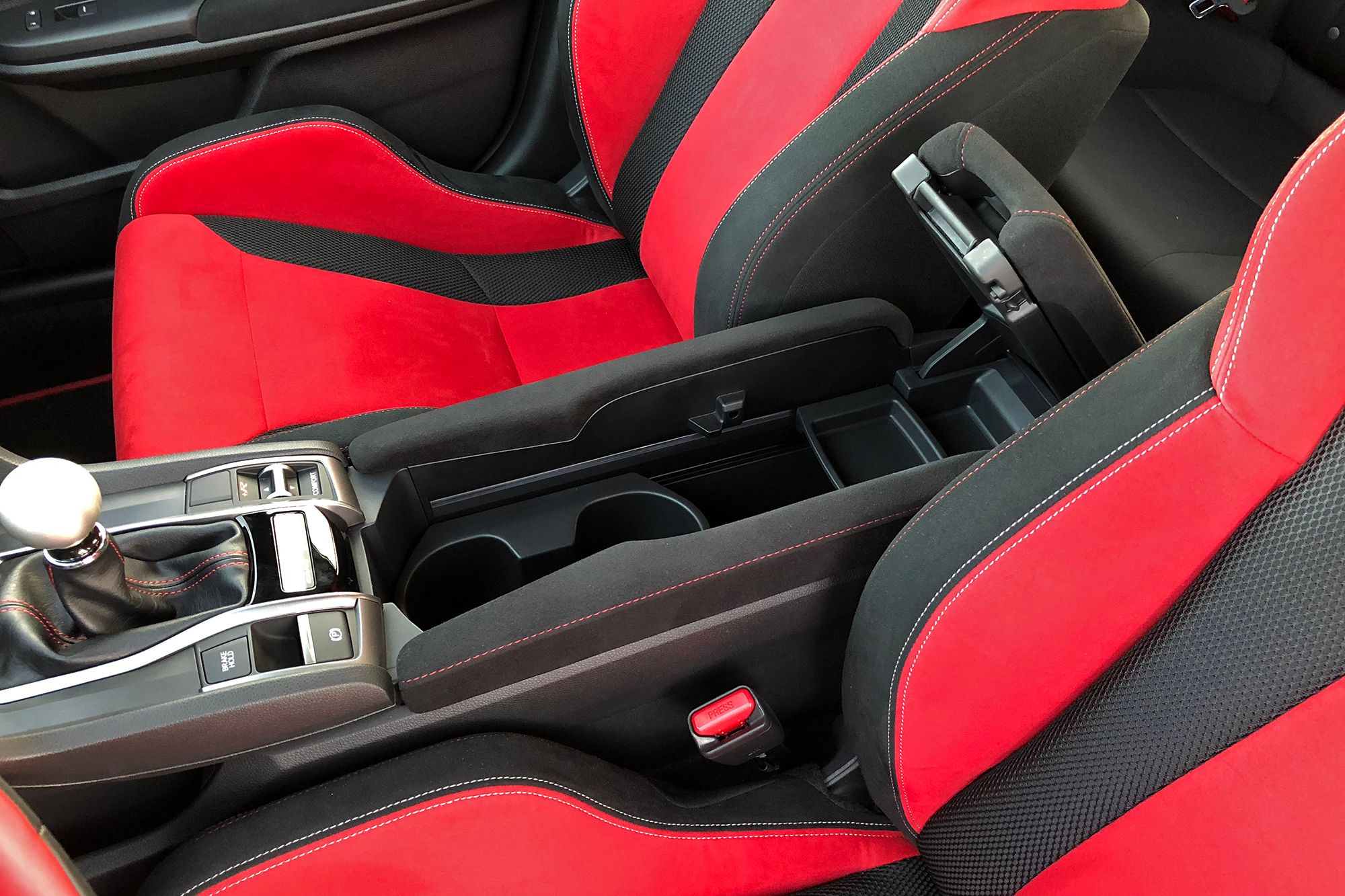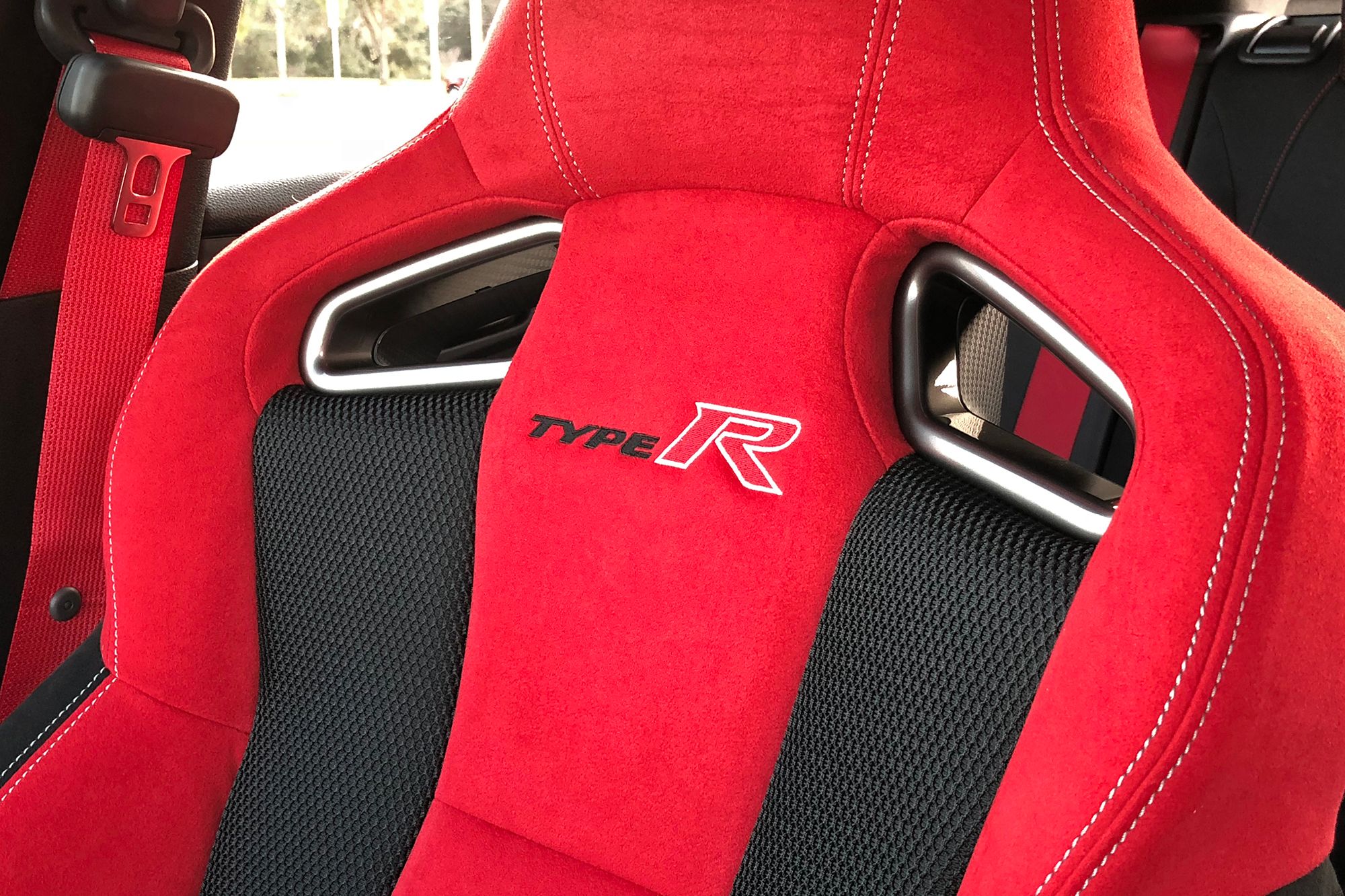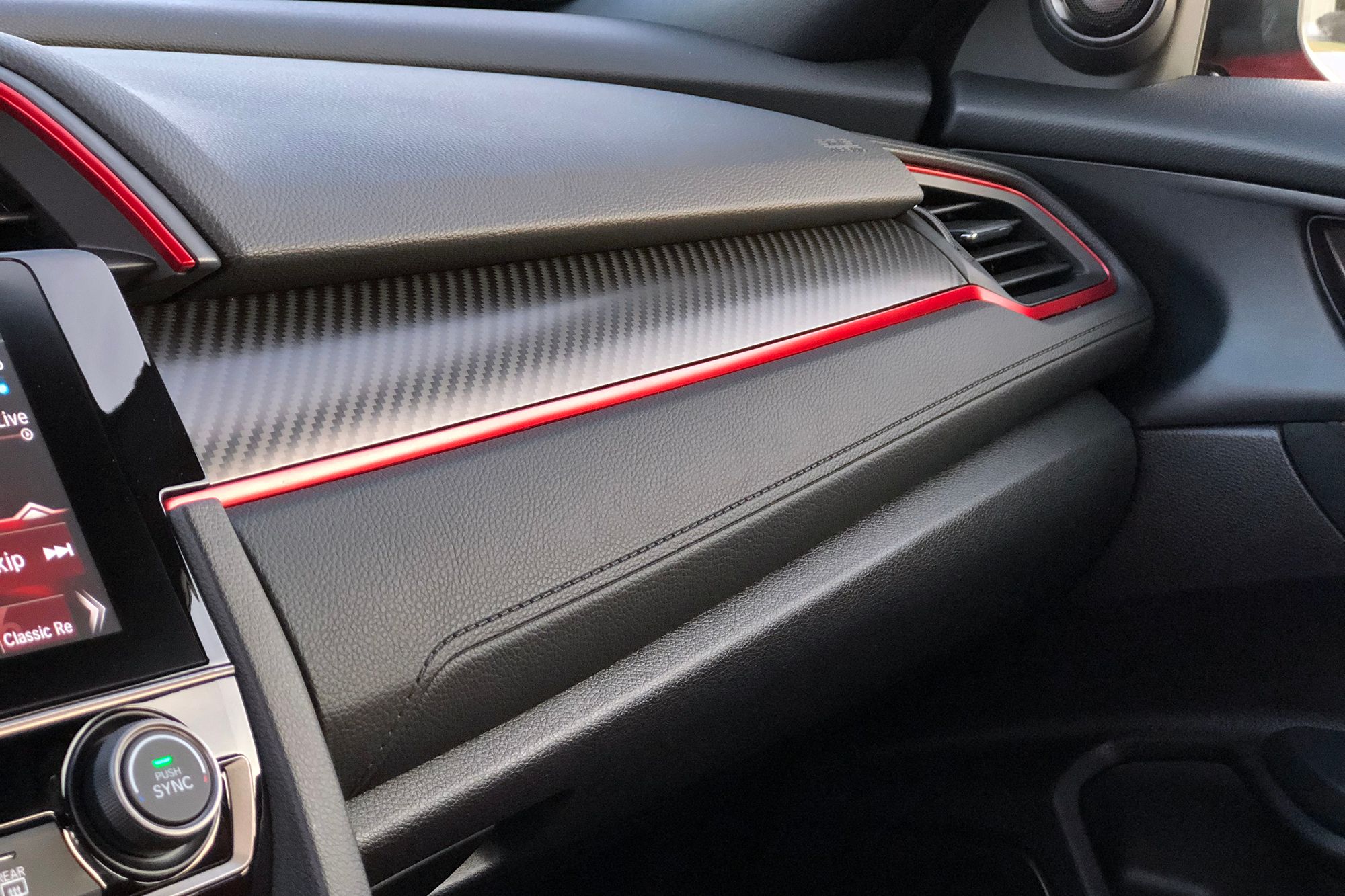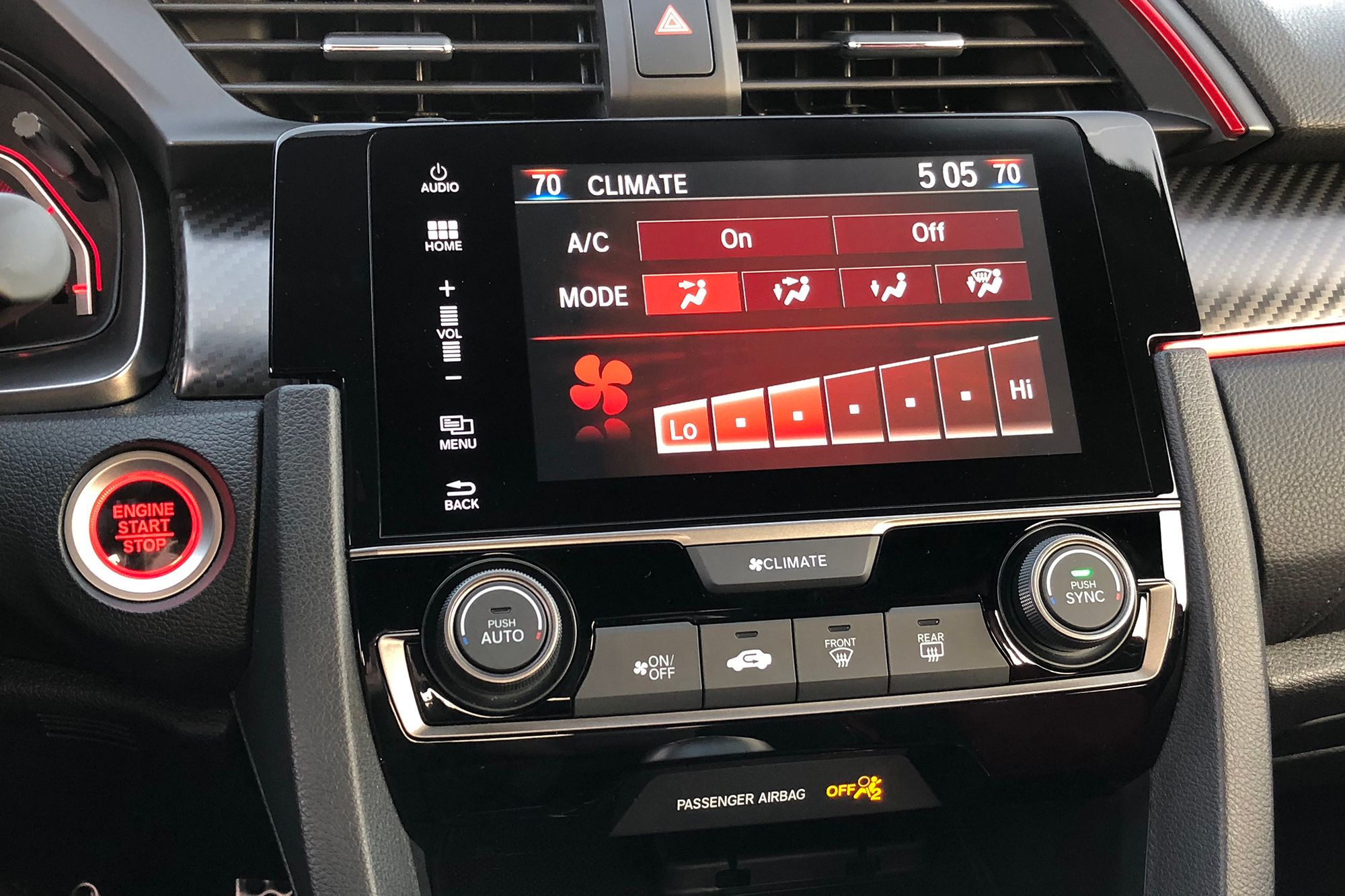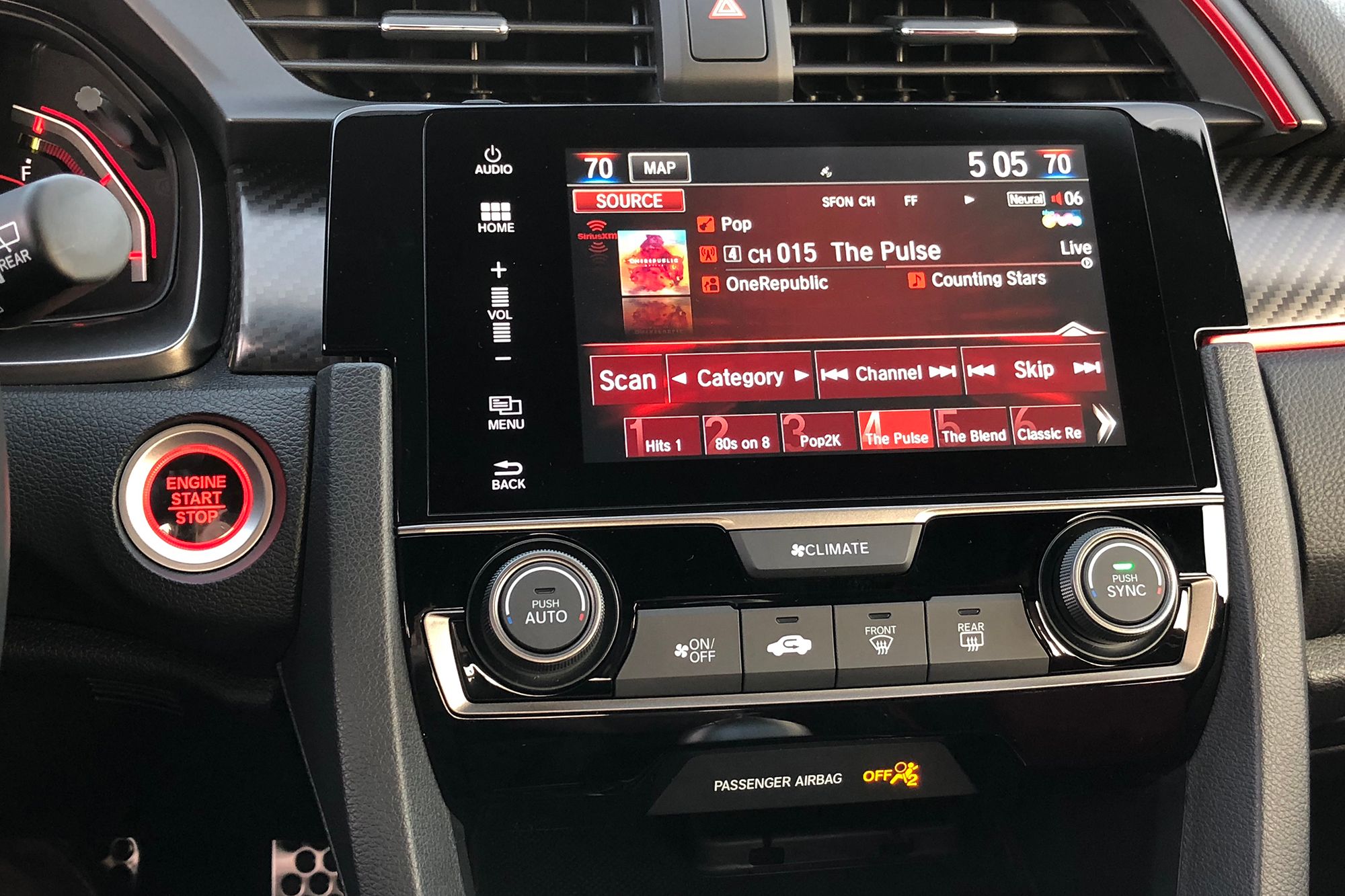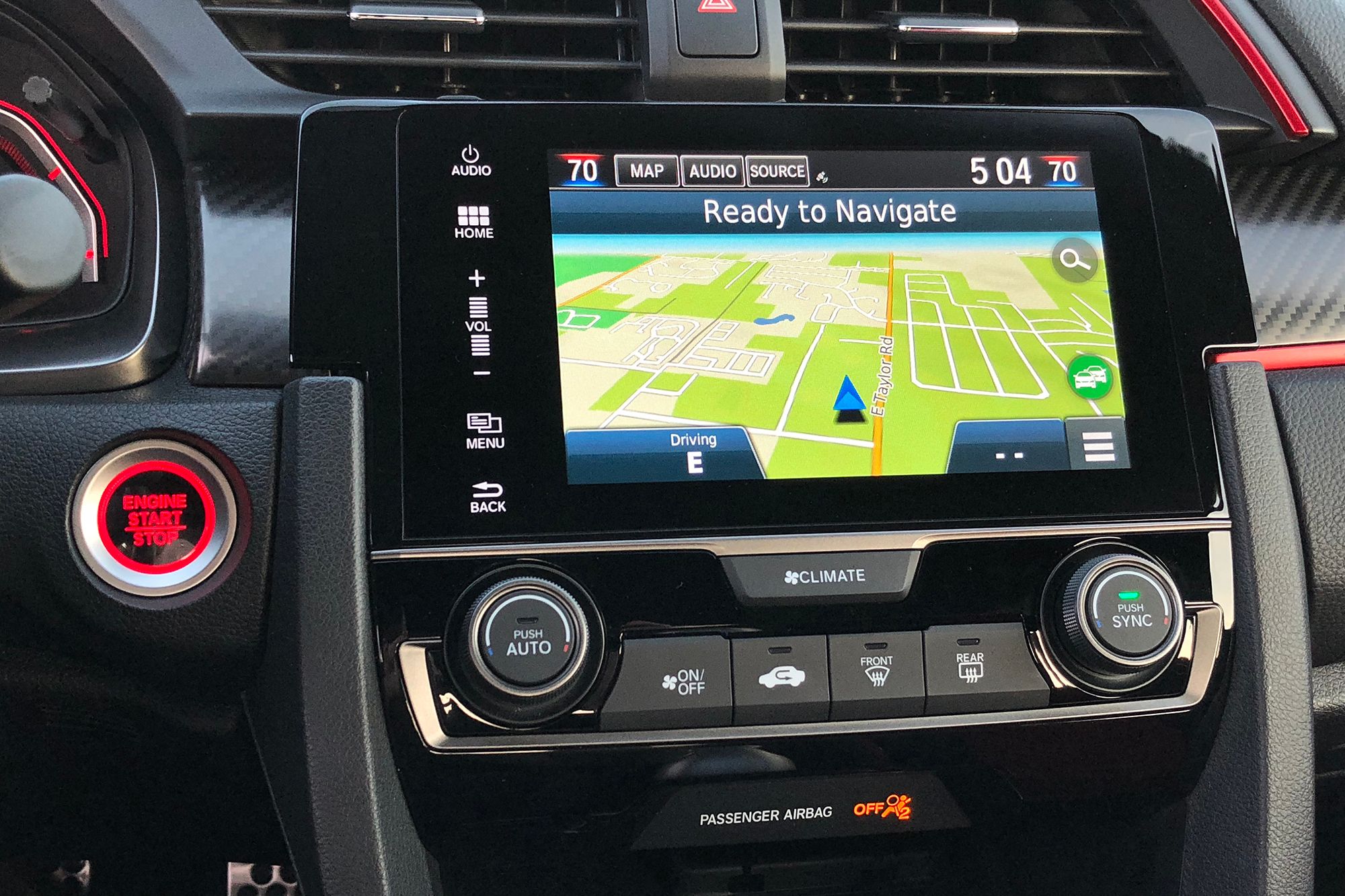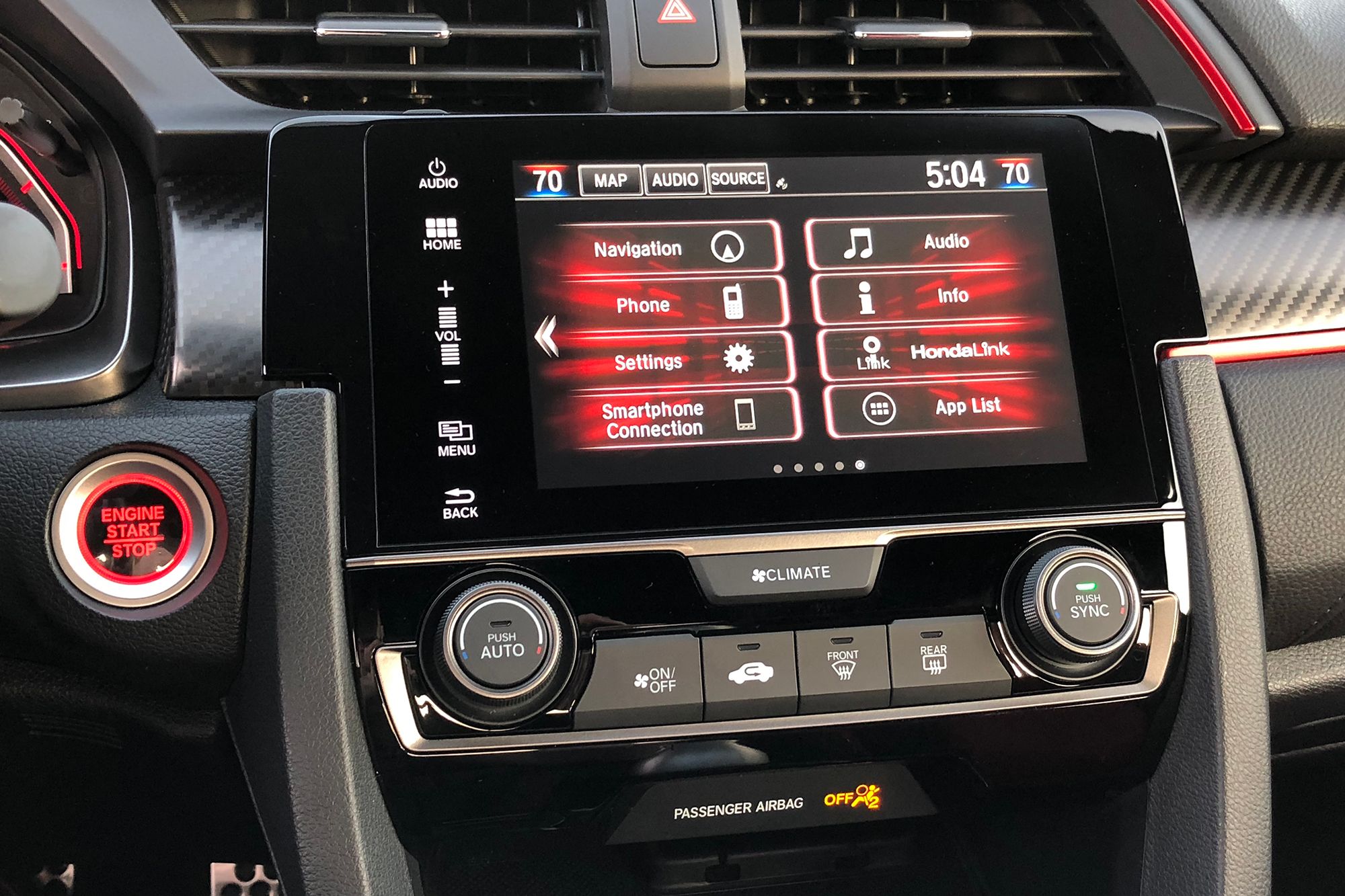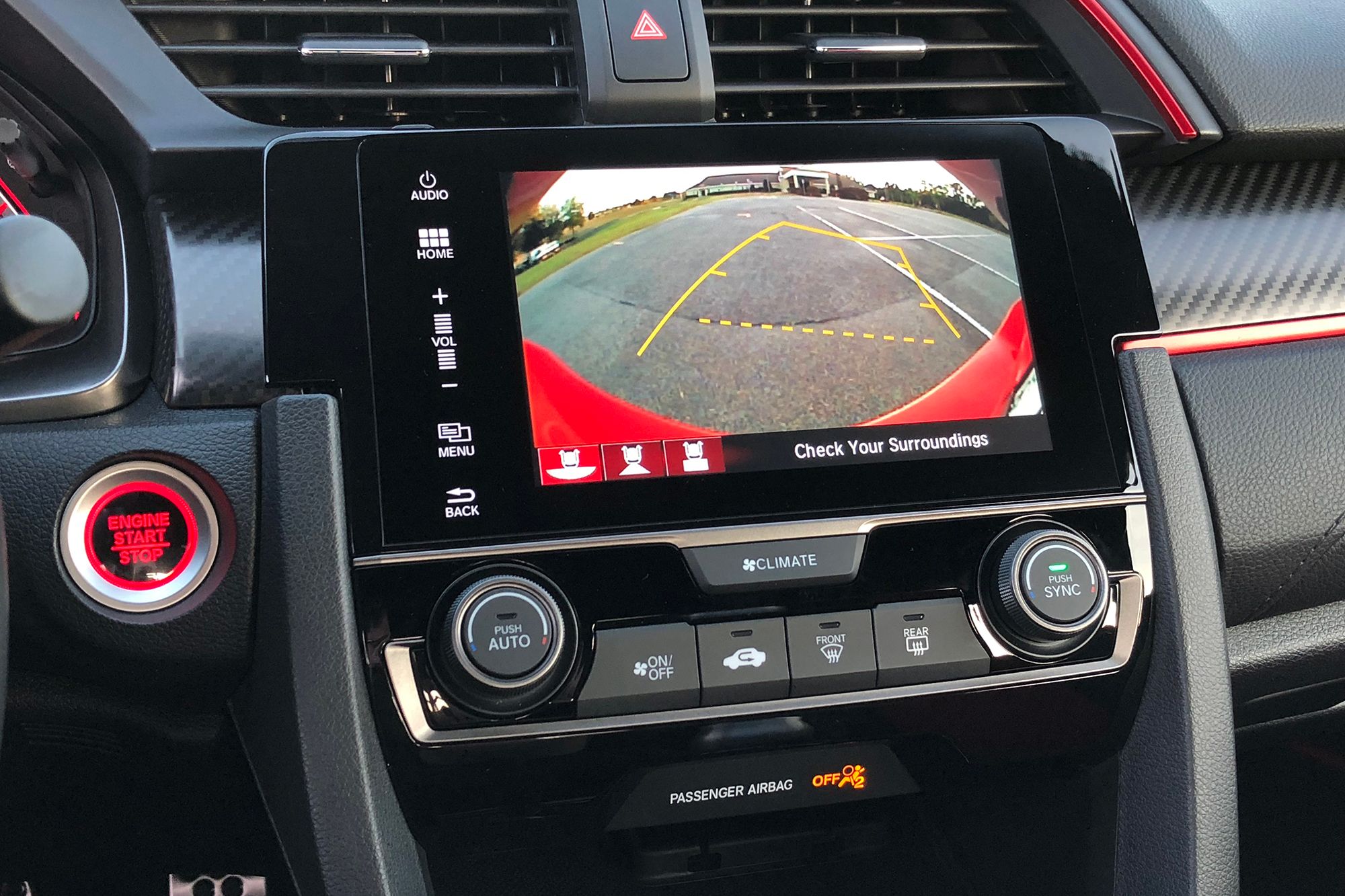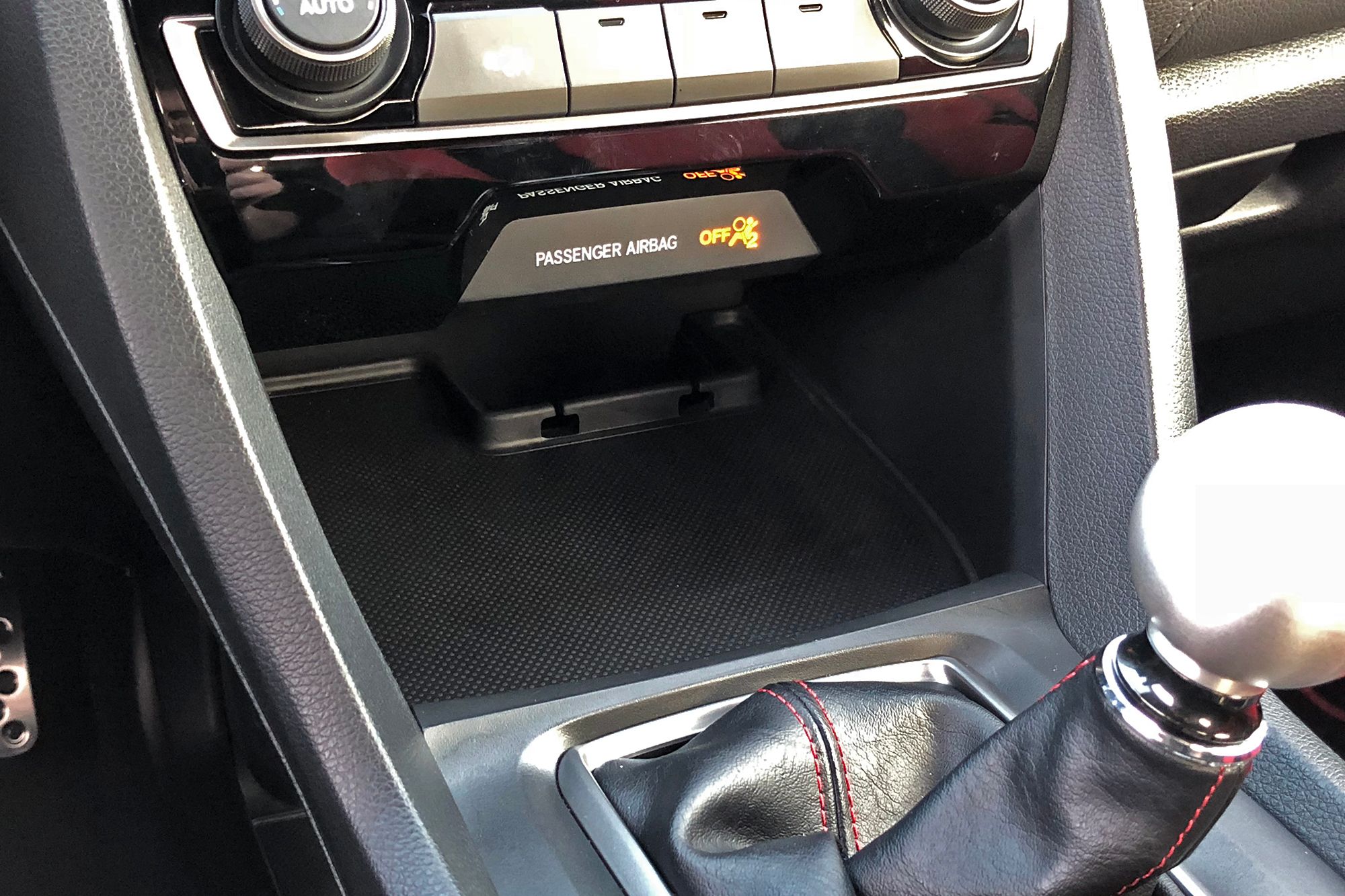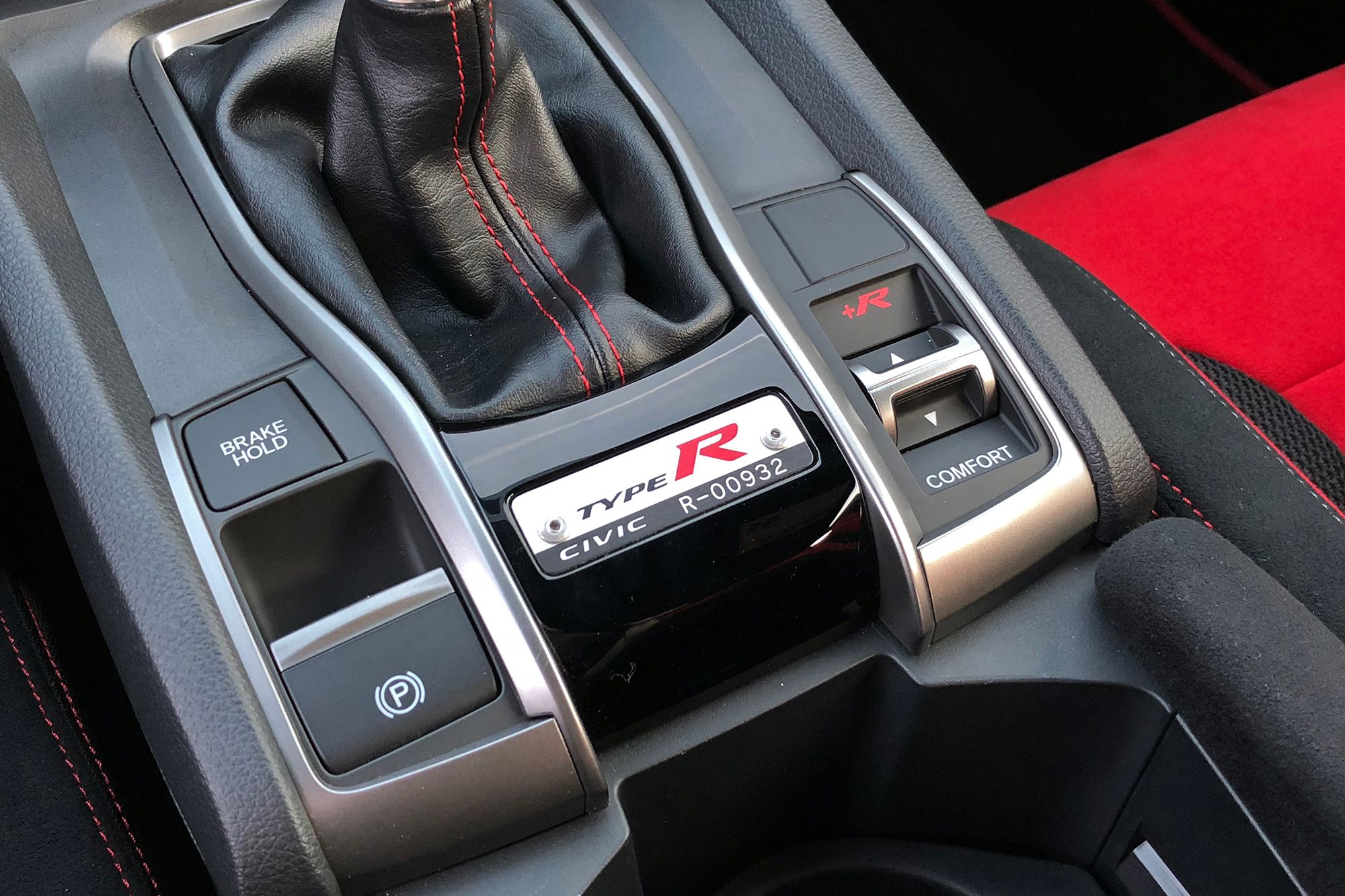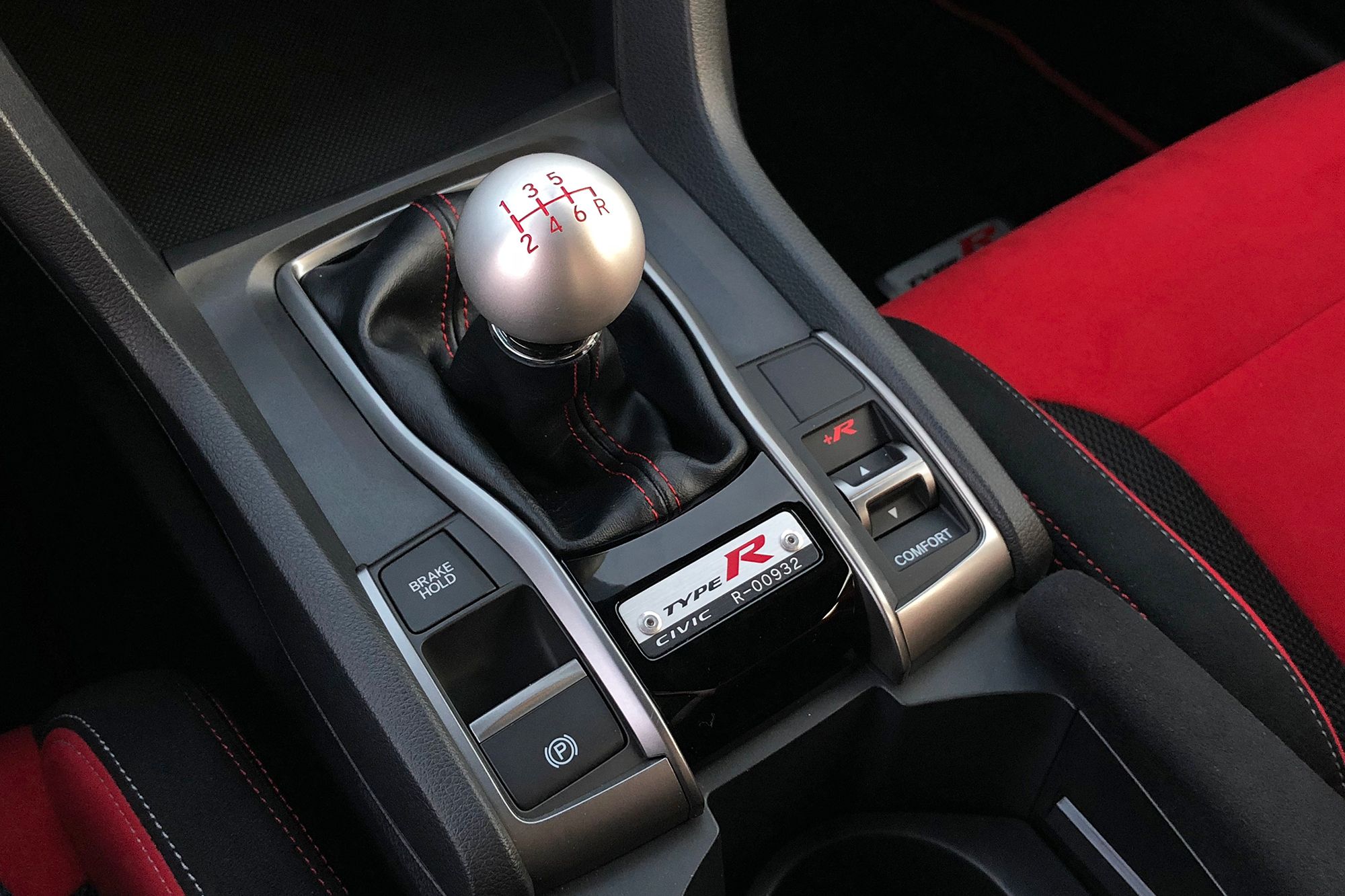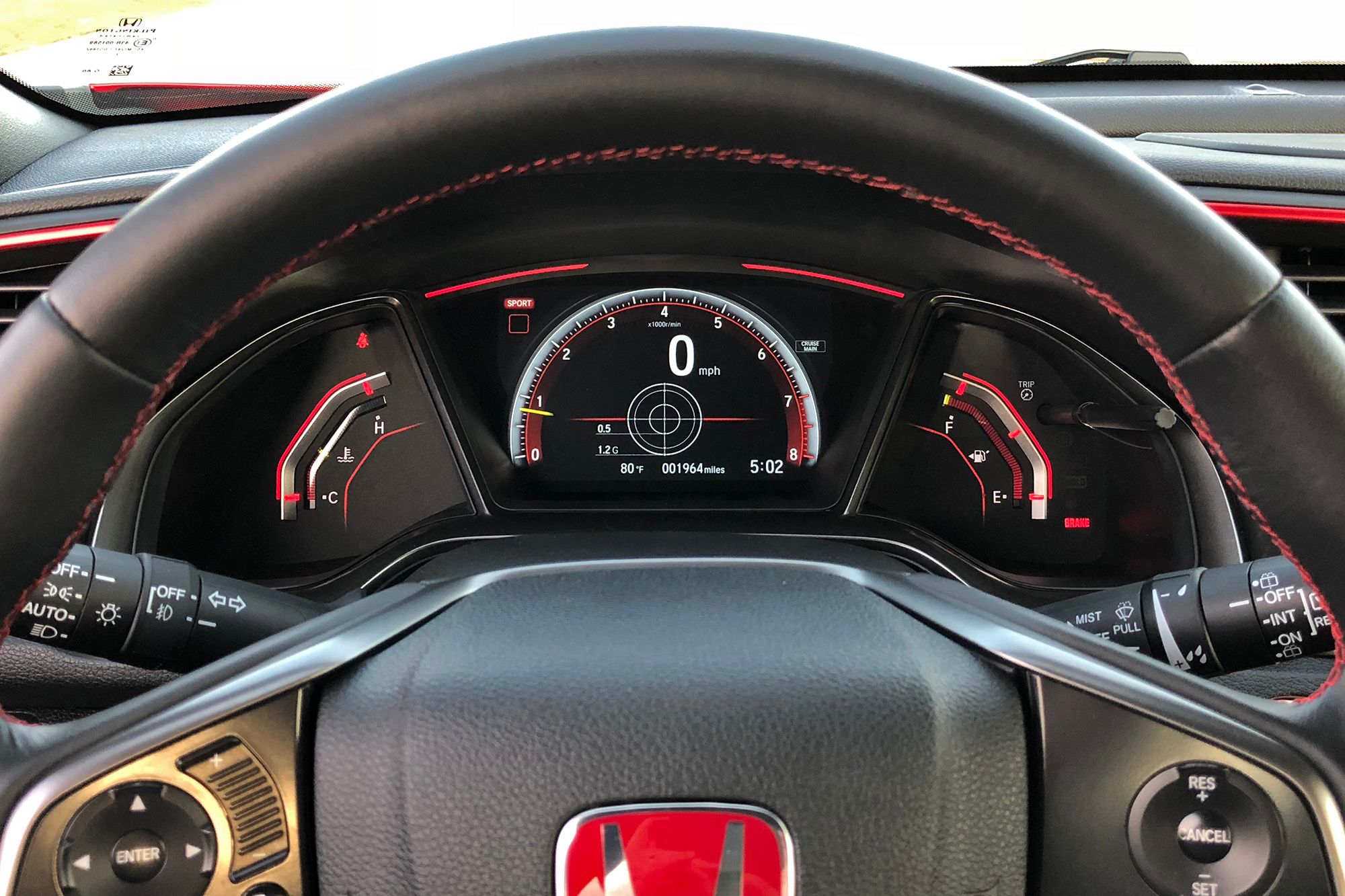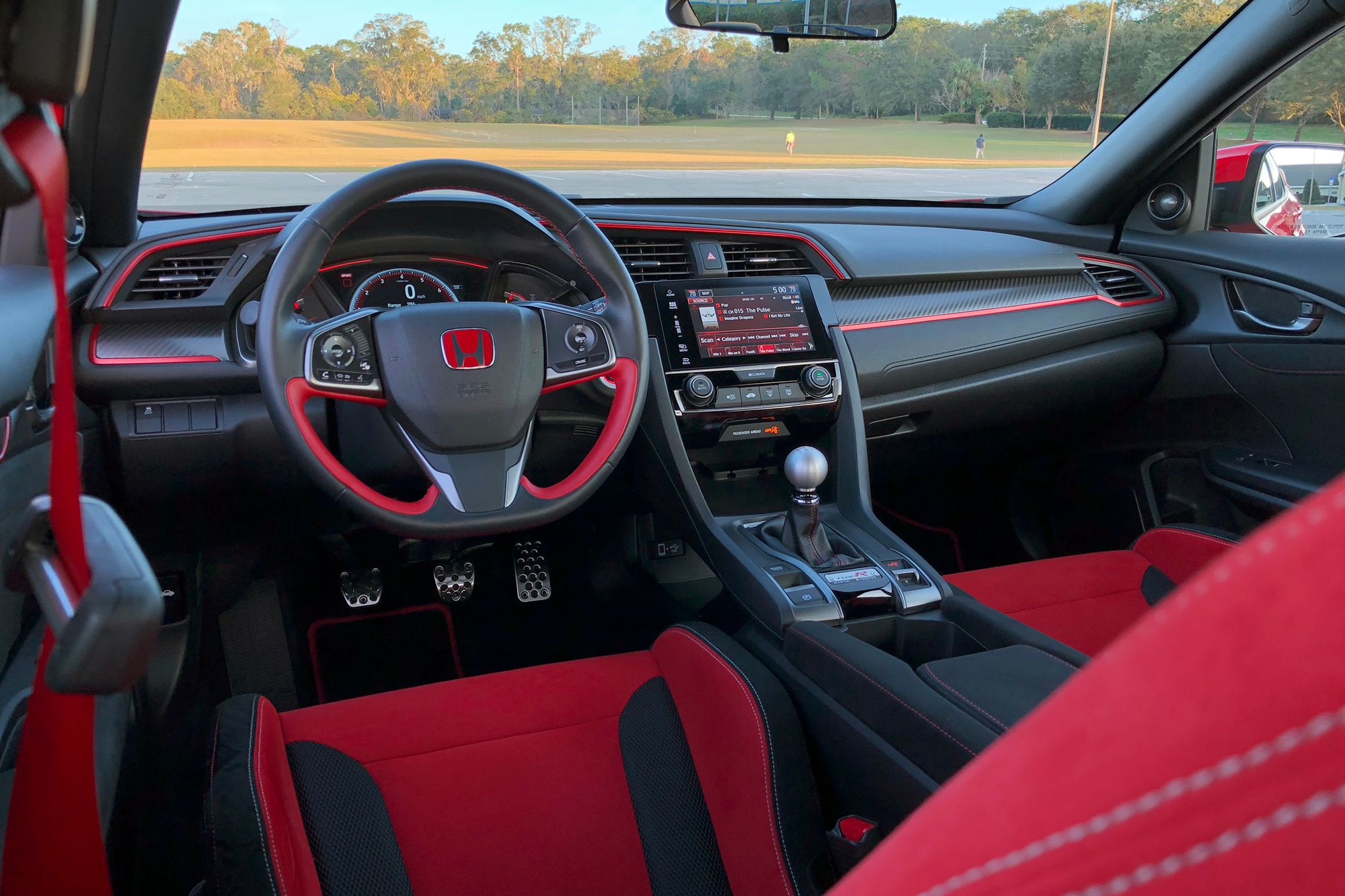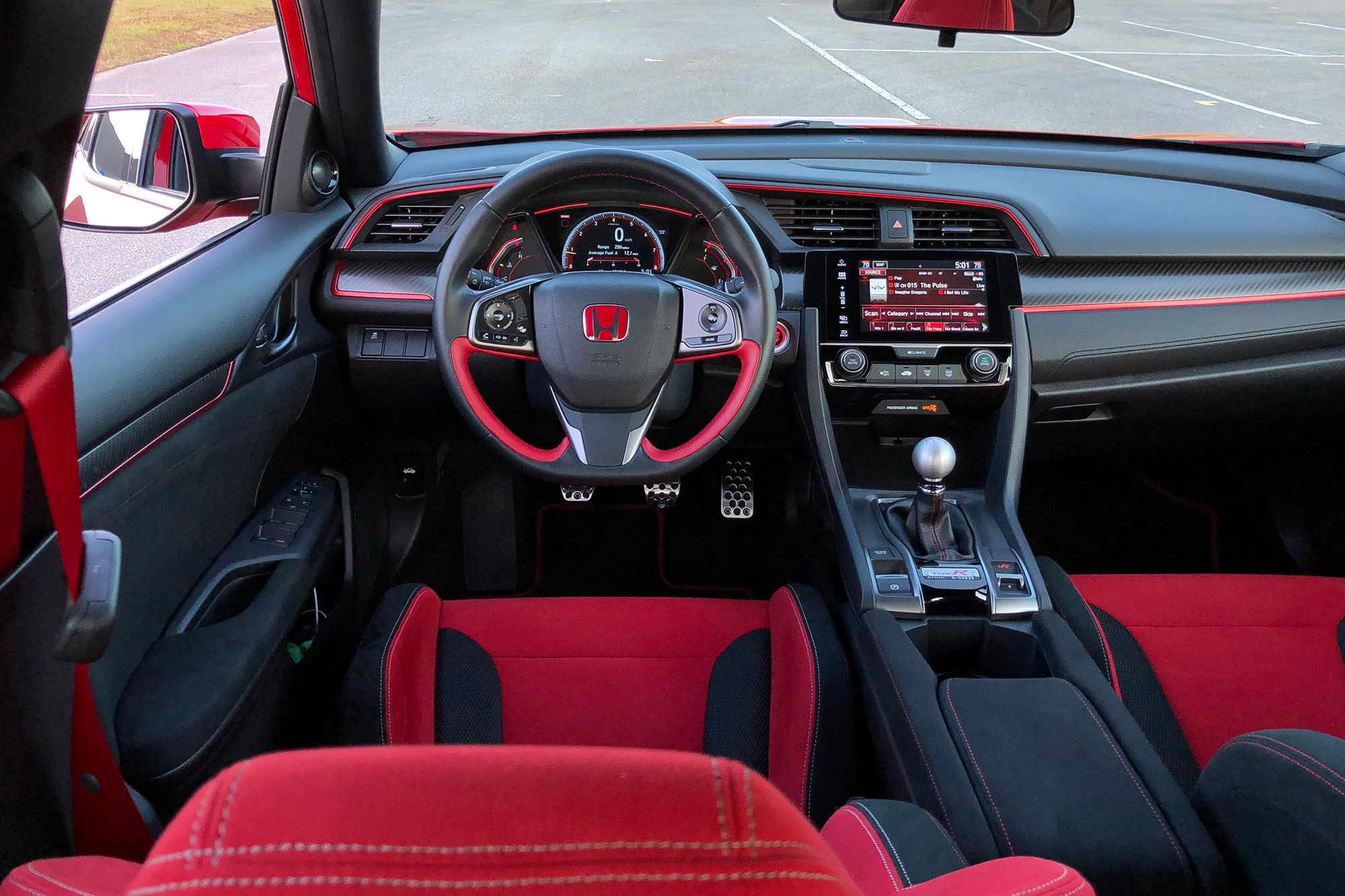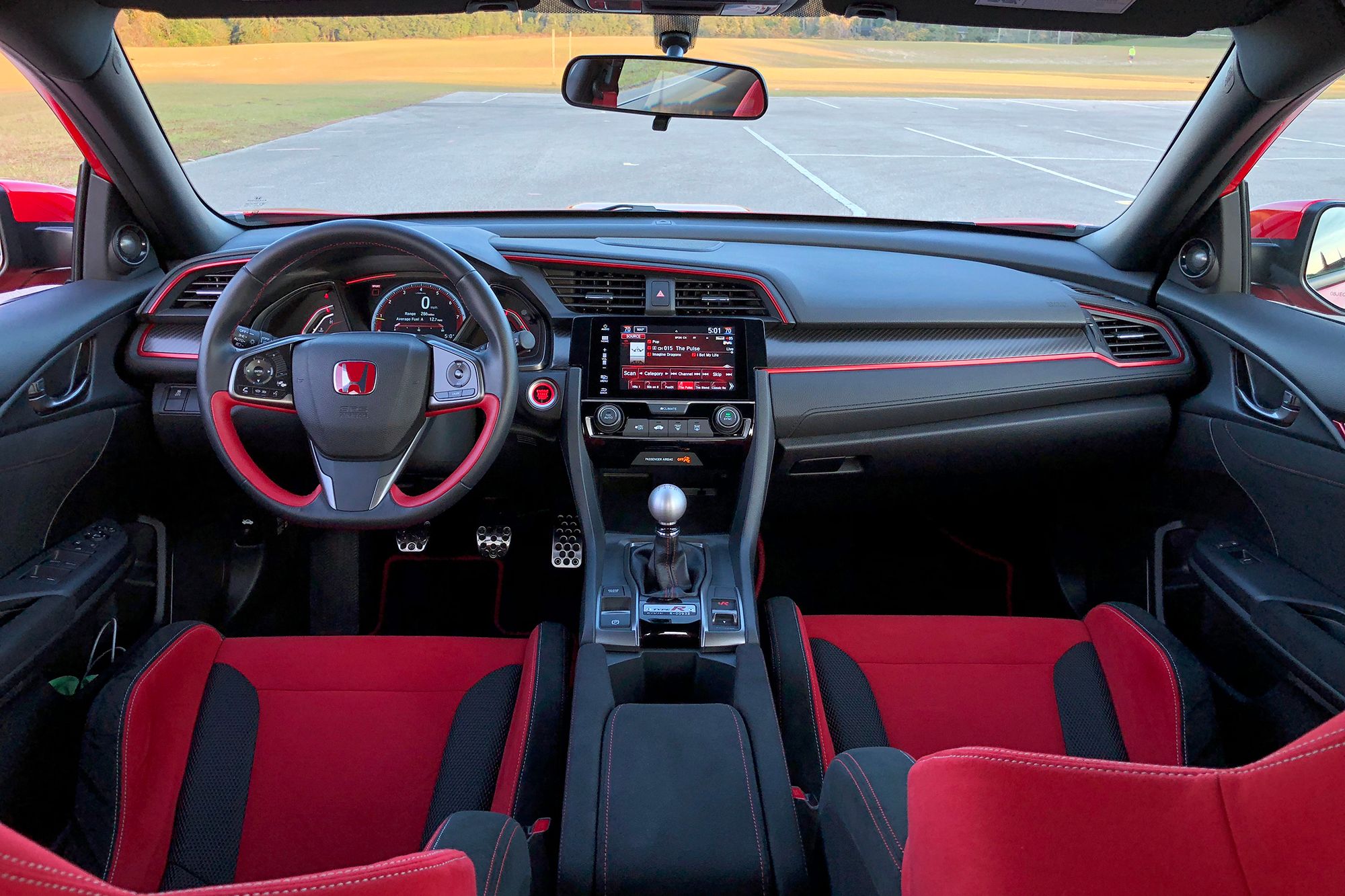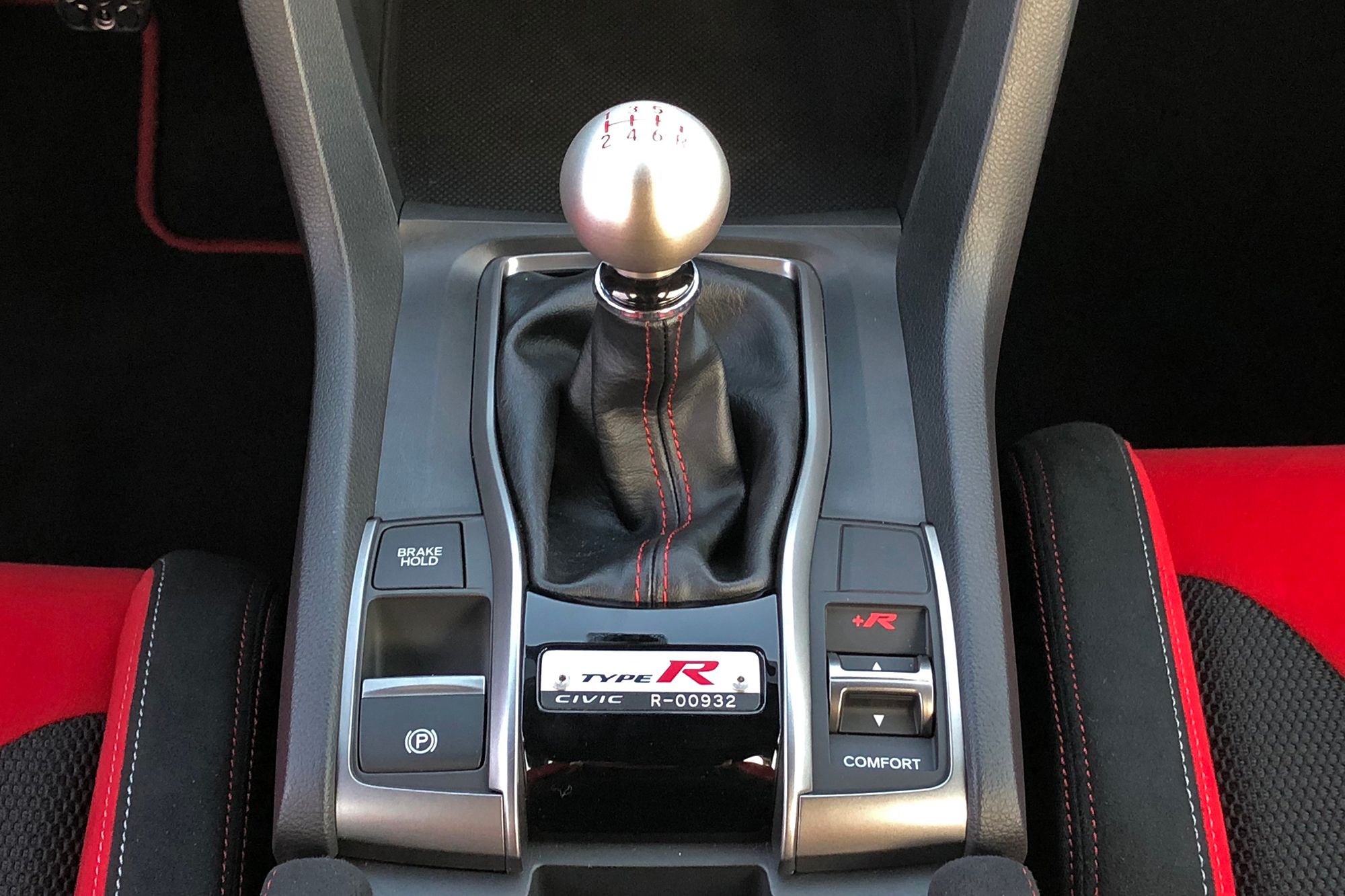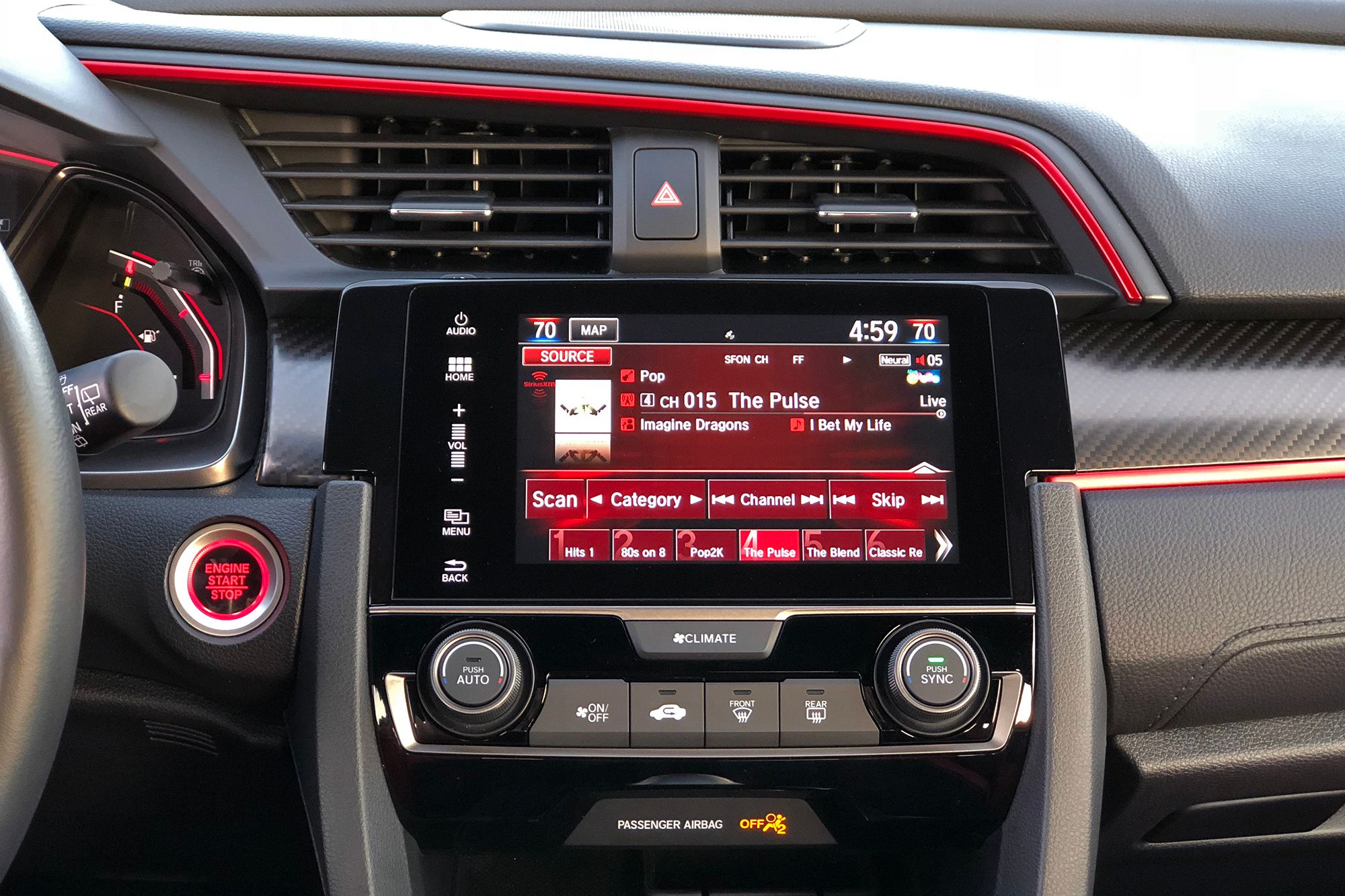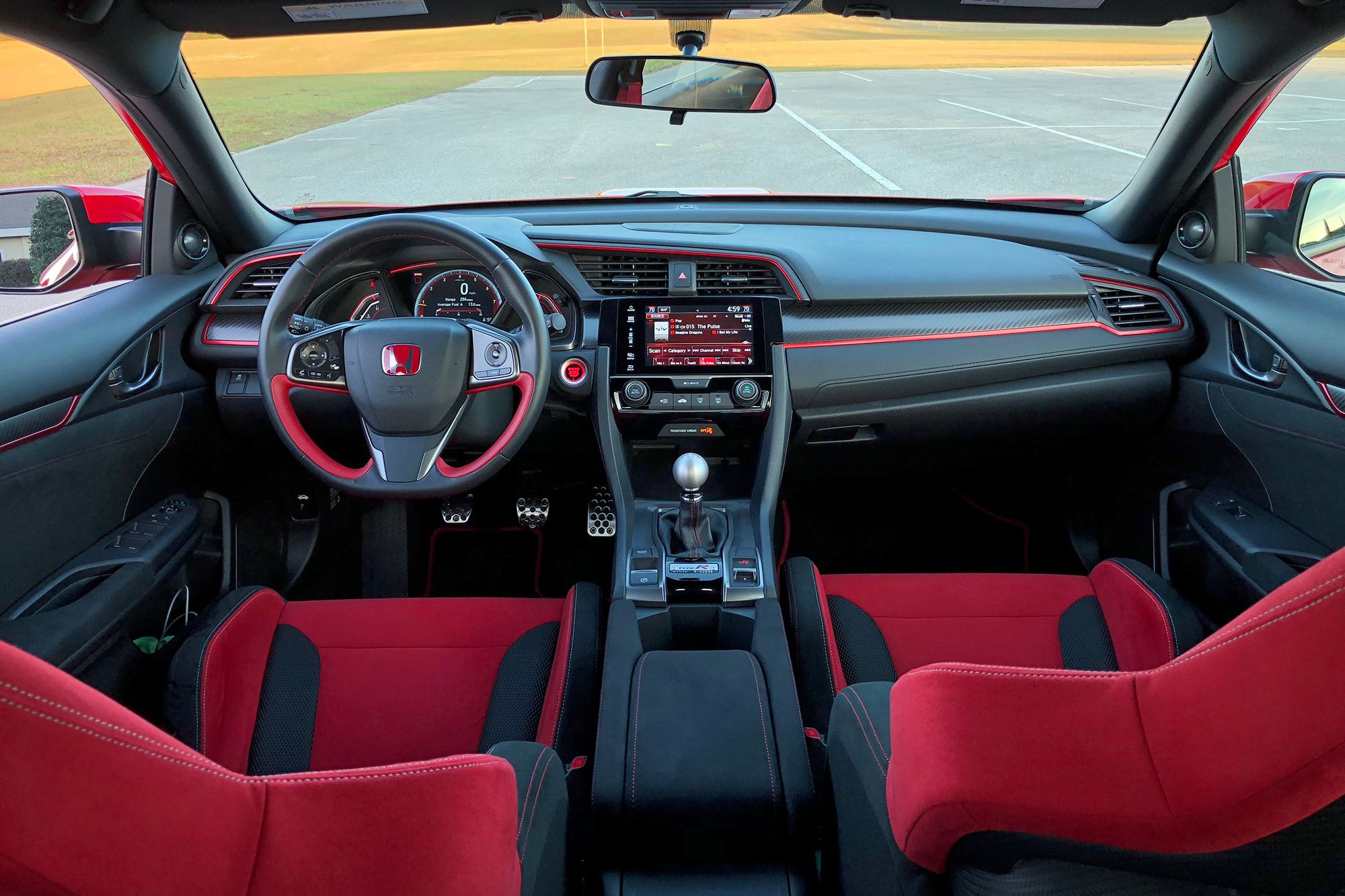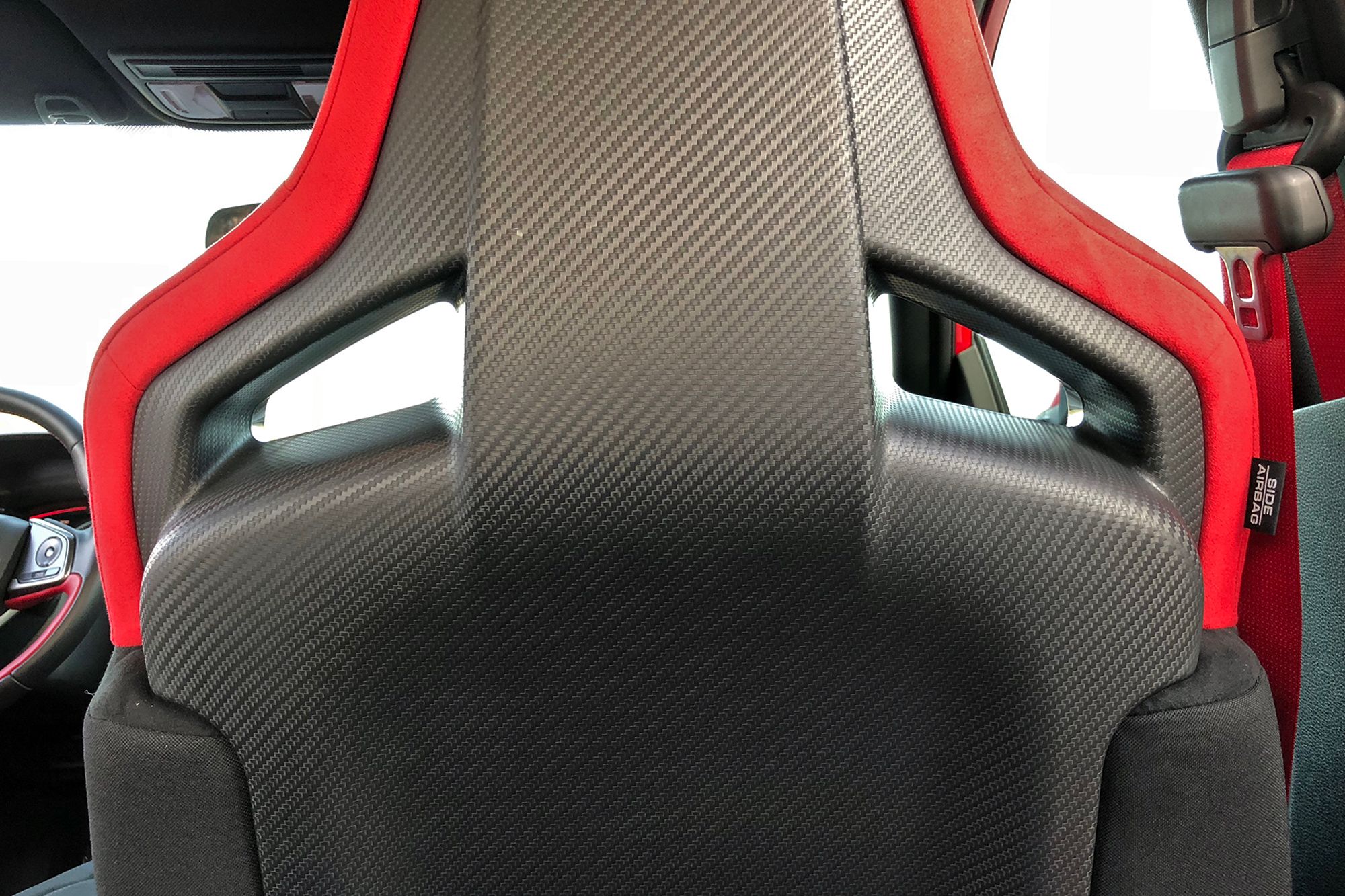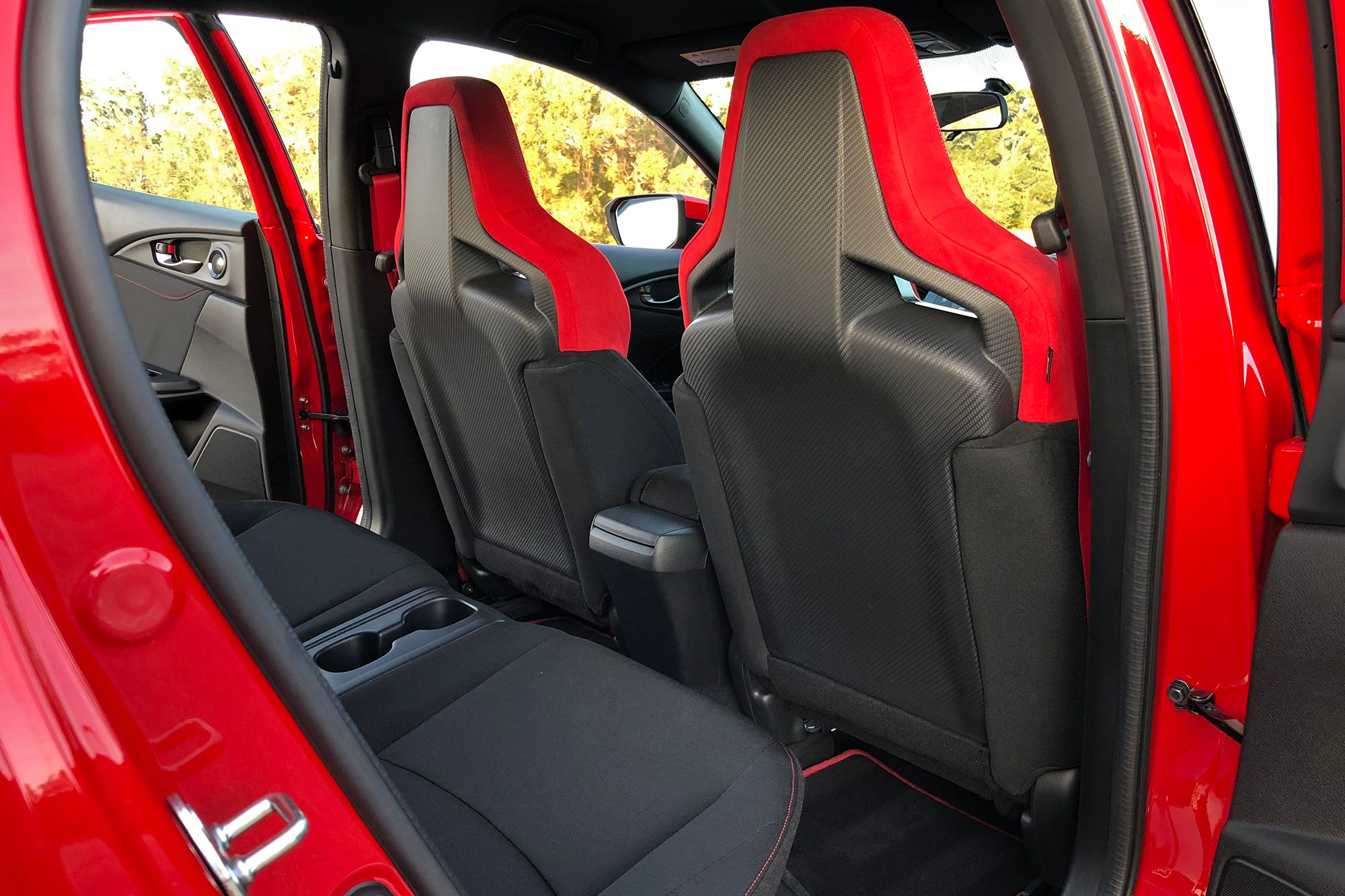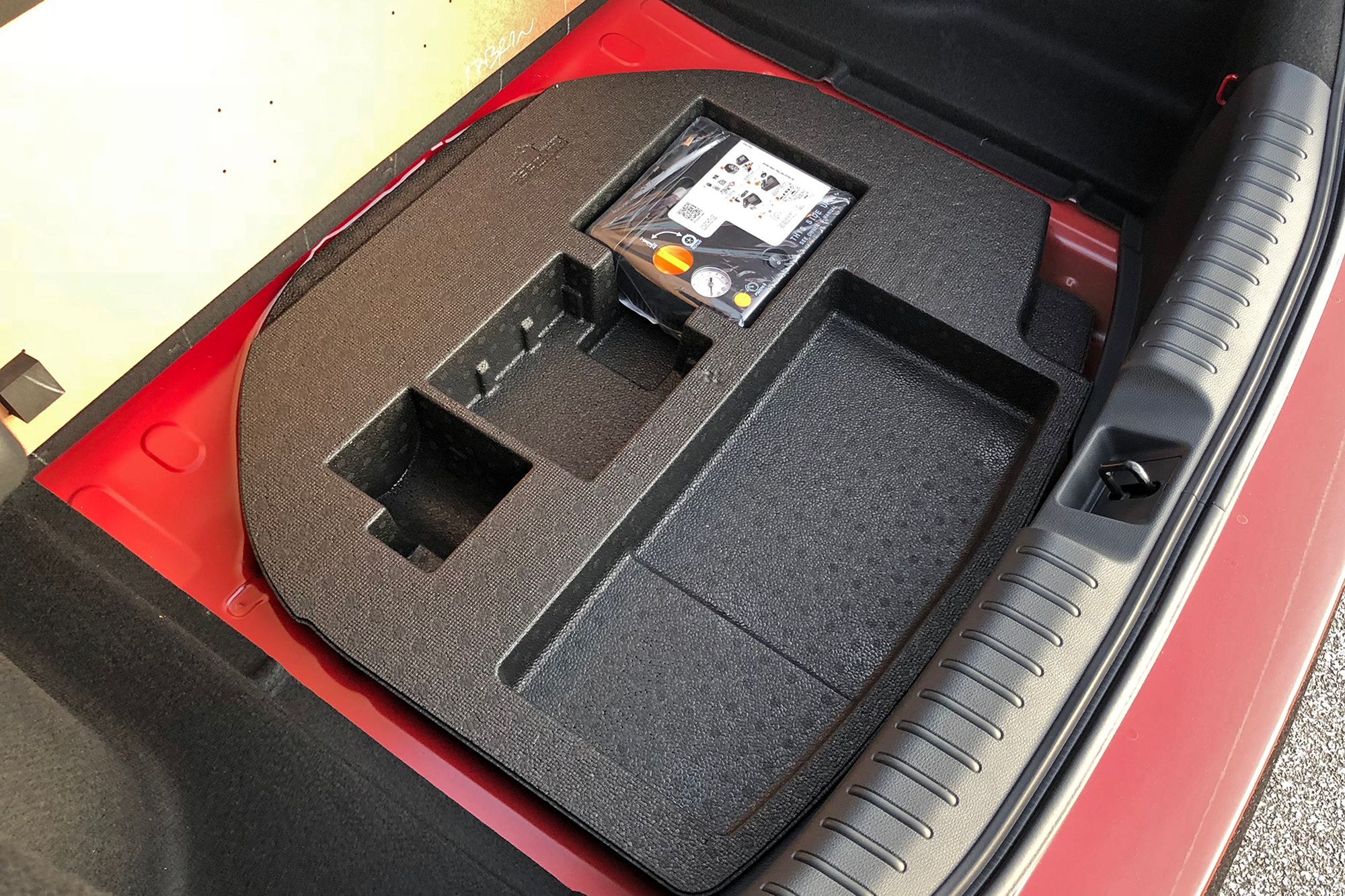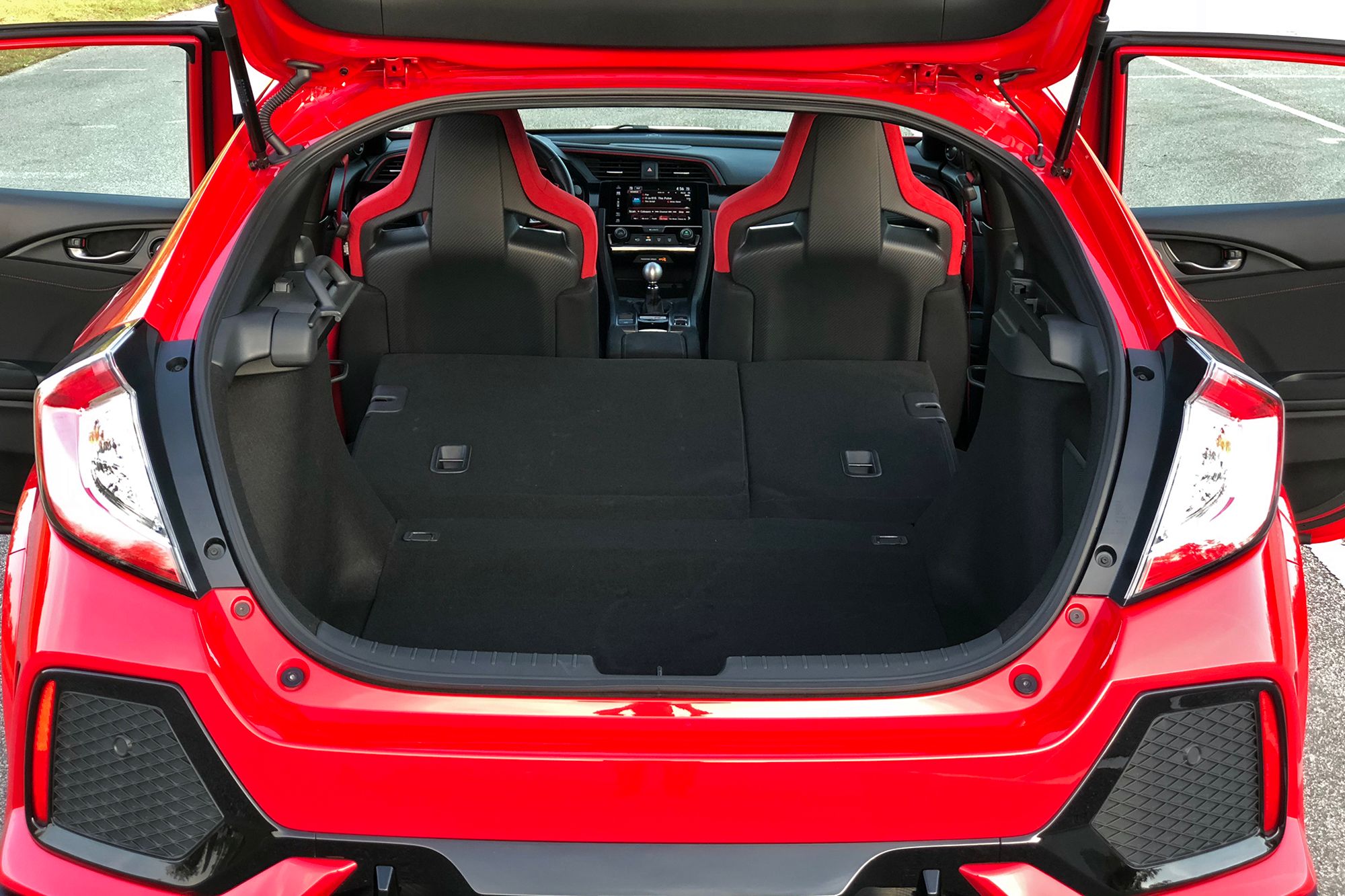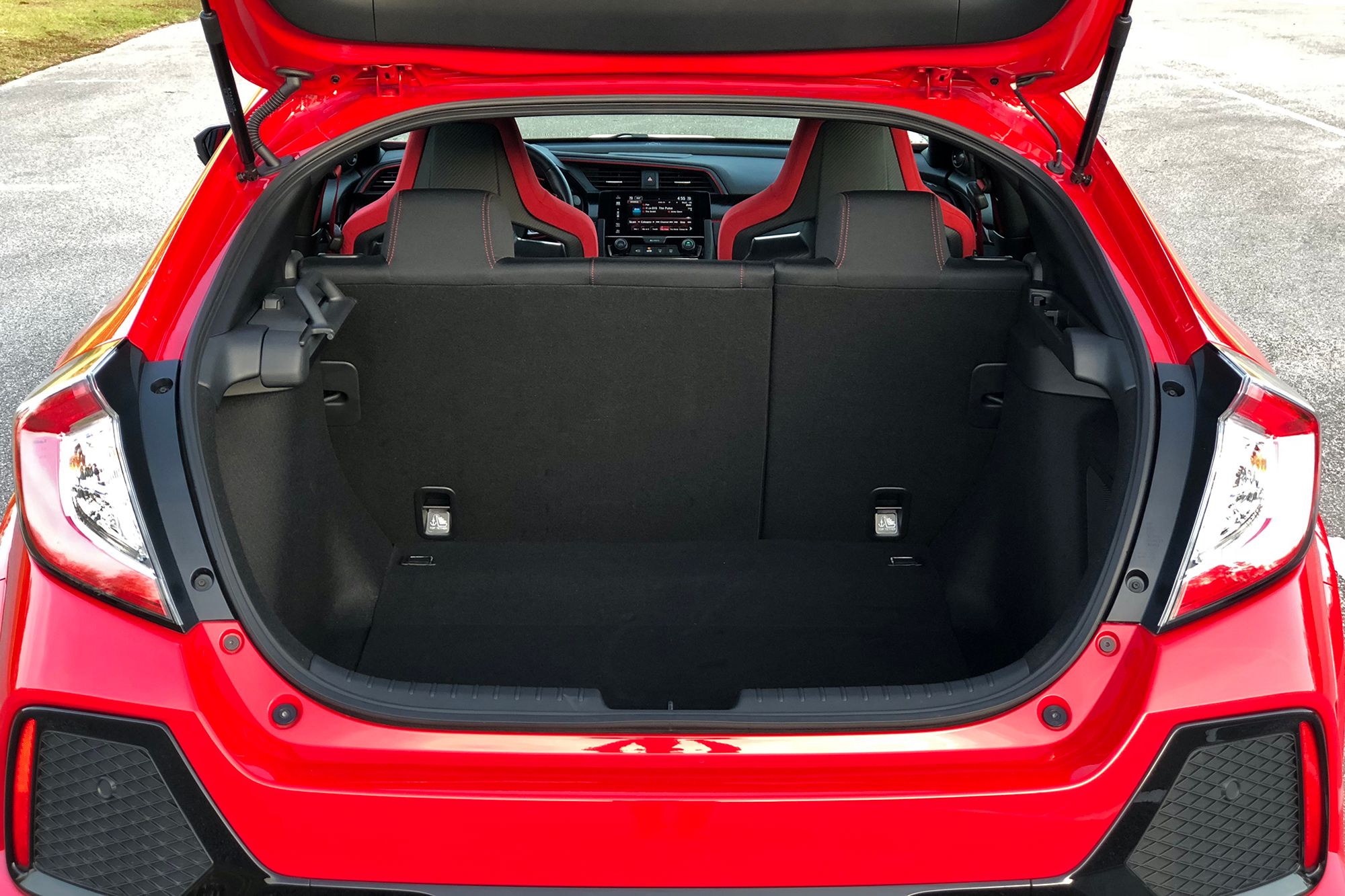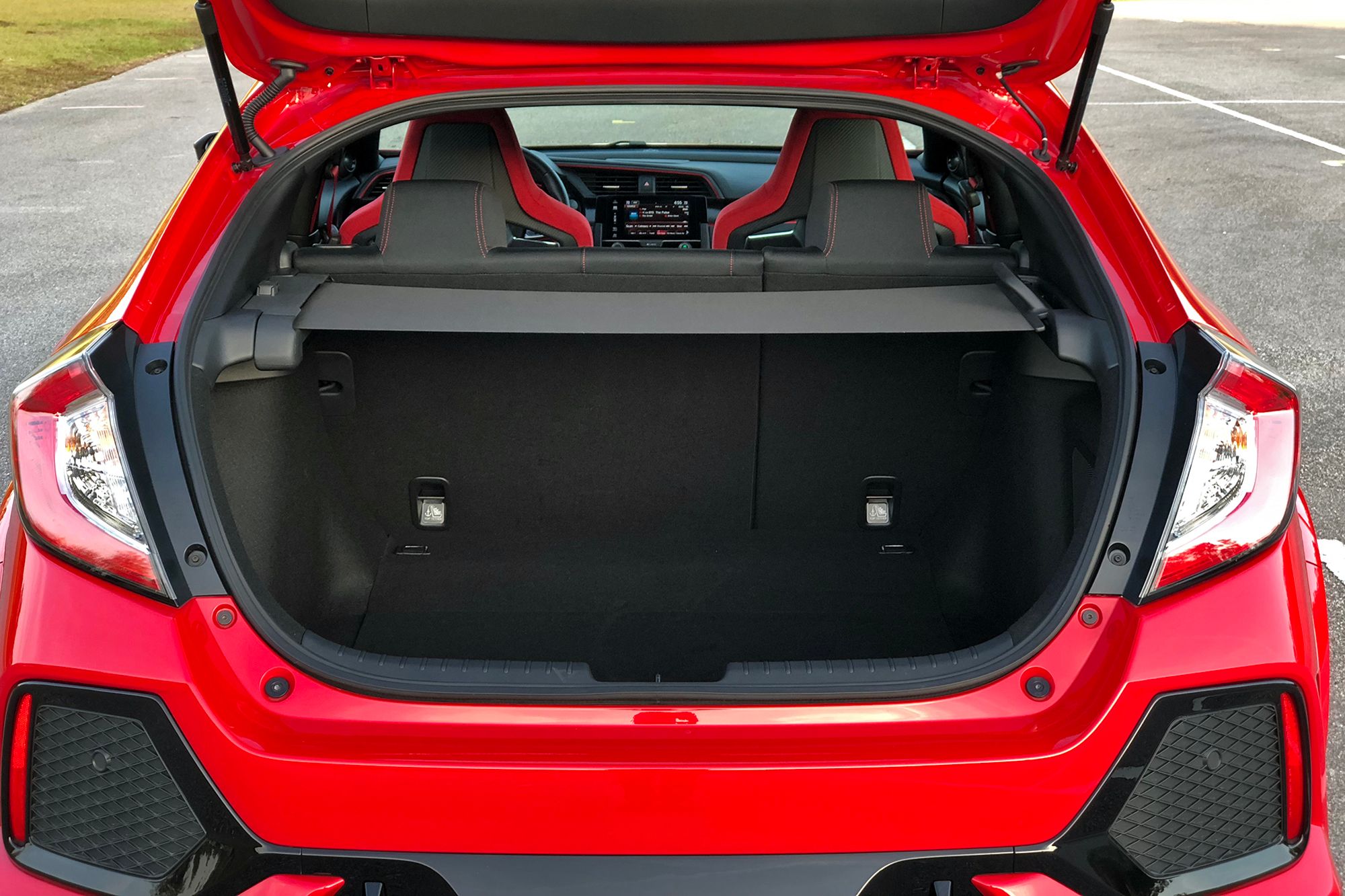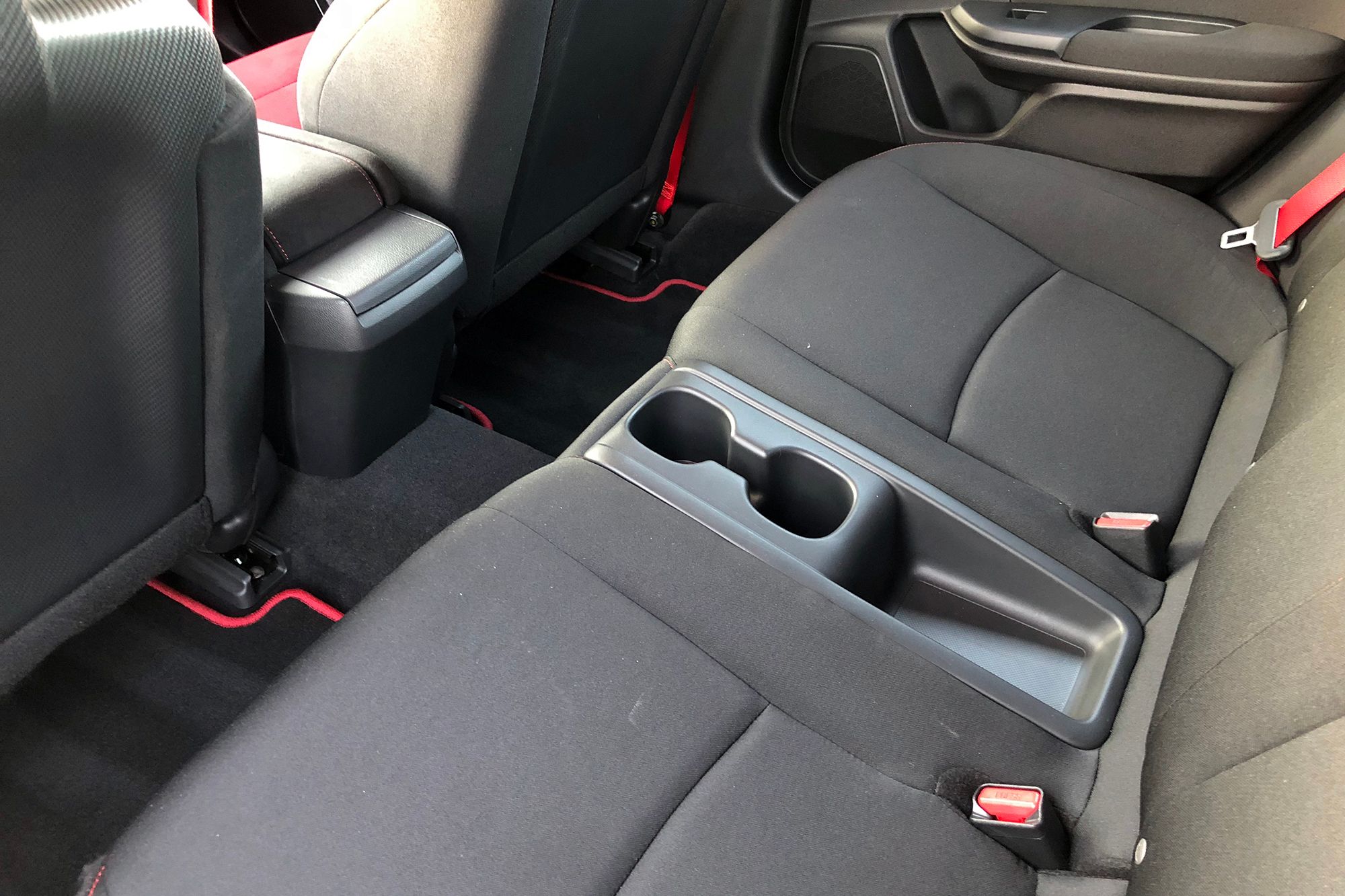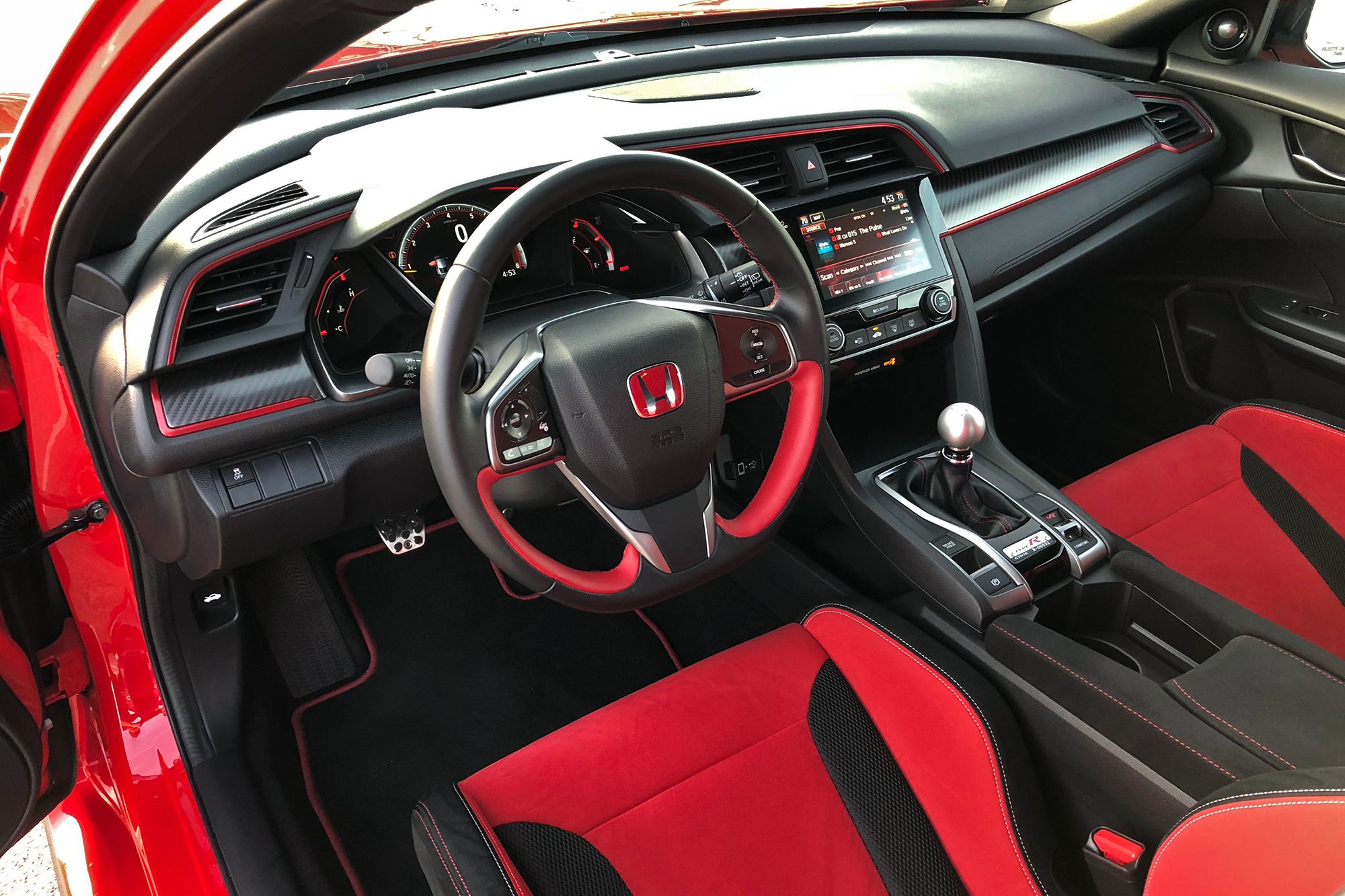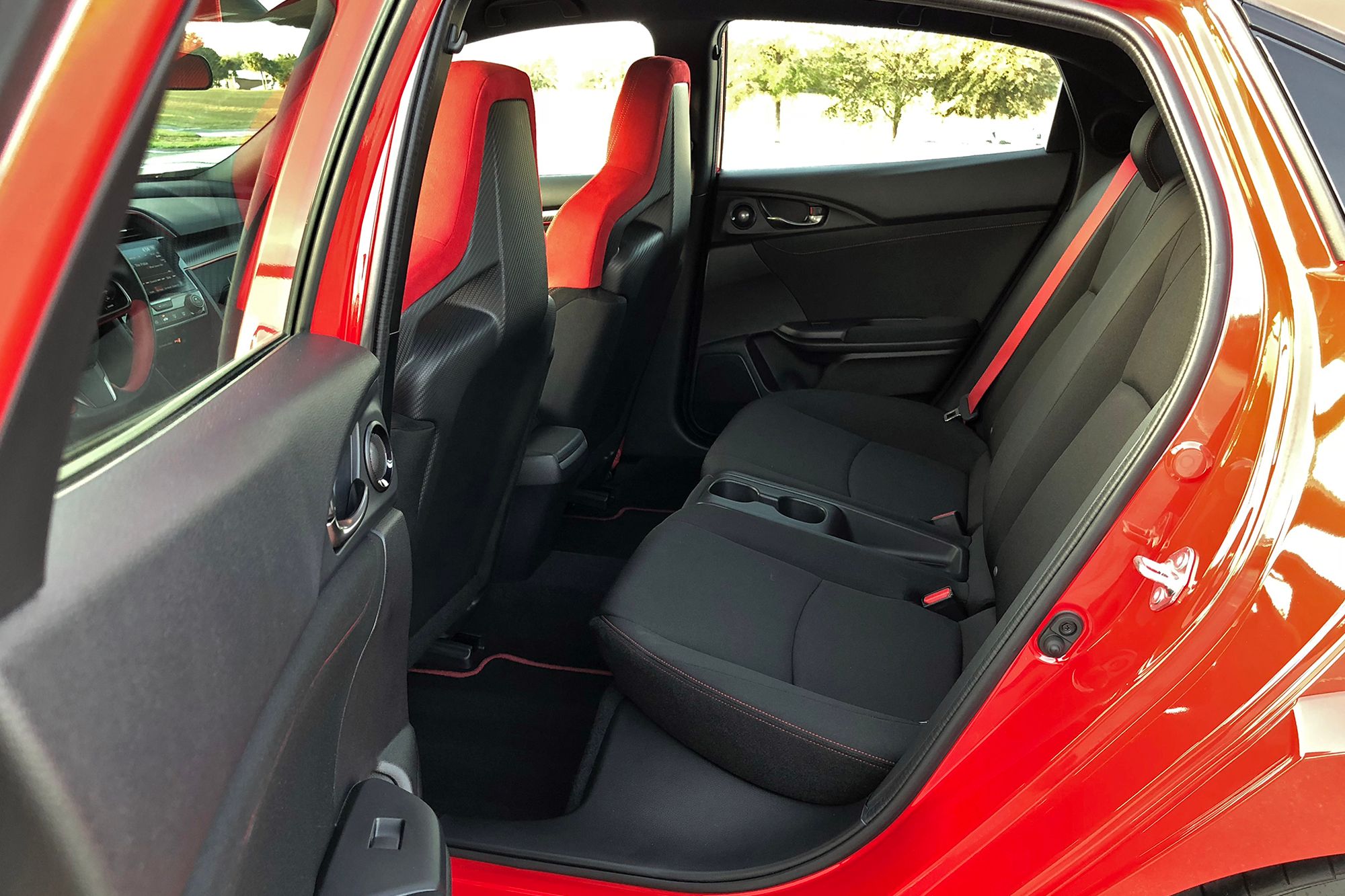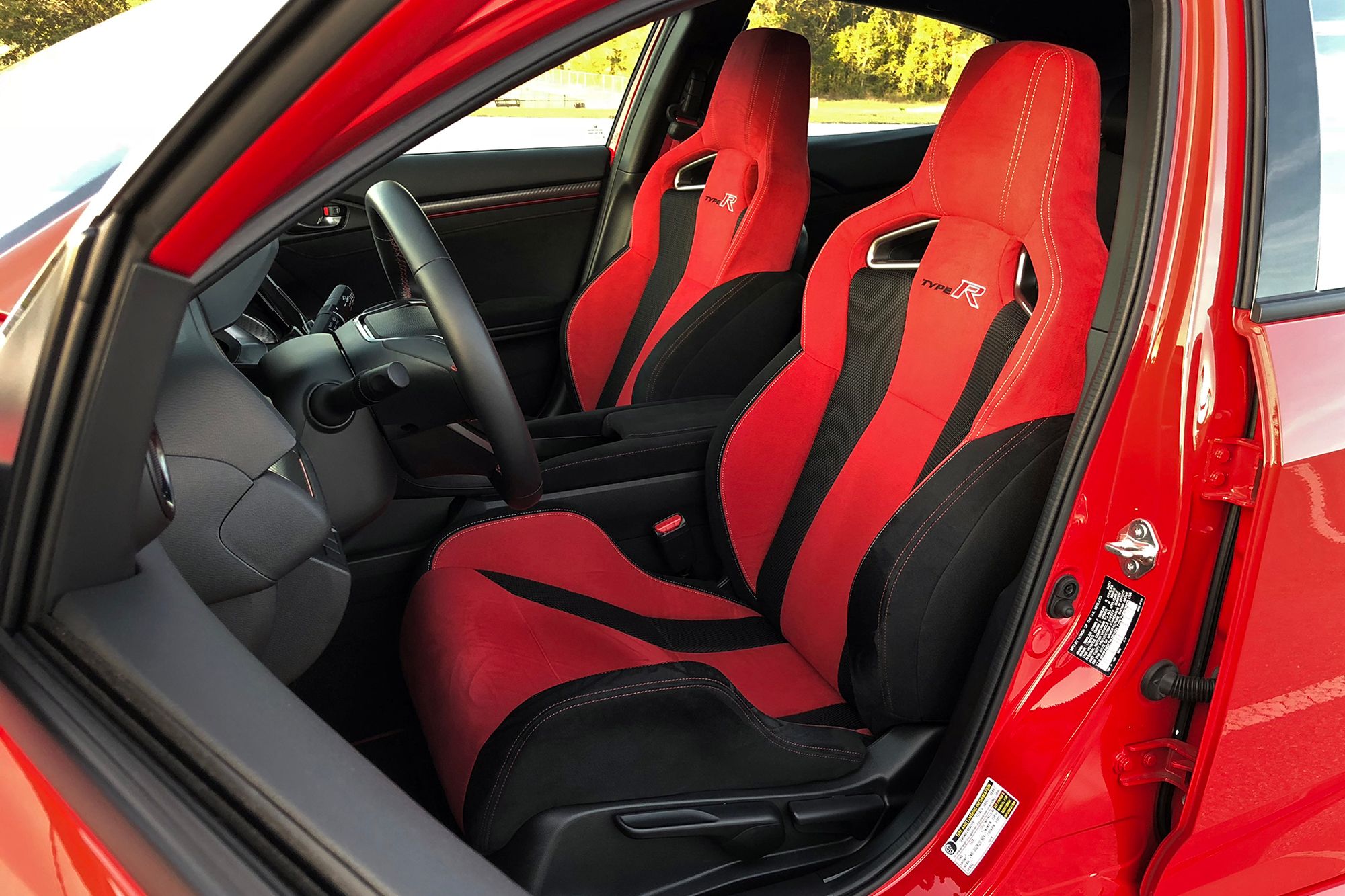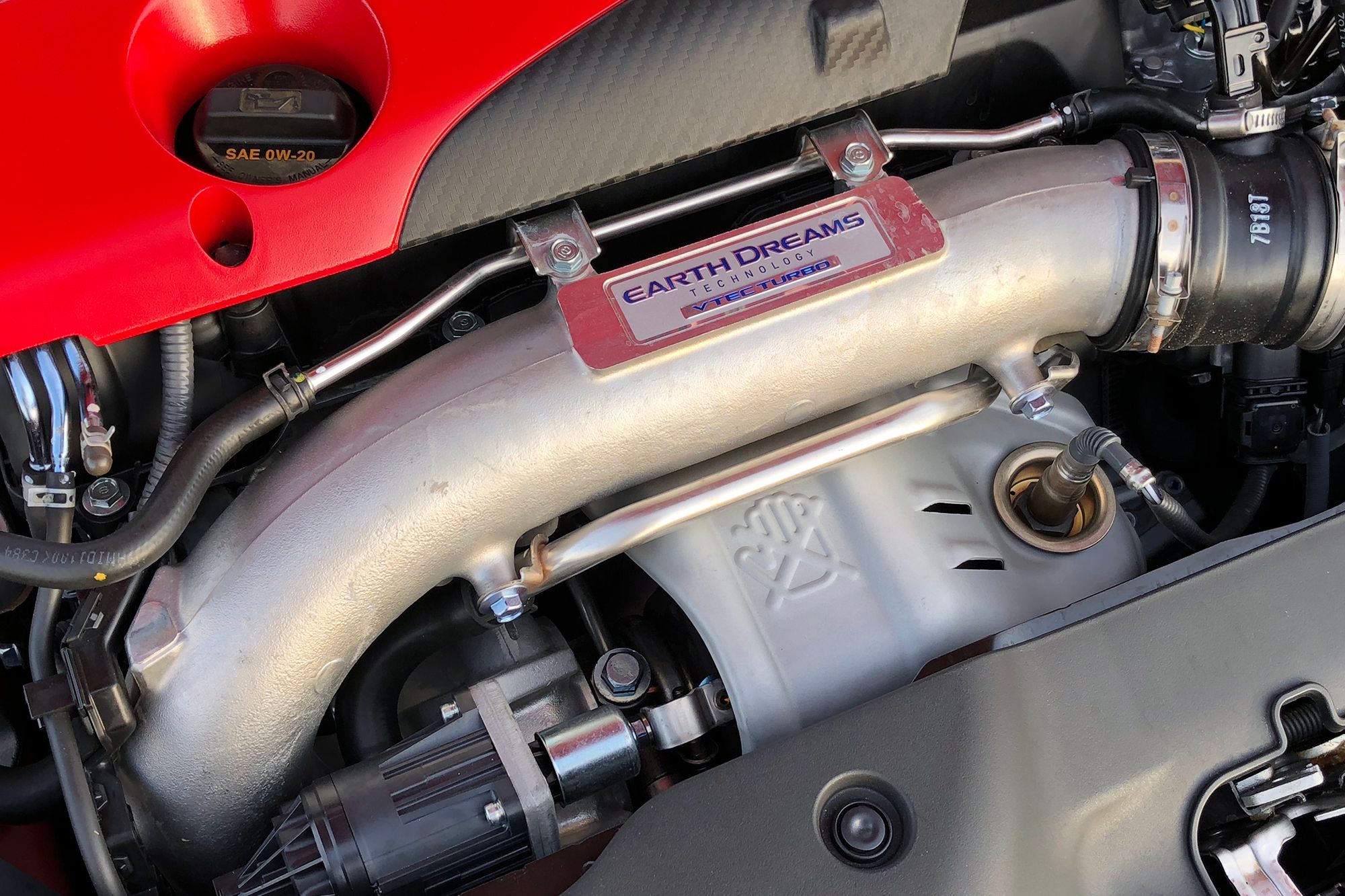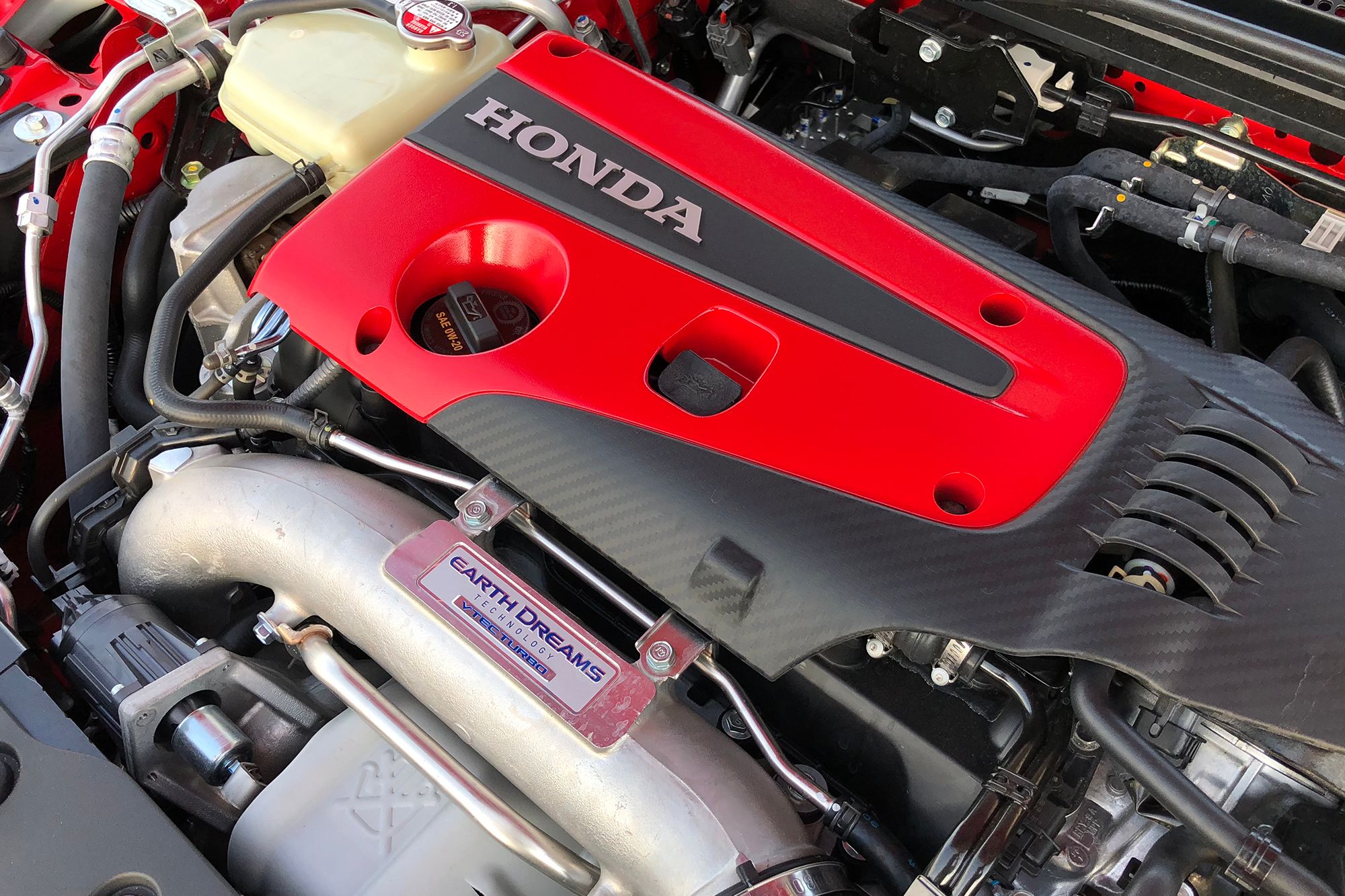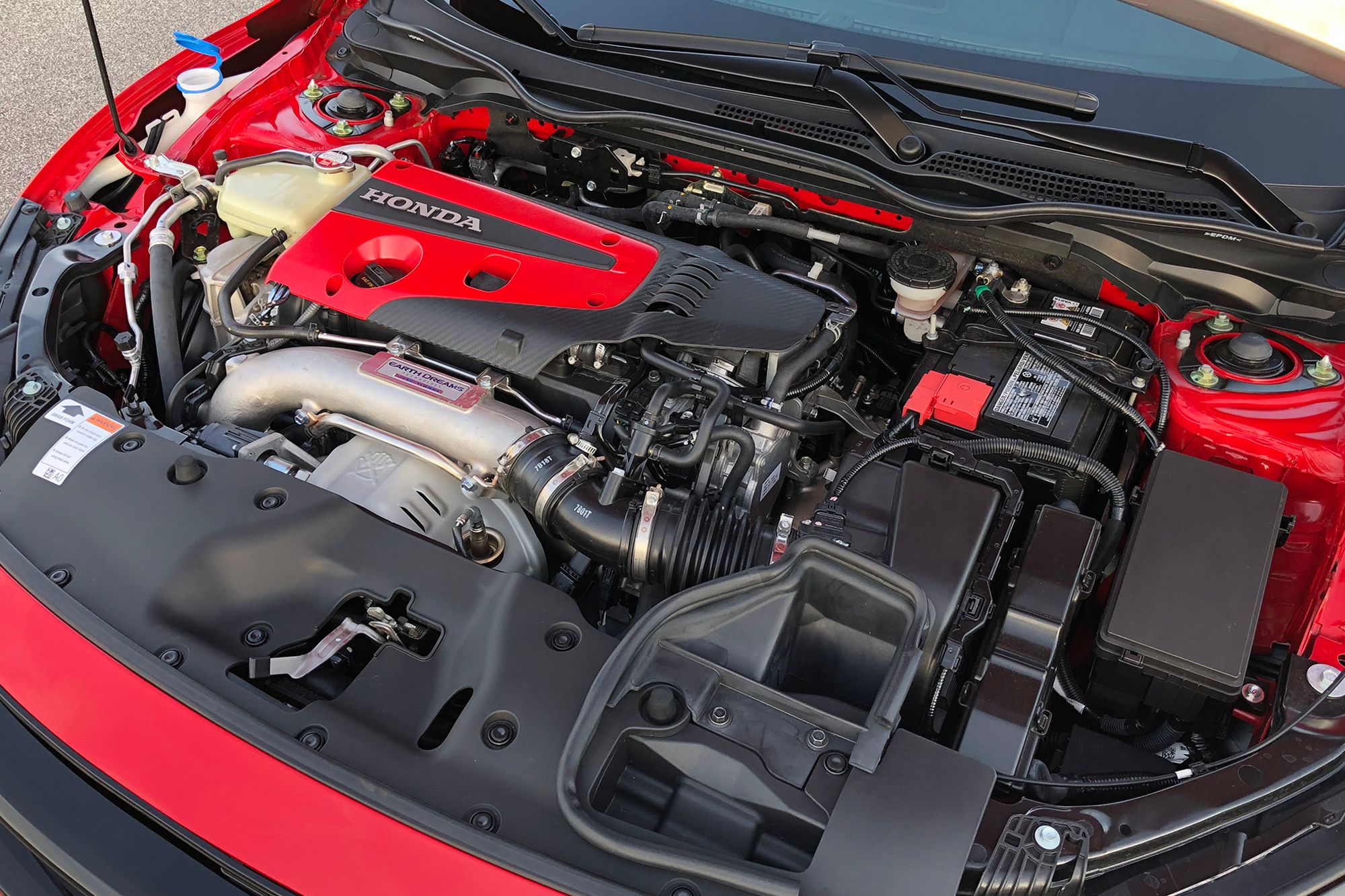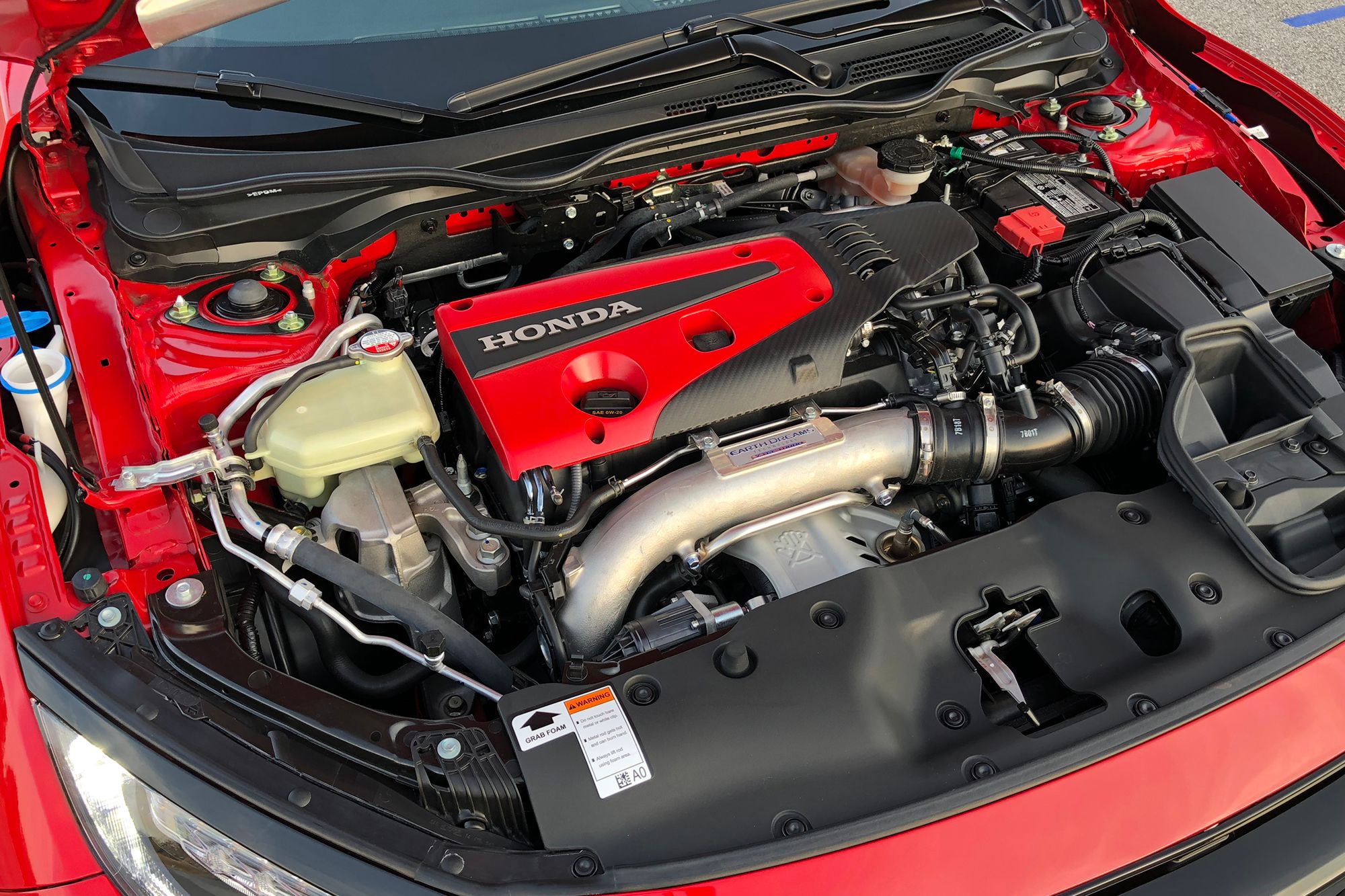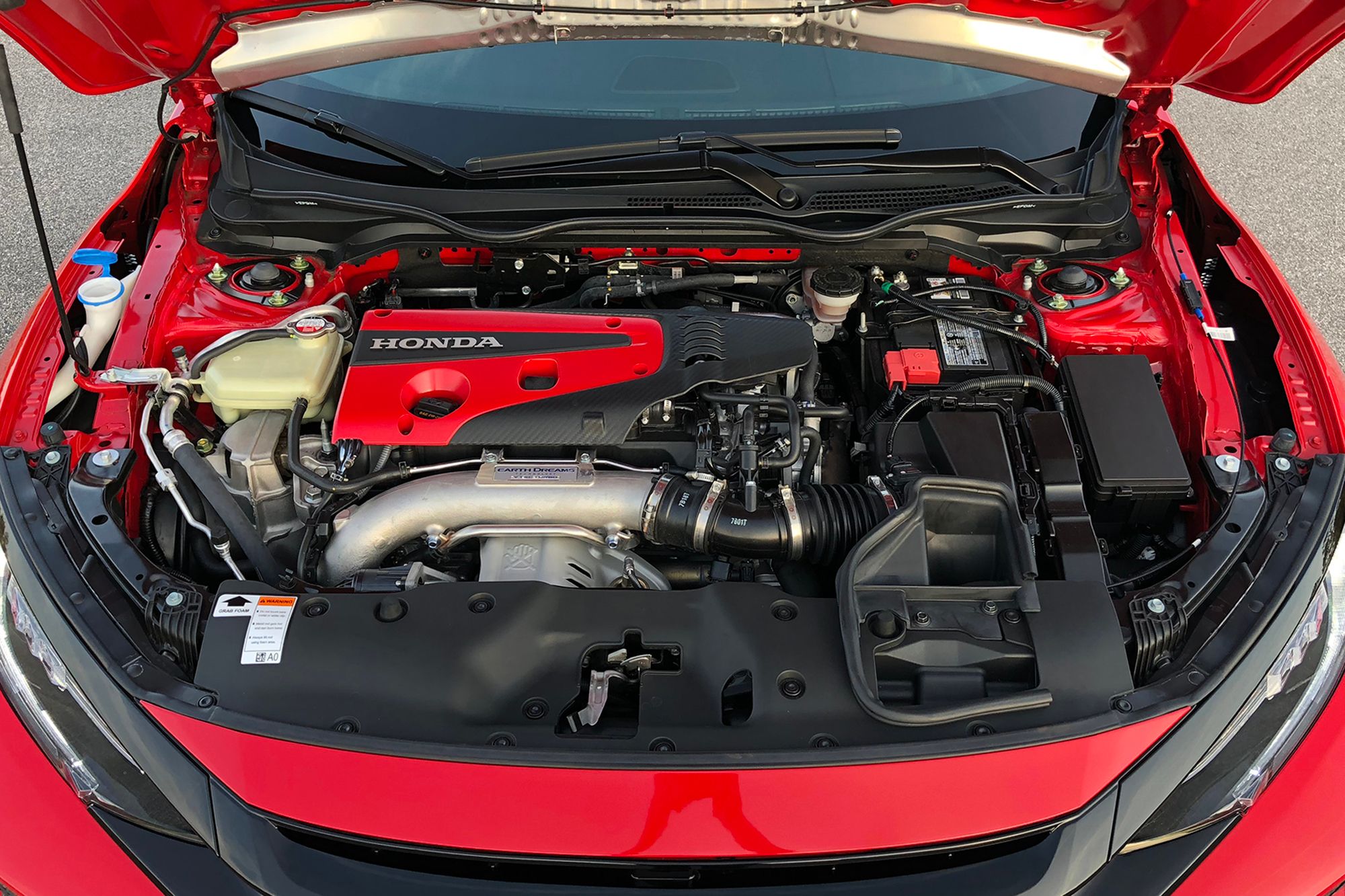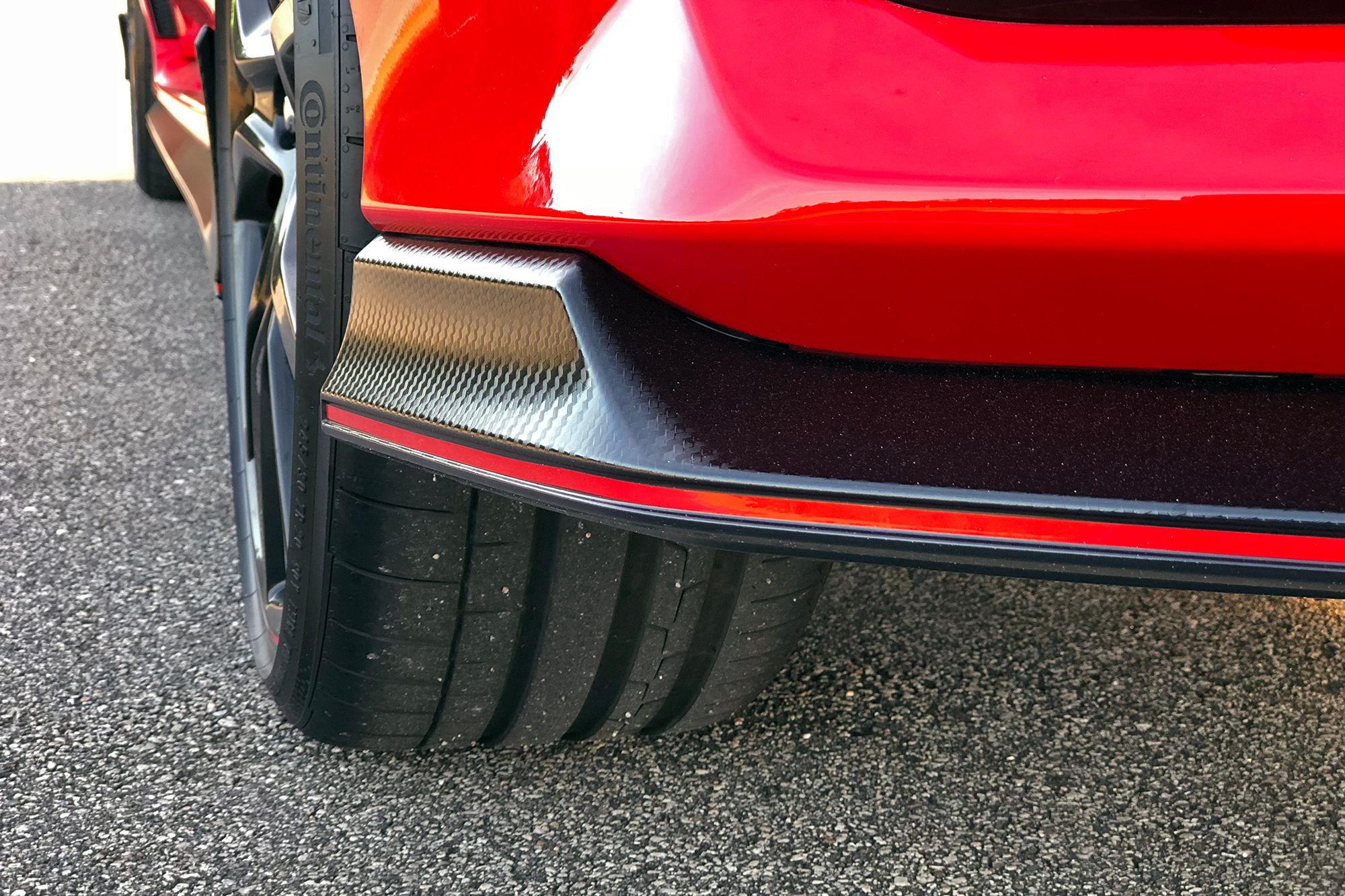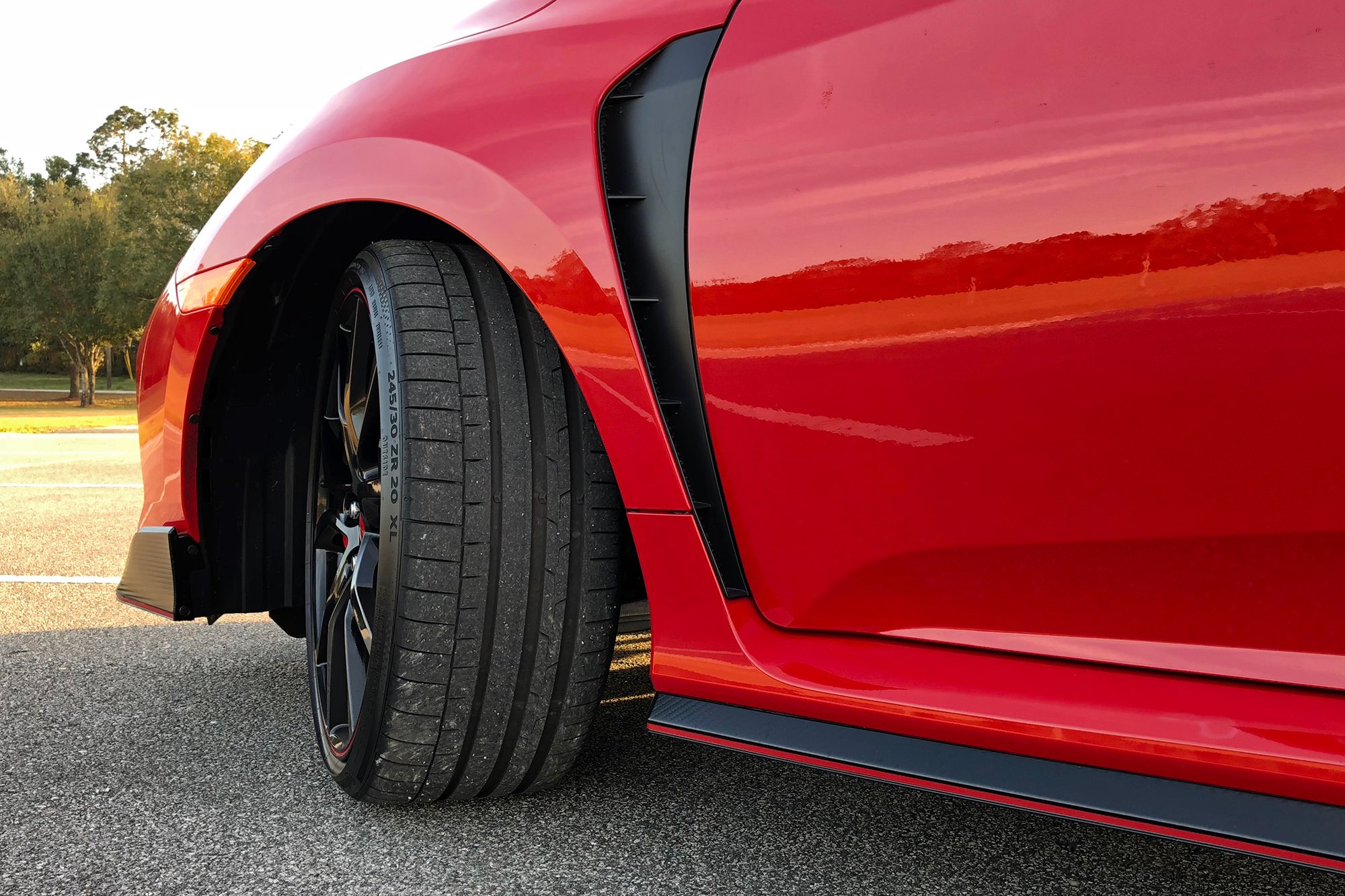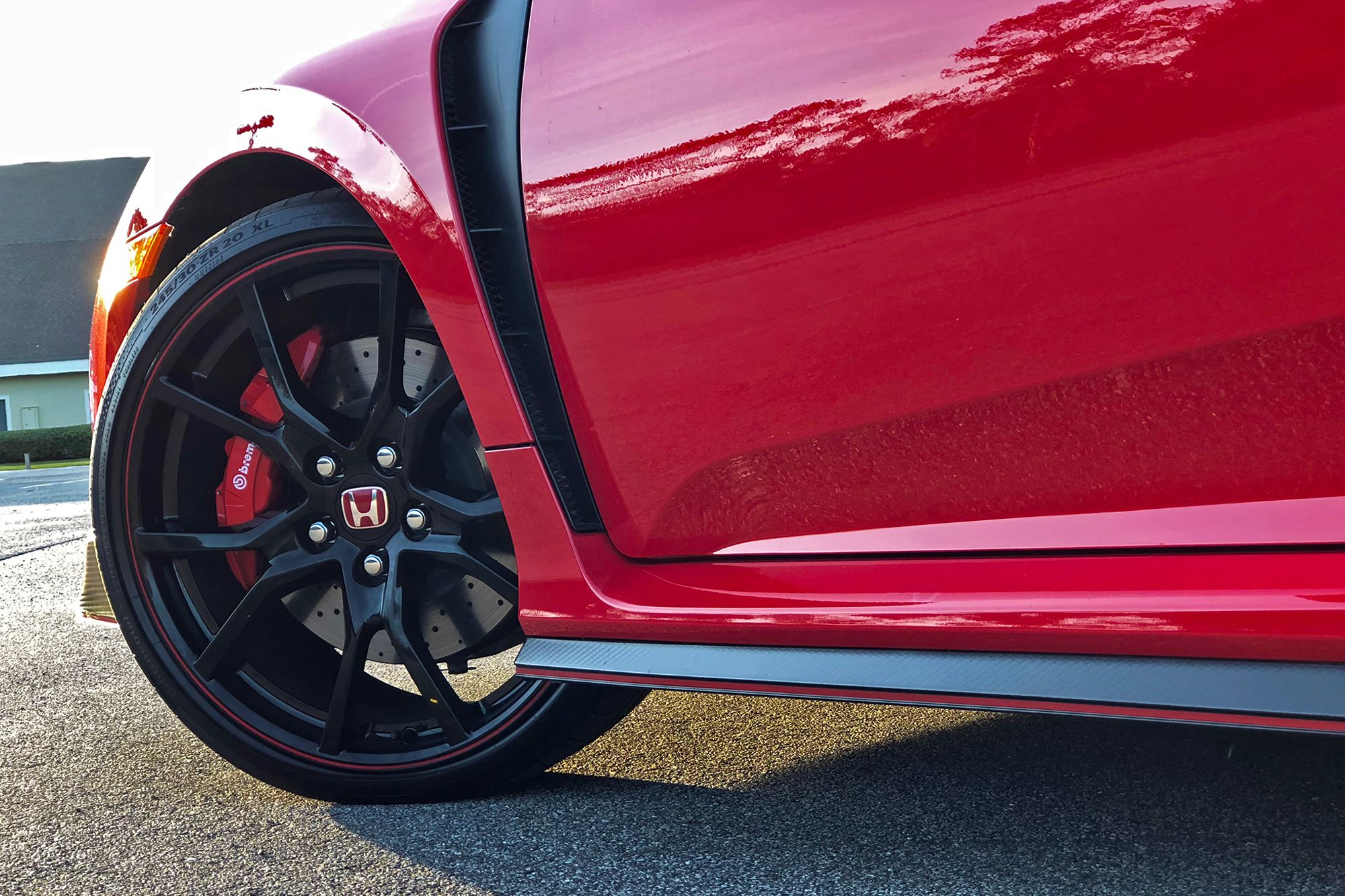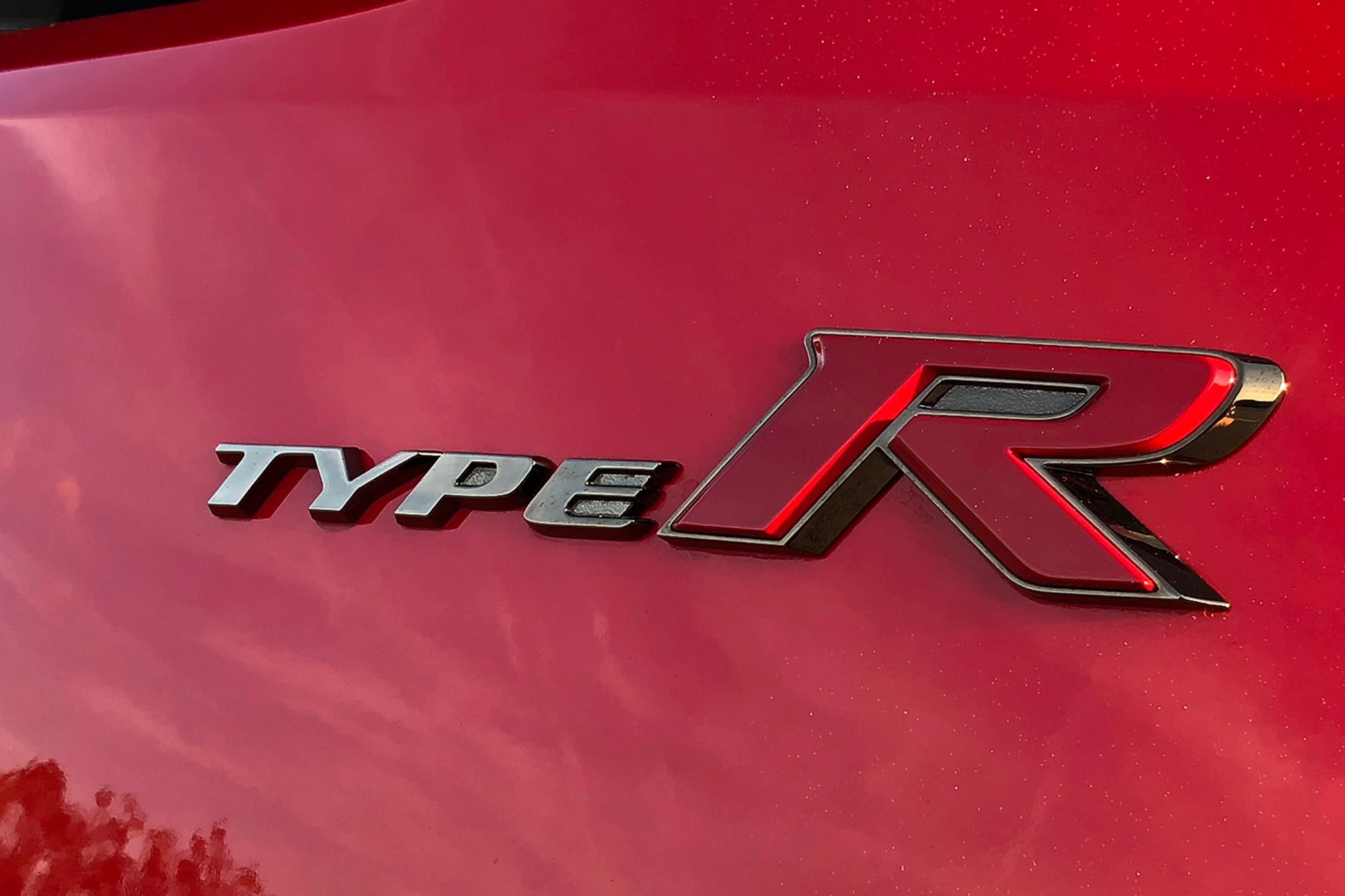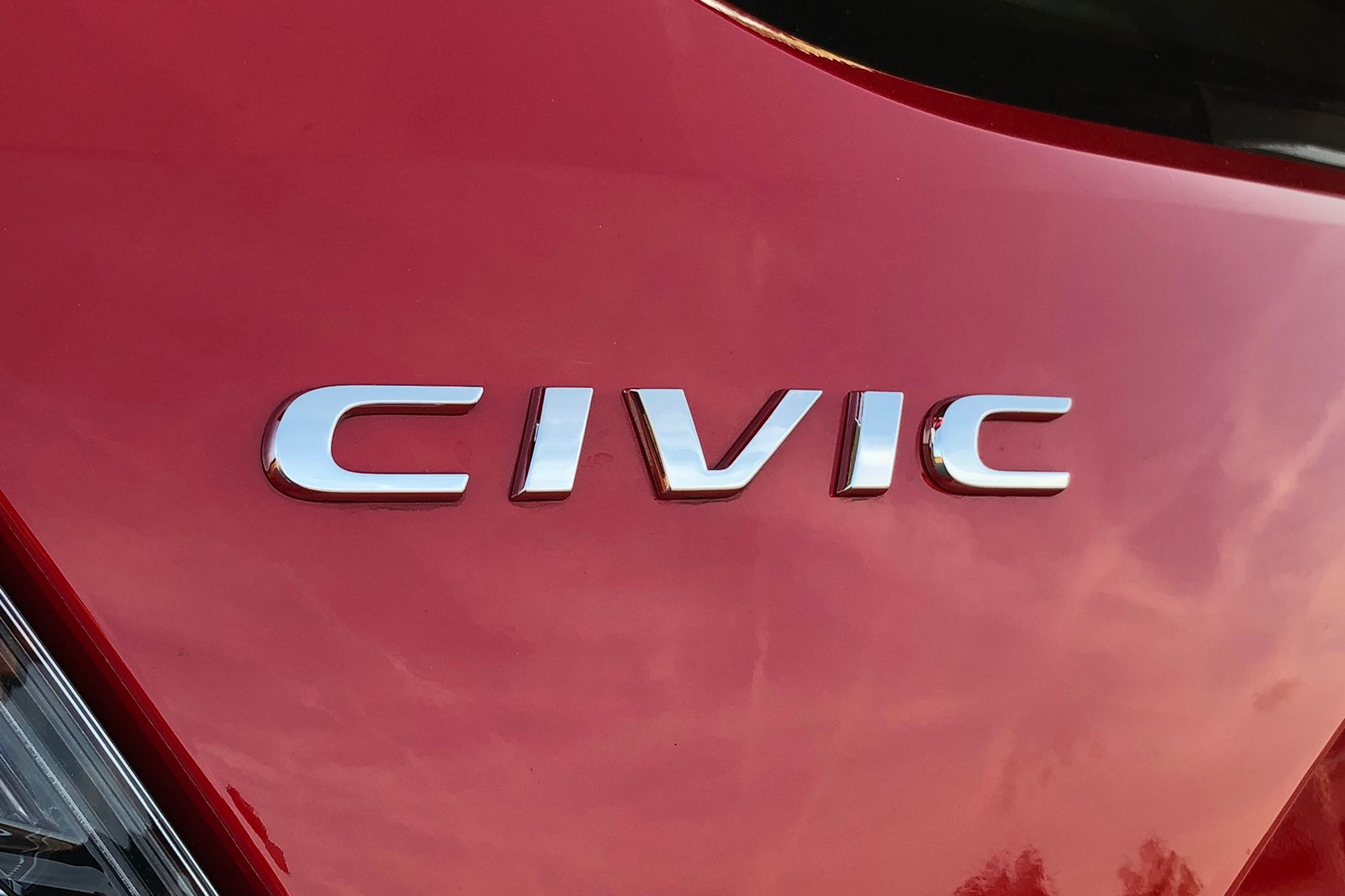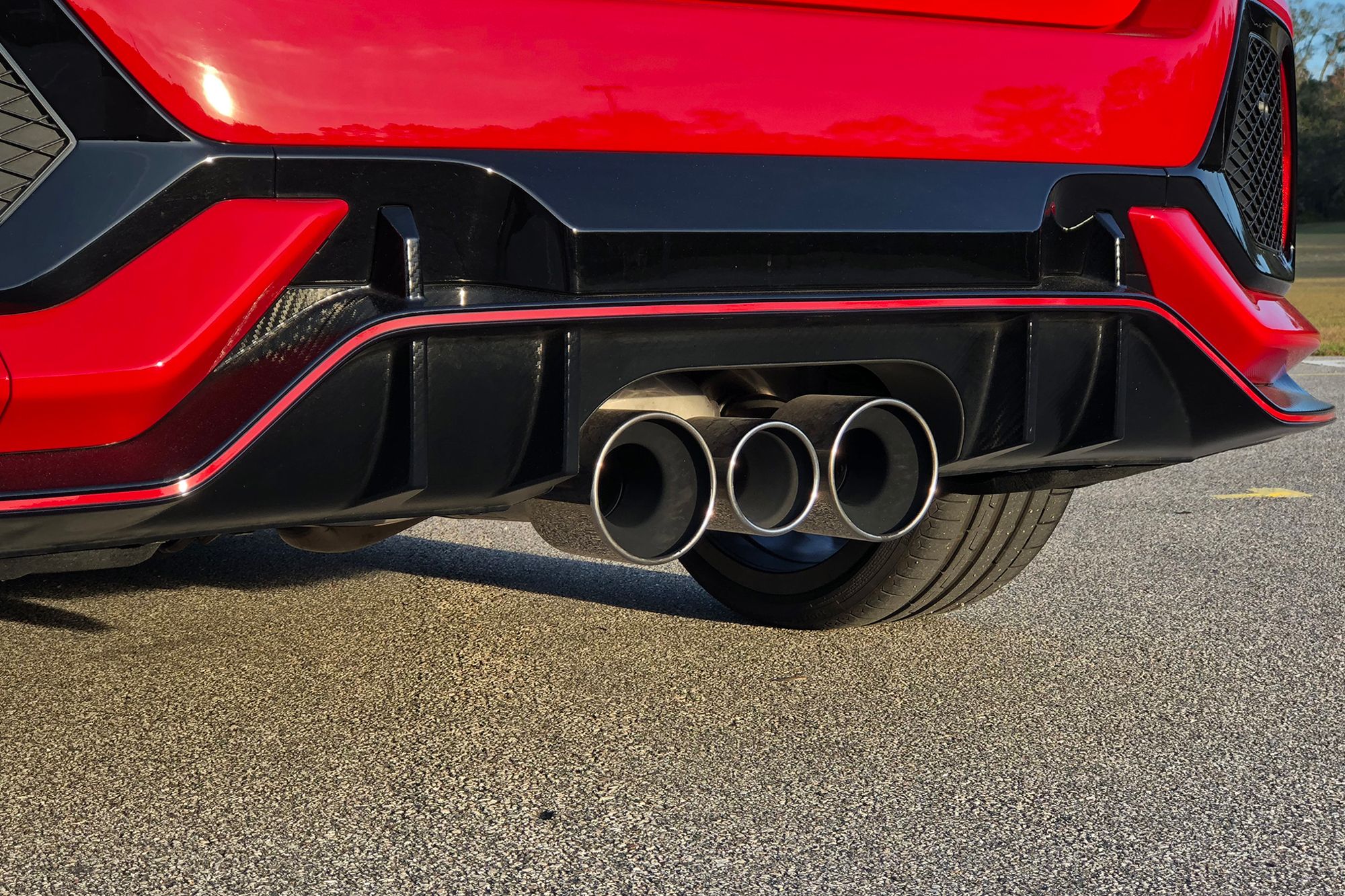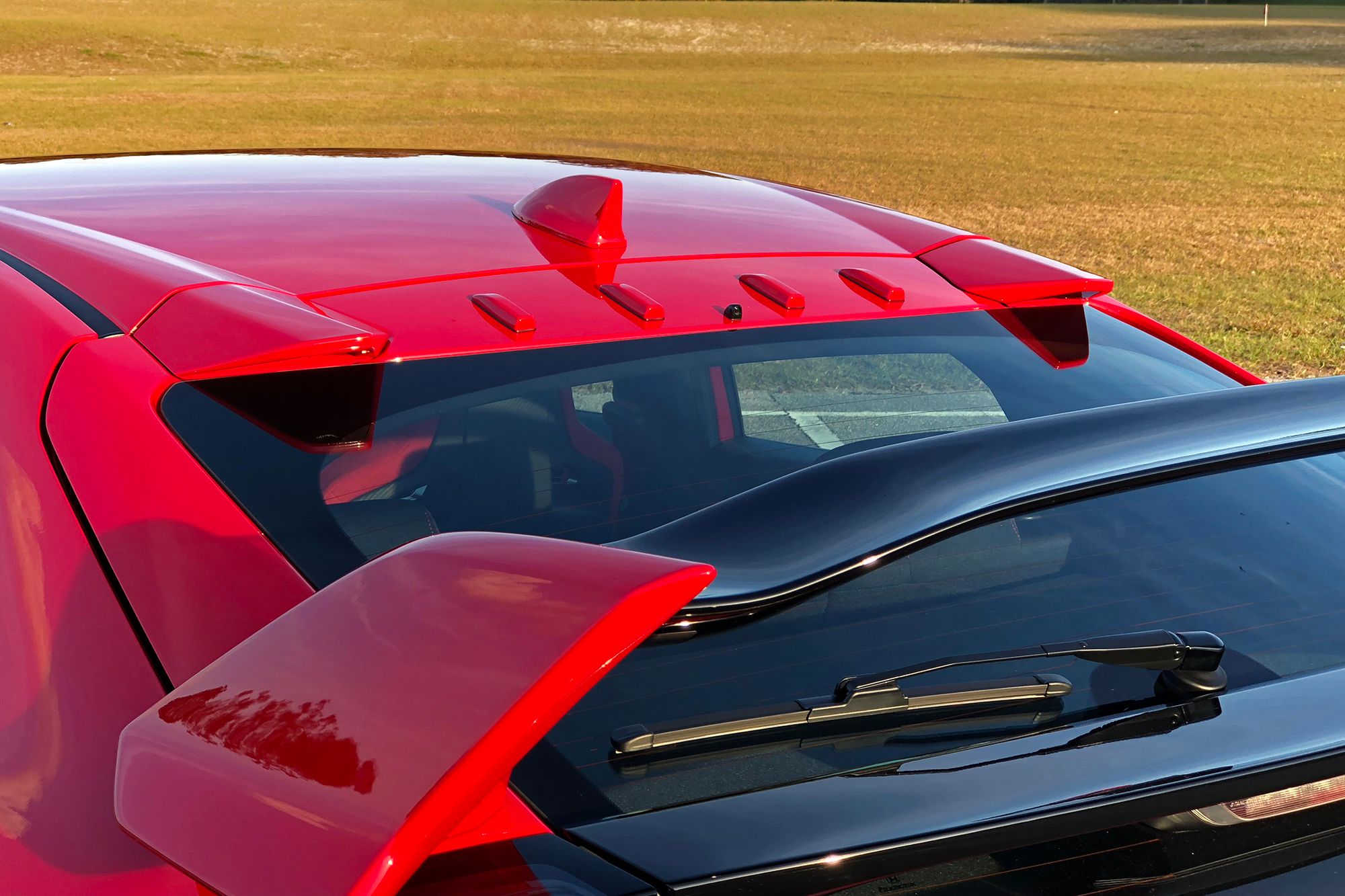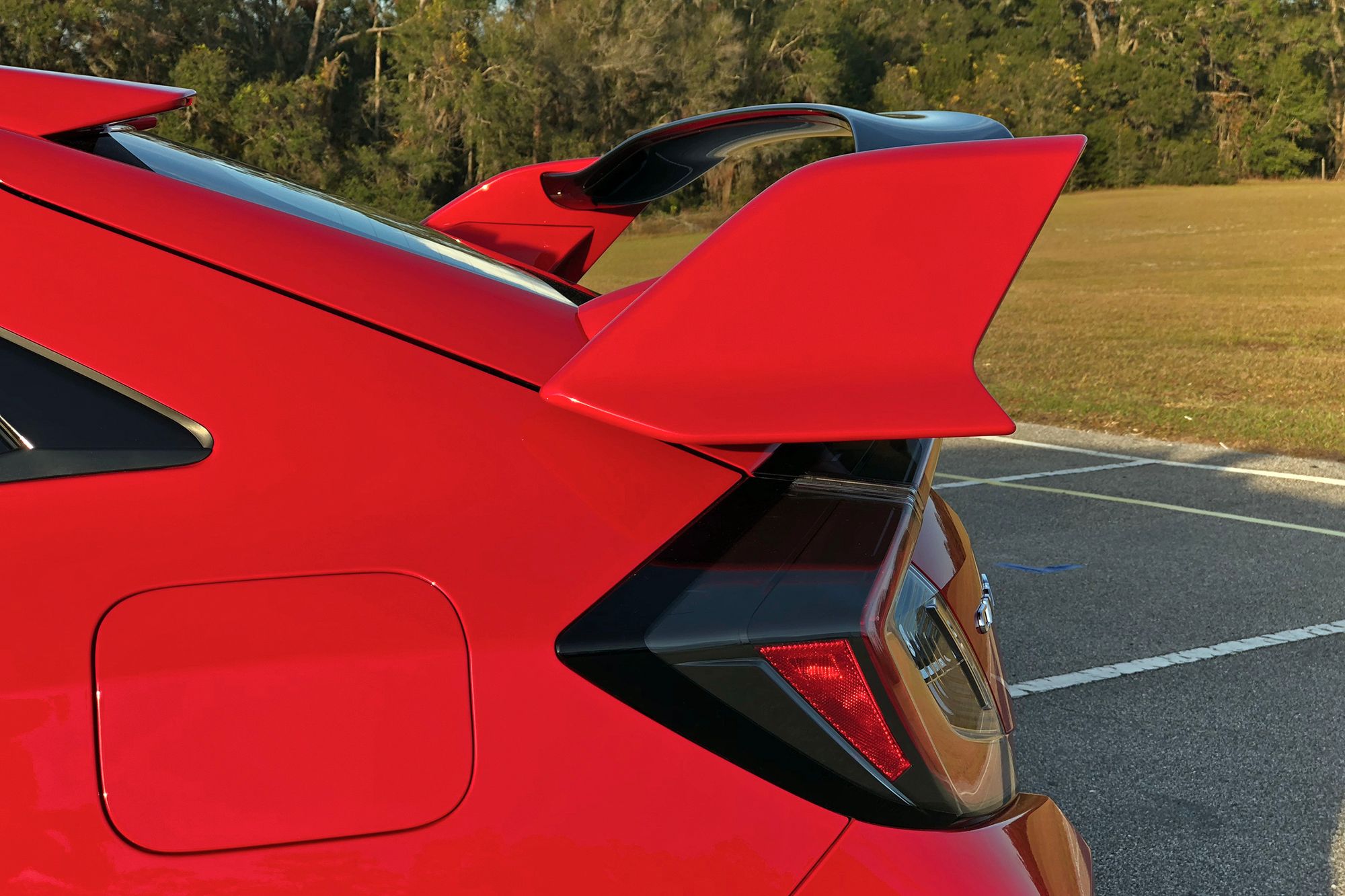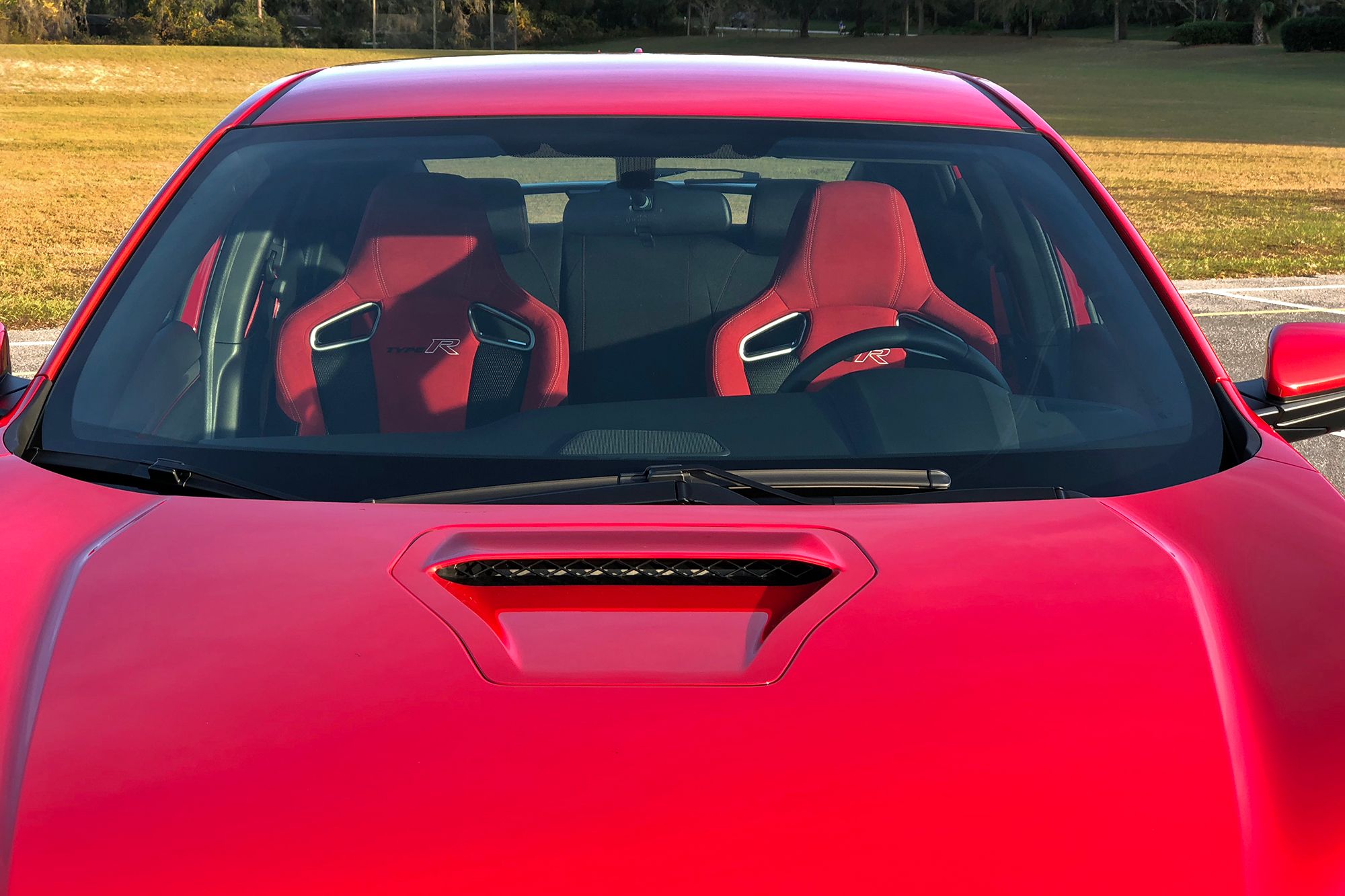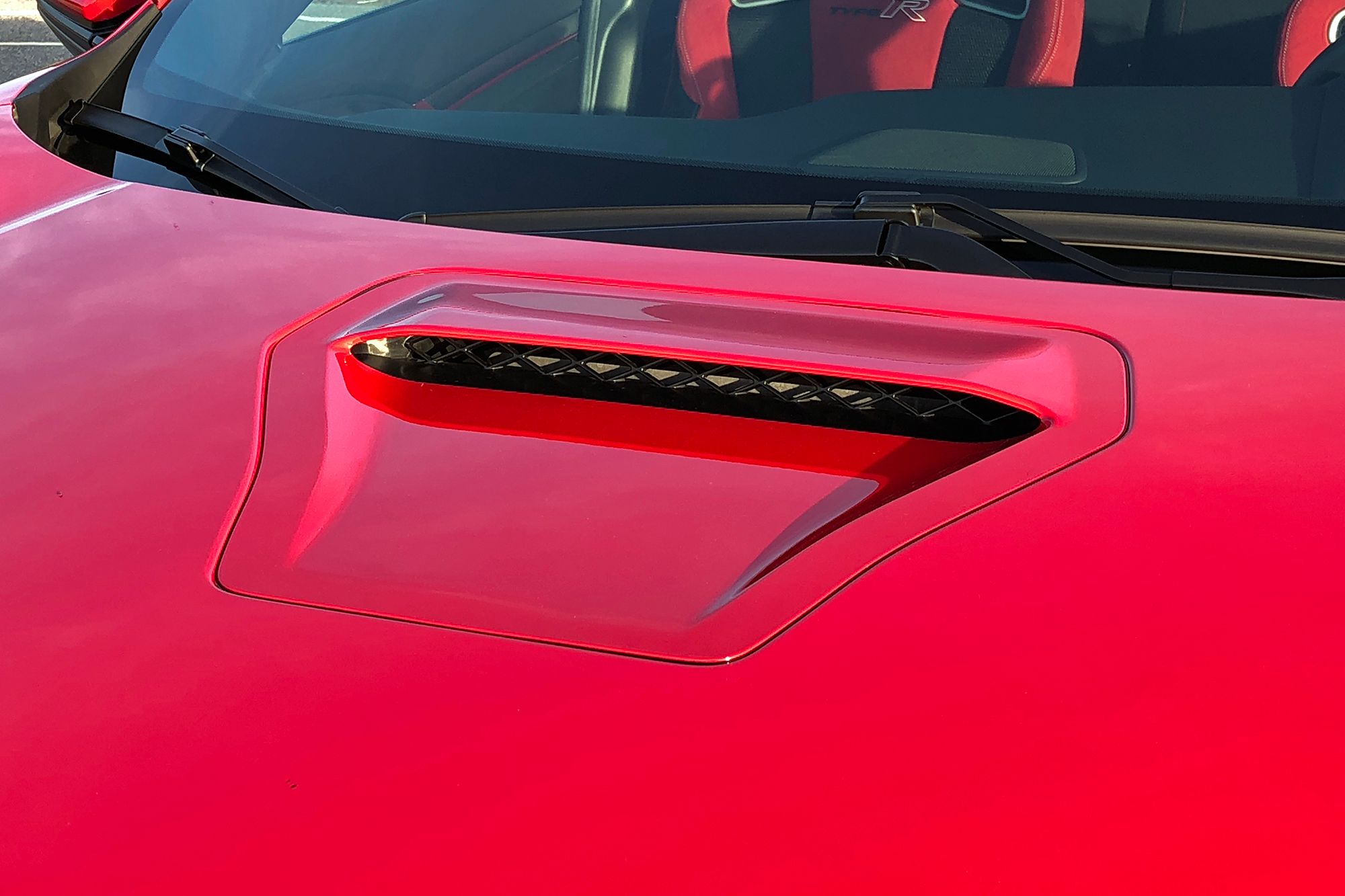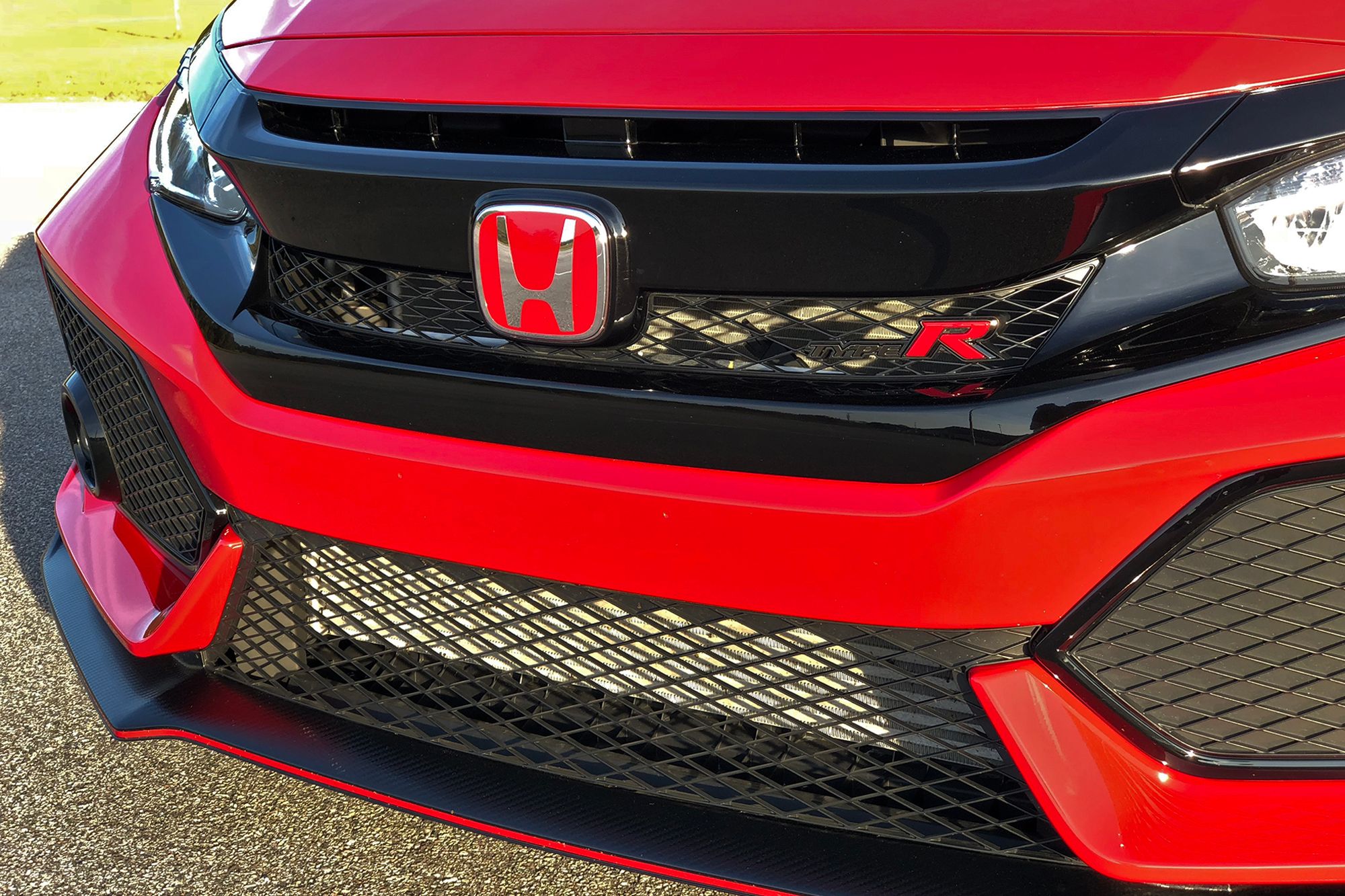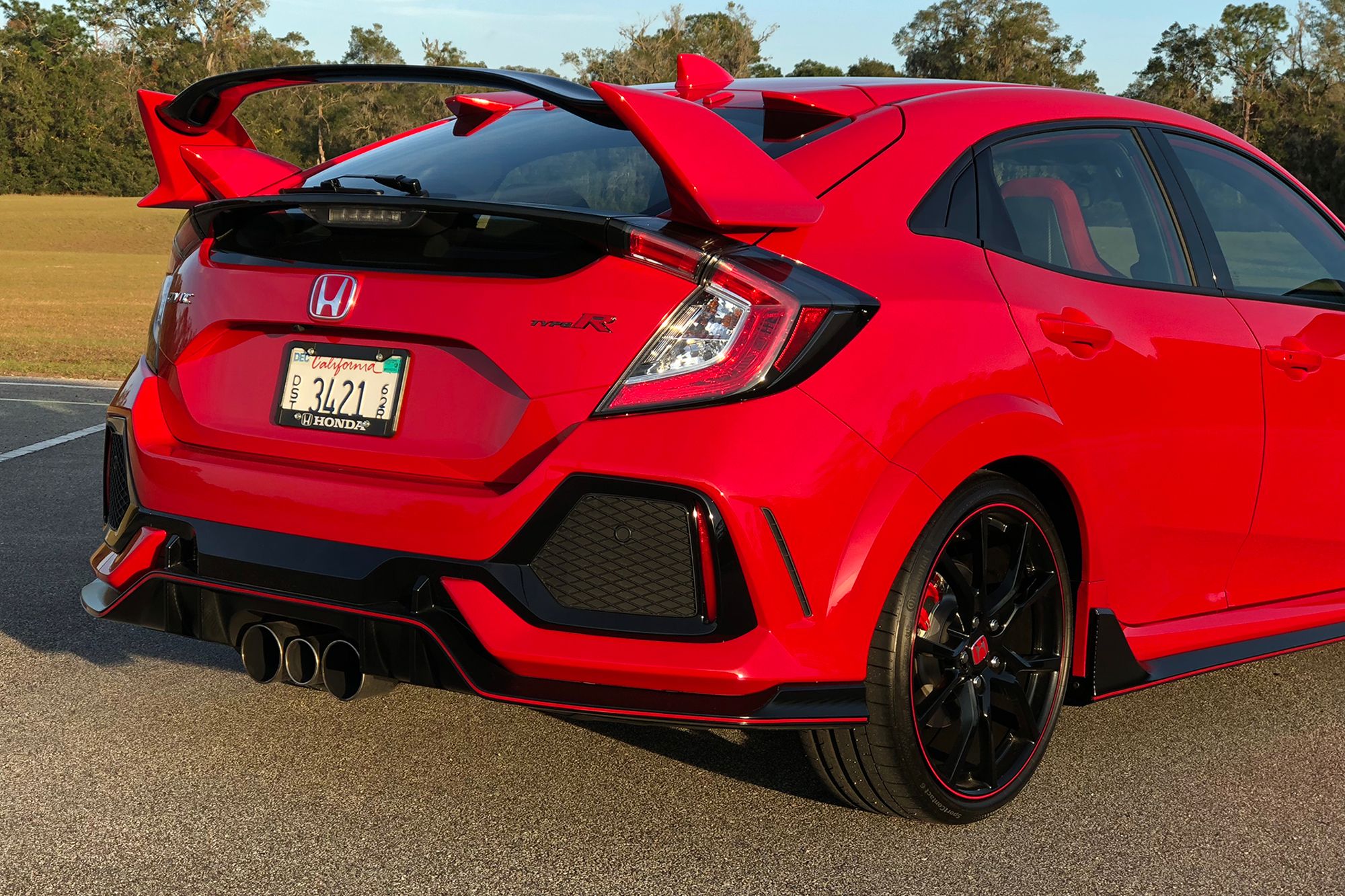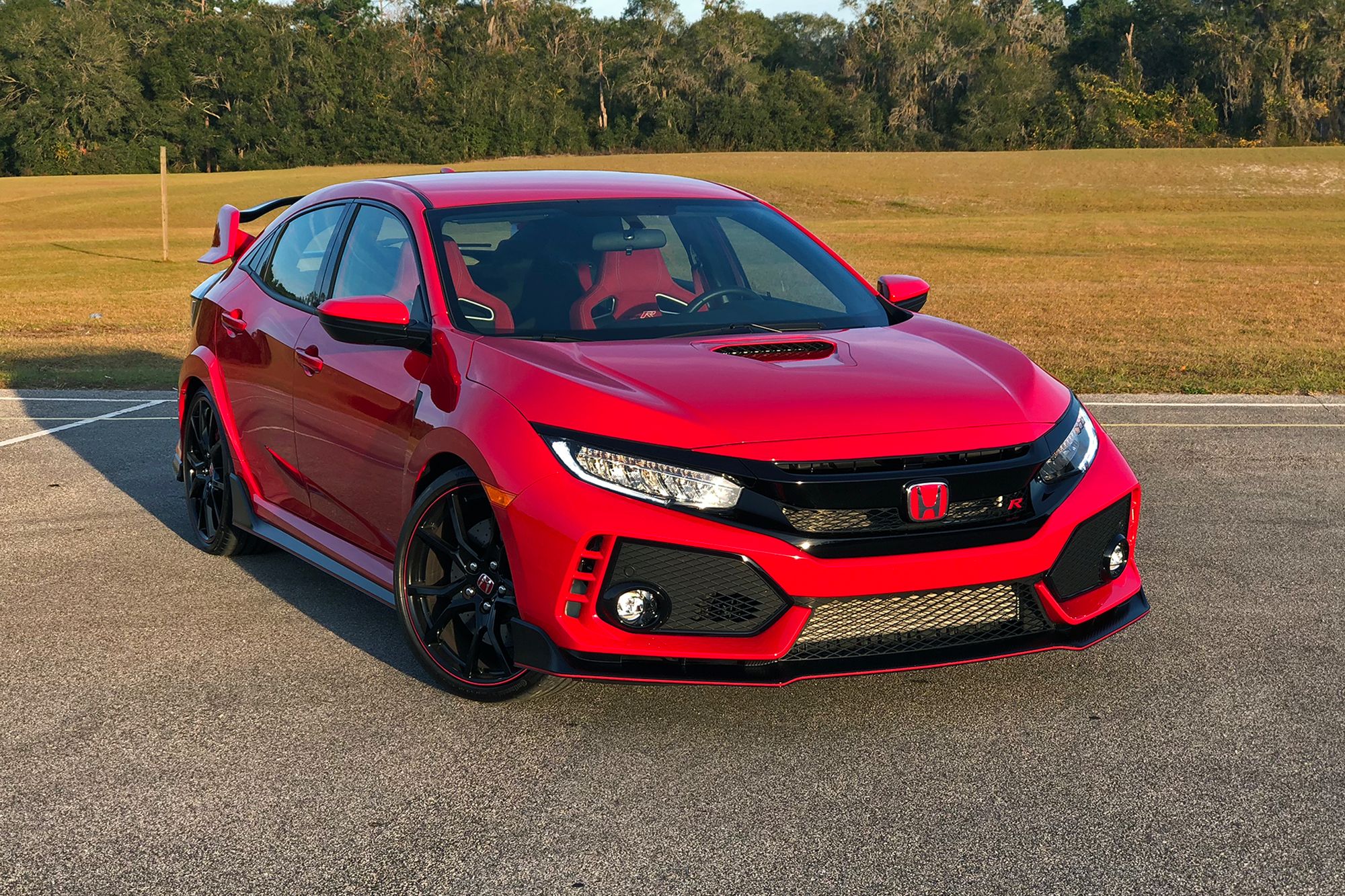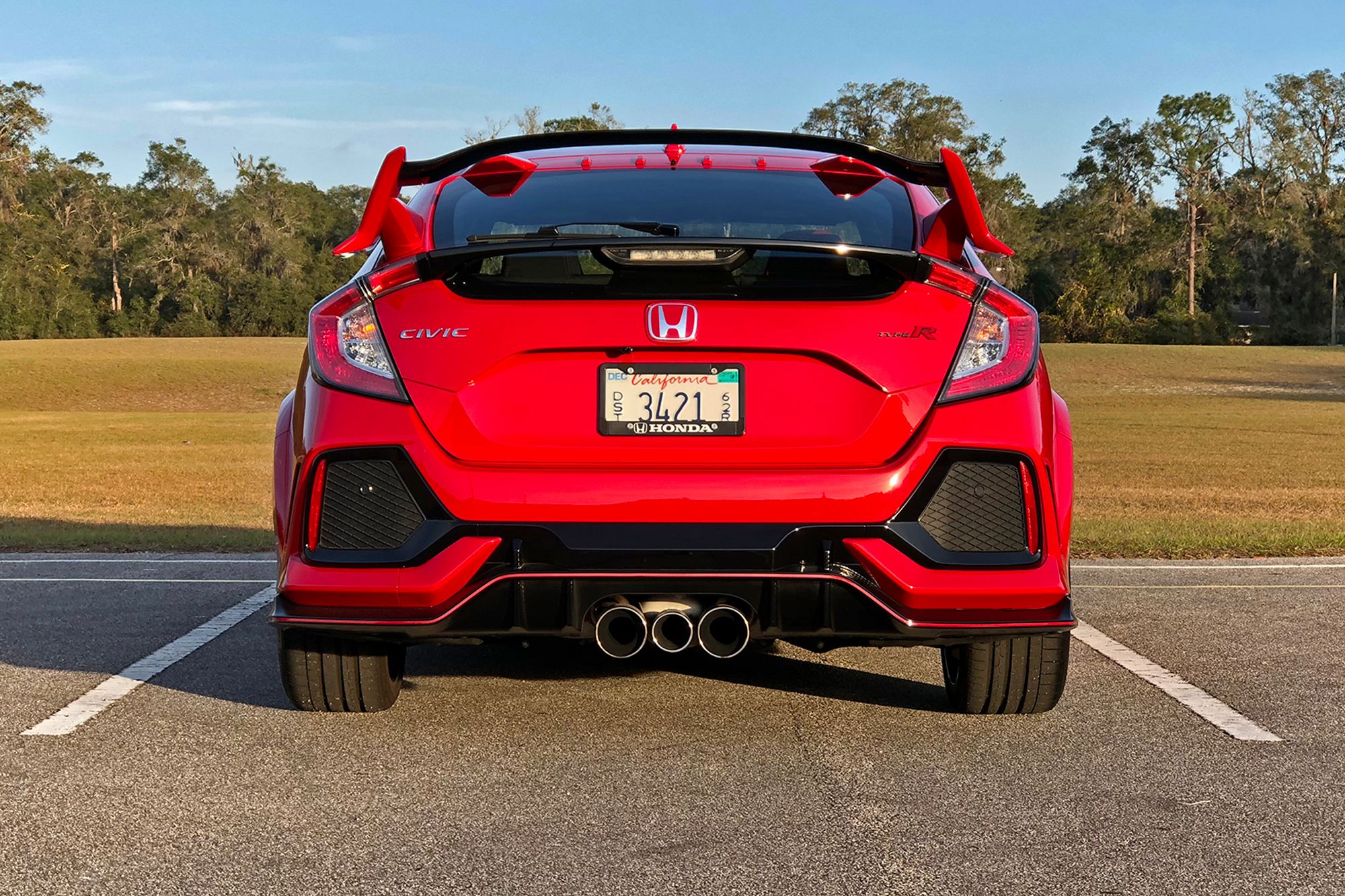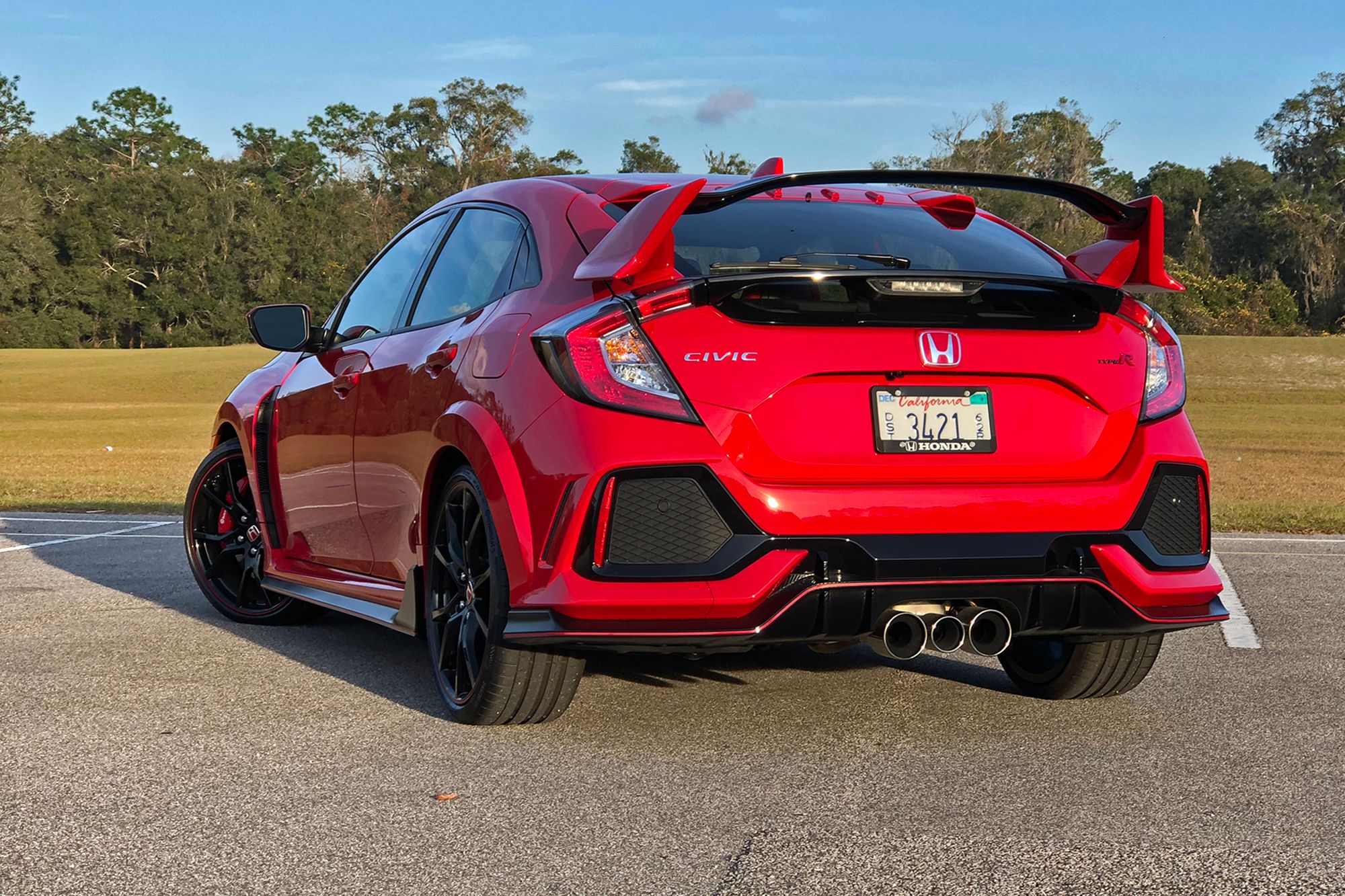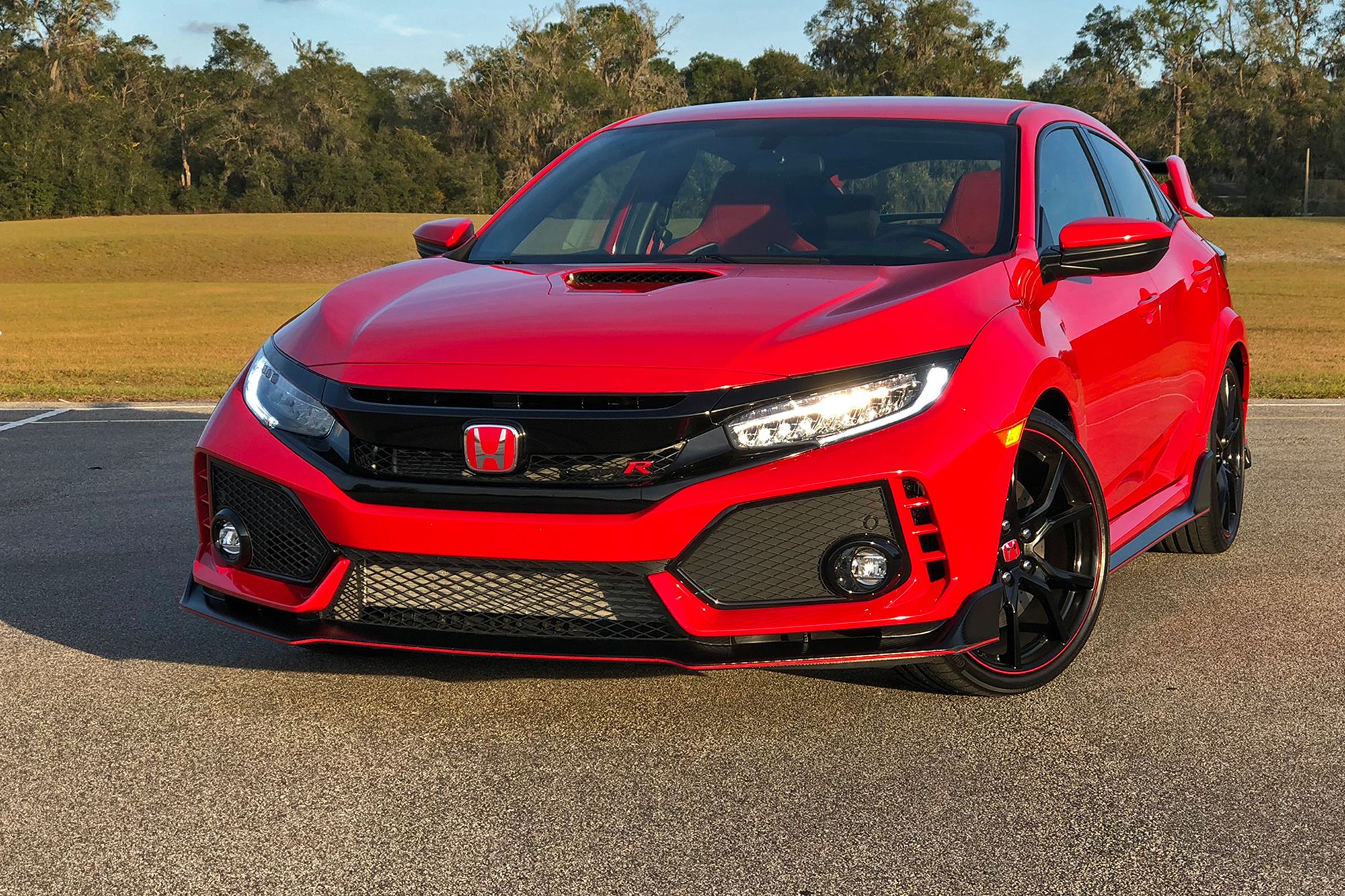The Honda Civic Type R has quite a legacy to its name, though none of it happened on American soil. Thankfully, that’s changed for 2017 as Honda has finally brought the Type R Stateside. In fact, its turbocharged engine is made in Ohio before being shipped to Wiltshire, England for assembly in the car. That’s right, this Japanese hot hatch has an American heart and is born in Britain. How’s that for multi-cultural? But more than that, the Type R’s appearance on U.S. soil means we finally have the chance to compare it to its fiercest rivals – the Ford Focus RS, Subaru WRX STI, and Volkswagen Golf R.
As it turns out, I’ve driven each of the competitors. Each are immensely fun and worthy of loads of respect over their engineering and outright impressive performance. The Type R joins those ranks with the same impressive level of technical wizardry and high-tech manufacturing techniques. I’ll dive into some of that, along with comparing it to the RS, Subi, and Golf R. It will be a fun ride, so read along.
Continue reading for more on the 2017 Honda Civic Type R.
2017 Honda Civic Type R - Driven (Again)
- Make: Array
- Model: 2017 Honda Civic Type R - Driven (Again)
- Engine/Motor: inline-4
- Horsepower: 306 @ 6500
- Torque: 295 @ 2500
- [do not use] Vehicle Model: Array
<
Exterior
The Civic Type R is definitely a hot hatch by appearance. Honda has attached things like a chin splitter, hood scoop, rocker extensions, wider fenders, and that massive rear wing. Oh, and that’s in addition to the regular spoiler and large faux air intakes that carries over from the regular Civic Hatchback. Needless to say, the Type R is aggressive. Thankfully, the car’s bite matches its bark and the styling isn’t just for looks.
The Type R spent many hours in wind tunnel testing during its development. Everything (mostly) serves a purpose. The grille is separated into three sections; the large lower portion directs air to the turbochargers’ intercooler, the slot below the Honda logo directs air to the radiator, and the slot above the logo feeds the engine a cool blast of fresh air. There’s also the hood scoop. No, it doesn’t have some cool ram-air effect, but rather sends air behind the transversely mounted engine to both keep temperatures in check and to relieve air pressure under the hood.
Other aero bits like the chin splitter and fins below the fog lights help generate downforce, while small vortex generators on the roof help direct air over the tall wing. The Type R is not a top-speed machine gunning for 150+ mph records, but every little bit of traction is welcomed when blasting down a racetrack.
Part of the Type R’s prodigious handling prowess comes from its wheel and tire combination. It rolls on lightweight 20-inch alloy wheels wrapped in 245/30R Continental SportContact 6 summer performance tires. For those not experts in tire sizes, 30-series sidewalls are about as tall as a pancake. It offers very little deflection and give – a necessity for that riding-on-rails feeling the Type R exhibits. The downside is, well, very little deflection and give. That makes the ride rather harsh on rough, broken pavement. It also makes those thin-spoked wheels a prime target for potholes. Still, the tradeoff is worth it; the Type R is a handling monster. But more on that later. As for looks, the wheel and tire combination is fantastic. I really appreciate the red ring the rim’s outer edge and how it matches the red accent running along the faux carbon fiber body kit.
Interior
Honda engineers, designers, and bean counters had to devise an interior that added that something special while maintaining as many parts from the standard Civic as possible. In my view, they accomplished this compromise rather well. The Type R gets unique, Honda-built racing buckets up front, some faux carbon fiber accenting, a unique steering wheel, yards of suede and contrast stitching, and of course, splashes of red everywhere.
Not only are the seats red, but the steering wheel is accented in red, the dash has red hues, the seatbelts are red – heck, even the shift pattern engraved into the stainless steel knob is red. It goes a long way in adding that sporty feel to a cabin that is otherwise found in your sister’s Civic Touring. Don’t get me wrong; the Civic-y parts of the Type R are still relatively high quality and in no way detract from the Type R experience. In fact, I rather like the Type R’s interior. Compared to its rivals, the Type R takes second only to the Volkswagen Golf R – a car that’s known for its impressive Audi-like fineness and tasteful design. On the other hand, the Subaru’s interior feels dated while the Ford’s feels made from oily yet scratchy plastic found on public transportation.
The other handy carry0ver from the standard Civic Hatchback is its cargo volume. There is 25.7 cubic feet of cargo room behind the rear seats and an impressive 46.2 cubic feet with them folded. That outdoes the Focus RS and Golf R with the seats in place, though the Golf R offers 52.7 cubic feet with its seats folded. The Civic also has a sliding shade hides cargo from prying eyes and glaring sunbeams. Since the Type R spent Christmas at my house, it spent time hauling presents back and forth to the in-law’s house. Aside from the massive rolling toolbox Santa brought my way, the Type R transported everything just fine.
Honda’s infotainment system offers plenty of functionality, too. It comes with Apple CarPlay and Android Auto, along with satellite radio and GPS navigation. These come standard, of course, being that the Type R is a mon0-spec car based on the nicely equipped Civic Touring trim. Sadly, Honda left out the Civic Touring’s standard Honda Sensing safety suite and power-adjustable front seats in order to save on weight. While I’m ecstatic about the 3,100-pound curb weight, the absence of blind spot monitoring, rear cross-traffic detection, and other features is a bit disappointing. Then again, the large side mirrors and surprisingly open rear visibility meant never really needing the driving aids.
Other features I miss is lumbar adjustment on the front seats and a knob for the radio volume. The Honda-developed racing buckets are great, but added adjustability would be welcomed. The missing knob has already been addressed in other Honda products since most everybody complained about the touch-sensitive slider. Unfortunately, the Civic’s 7.0-inch infotainment system hasn’t received that update. Redundant steering wheel controls help alleviate the issue.
It’s also worth pointing out I never had connection issue with the satellite radio during my week-long evaluation. That wasn’t the case during the Type R launch event in western Washington State. Apparently the mountainous terrain played havoc with the radio and GPS. Here in Central Florida where the tallest objects are pine trees, music flowed freely from the 540-watt sound system’s 12 speakers.
And speaking of speakers, the system includes all the standard connectivity methods. There is Bluetooth, along with a USB port hidden in a lower level below the center stack near the footwell. A pass-through with cord snaps allows for excellent management of cables, too. A second USB port is hidden deep below the cup holders in the center console.
Drivetrain
Behind that aggressive front bodywork is high-tech, all-aluminum 2.0-liter four-cylinder with a turbocharger capable of producing 23.2 pounds of boost. That’s impressive, especially for an automaker relatively new to the turbocharger game. What isn’t new is Honda’s legendary VTEC system. This valvetrain design modulates the phasing on its dual overhead camshafts to change the amount of valve lift and duration seamlessly through the rev range. The result is a torque-rich lower register and a powerful upper range. The numbers don’t lie: it makes 306 horsepower at 6,500 rpm and 295 pound-feet of torque from 2,500 to 4,500 rpm.
The engine also features direct fuel injection for precise management of fuel flow into each cylinder. A lightweight crankshaft, connecting rods, and pistons, along with sodium-filled exhaust valve stems, contribute to the engine’s quick-revving nature. Blip the throttle and the tach shoots from idle to its 7,000-rpm redline in a blink.
The engine dumps its exhaust into a single pipe that runs though the transmission tunnel past the rear subframe. Once there, the pipe splits into three sections. The outer pipes feed mufflers while the center pipe feeds a resonator. That’s why there are three exhaust tips on the Type R. At higher revs, the outer mufflers handle the exhaust, while the center resonator is designed for low to mid-level revs. The resonator helps reduce the booming noises typically heard from inside the cabin of a four-cylinder car.
The Type R comes standard with one transmission: a six-speed manual. To the delight and enjoyment of enthusiasts and owners everywhere, the gearbox is super sweet to operate with short throws and snickety engagements into each notch. The clutch is a joy, too, with a light action and a predictable engagement point. It makes driving the Type R around town completely trouble-free. Combine that with the automatic rev matching, and the Type R’s gearbox ranks very high in the halls of legendary manual transmissions.
Unlike its competition, power to sent only to the Type R’s front wheels. While that might seem like a cheap cop-out on Honda’s part, the Type R’s light curb weight and nimble handling prove Honda engineers made a conscious decision to keep the Type R’s legacy of front-wheel drive. Honda does stack its deck by using a limited-slip differential.
Also a key player in putting power to the ground is the Type R’s dual-axis front suspension. Basically, the steering knuckle is mounted further away from the MacPherson strut with its upper and lower ball joints creating a parallel line with the strut. By either physics or black magic, this reduces torque steer, making the car easier to handle without white-knuckling the steering wheel.
Performance wise, the Type R does lag slightly behind the Focus RS and WRX STI in straight-line runs. The Focus RS hits 60 mph in 4.7 seconds and the Subi does it quicker at 4.6 seconds. The Type R needs roughly 5.4 seconds. There are reports of some folks pulling off a 4.9-second run, however.
When not being driven like it’s stolen, the Type R returns relatively decent fuel economy. The EPA estimates it will achieve 22 mpg city, 28 mpg highway, and 25 mpg combined. During my week of evaluation, I averaged right at 23.1 mpg combined over roughly 300 miles of very mixed driving without trying for good economy. I have no doubt the Civic Type R is capable of hitting 25 mpg combined when driven respectably.
Drivetrain Specifications
|
Engine |
2.0-liter Turbocharged Four-Cylinder |
|
Horsepower |
306 @ 6,500 rpm |
|
Torque |
295 pound-feet @ 2,500 – 4,500 rpm |
|
Max RPM |
7,000 |
|
Valvetrain |
DOHC; i-VTEC |
|
Compression Ratio |
9.8:1 |
|
Max Boost |
23.2 PSI |
|
Fuel System |
Direct injection; Premium Unleaded |
|
Fuel Economy |
22 city / 28 hwy / 25 comb |
Behind the Wheel
Few cars I’ve driven exhibit the same kind of tossability and power as the Type R. It’s like driving a Mazda MX-5 Miata with an extra 151 horsepower and 245-series summer performance tires. The Type R has three drive modes that drastically alter its behavior. Comfort mode softens the adaptive dampers, dulls the throttle response, and eases the steering effort for a somewhat relaxed driving experience. Sport mode, the default mode upon start-up, heightens all three parameters. This makes the Civic Type R feel poised and capable of taking on twisty roads without being too high-strung for its own good.
For the racetrack, there’s +R mode. It dials the dampers, throttle, and steering to 11, making the Type R feel invincible. No, it doesn’t somehow make its 306 horsepower feel like the Focus RS’ 350, but +R mode makes the Honda’s horses run like a scalded dog.
Honda’s heavily bolstered front buckets seats do a magnificent job at holding bottoms in place. Their suede and mesh coverings grip rather well. The steering wheel is also fun to hold, though it’s surprisingly free of extra-thick grips, which is fine by me.
Also surprising is the view through the back glass. That tall wing does not impede the driver’s sight lines of traffic. Thin pillars and a tall roof also contribute to excellent views of the outside world. And as mentioned, those large side mirrors do a fine job.
All told, the Type R is a well-balanced machine that is a terror at the track and a babe on the boulevard. It is surprisingly capable of doing both, though it’s not without compromise. Those thin sidewalls on the Continental tires and lack of thick sound deadening material inside the cabin contribute to loads of road noise, especially on rough pavement. And despite the center resonator’s best efforts, the exhaust does drone somewhat when the engine is under load at lower revs. Last but not least, Honda decided to bury the HVAC controls within the infotainment screen. You’ve got to press the climate button below the 7.0-inch screen to load the HVAC menu screen. Only here is the vent fan speed and most of the auxiliary functions like defrost and vent location controllable. Thankfully, the dual-zone temperature knobs are within easy reach of the front occupants. The two passengers in the back seat made do with no vents at all.
Pricing
The 2017 Honda Civic Type R is a mono-spec car, meaning it only comes one way and every one has the same features. The customer’s only choice is the exterior color and what add-on accessories the dealership will install. That means pricing is pretty simple – at least for the most part. Honda is charging $33,900 for the Type R, plus an $875 destination fee, bringing the total price to $34,775.
Unfortunately, Honda dealerships have reportedly been charging exorbitant amounts of mark-up. I’ve heard some dealers adding as much as $20,000 to the price! Thankfully, those instances seem to be isolated and most Type Rs are going for at or slightly above the MSRP.
The Competition
2017 Ford Focus RS
The Ford Focus RS is the current horsepower and whiz-bang tech champ of this hot-hatch group. Its aesthetics are, in my view, a bit more restrained yet still appropriate for a 350-horsepower car. It offers optional Michelin Pilot Sport Cup 2 tires, which are the current go-to choice for supercars the world over. They are wrapped around lightweight alloy wheels which cover big Brembo brakes. Inside, Ford didn’t really do much to update the interior. The front seats are from Recaro, the steering wheel has a flat bottom and thick grips, and there is an extra gauge pod perched on the dashboard. Beyond that, the RS’s cabin looks like any rental-grade Focus – and that’s too bad.
What the Focus RS lacks in interior swag, it more than makes up for with power. A 2.3-liter EcoBoost four-cylinder generates 350 horsepower at 6,000 rpm and 350 pound-feet of torque at only 3,200 rpm. The turbocharged engine mates to a six-speed manual transmission that is then connected to a sophisticated AWD system. The AWD offers a rear-bias that makes the car more fun to toss around. Ford was even crazy enough to install a “drift mode,” which allows the car to fling sidewise like Ken Block himself is at the wheel.
Pricing is a bit steep for the RS. For 2017, Ford is charging $36,120. However, that doesn’t include the sticky Michelin tires, eight-way power driver’s seat, navigation, or several other comfort and convenience features. Check all the option boxes and the price will shoot to $41,550, just like the Focus RS reviewed here.
2018 Subaru WRX STI
Okay, so the Subaru WRX STi isn’t a hatchback, but it used to be. That legacy still keep this sedan barking up the same tree as the Focus RS, VW Golf R, and the new Civic Type R. And like those others, the WRS STI is based on an everyday car found basically everywhere. In the Subaru’s case, it’s the Impreza. However, there’s a catch. The 2018 Impreza is completely new, having undergone a generational update for the 2017 model year. The WRX STI and its middle-ground brother, the WRX, are sadly based on the previous generation Impreza. Nevertheless, both WRX version received a slight update for 2018, getting a more angular front end, larger wheels fitted over larger brakes, and a few updates to the interior.
Most of the greasy bits are still the same, however. Power comes from a 2.5-liter turbocharged Boxer four-cylinder making 305 horsepower at 6,000 rpm and 290 pound-feet of torque at 4,000 rpm. A six-speed manual is the only gearbox. Subaru swapped in a new electrical center differential over the older mechanical one found in previous models. It’s sais to improve smoothness and responsiveness in the AWD drivetrain. It still allows for manual adjustment of the differential’s lock-up.
Pricing for the 2018 Subaru WRX STI starts at $36,095. Subaru does offer different trim levels with the WRX STI. The one seen here is a Limited trim and commands $40,895.
2016 Volkswagen Golf R
The VW Golf R is definitely the sleeper of the bunch. Its exterior isn’t cladded with big aero bits or low-hanging chin splitters. Rather, the Golf R looks rather mature. That’s certainly welcomed after spending a week with each of the other contenders. Less people point and stare, which for me, is a good thing. Those who like their ego stroked might not feel the same way. Inside, the maturity level continues. Aside from the somewhat extra-bolstered front seats and flat-bottom steering wheel, the Golf R doesn’t screen hot-hatch. Rather, it lets its engine do all the talking.
And talk it will! The Golf R comes with a 2.0-liter turbocharged four-cylinder making 292 horsepower at 5,400 rpm and 280 pound-feet of torque at only 1,800 rpm and hold a flat torque curve to 5,500 rpm. While the numbers suggest the Golf R is underpowered, it certainly doesn’t feel that way from behind the wheel. The VW is also the only contender here to offer a dual-clutch automatic transmission. It’s a quick-shifting bugger, but the standard six-speed manual gearbox is the enthusiasts choice.
Pricing for the 2016 Golf R I last reviewed started at $35,650, but carried an as-tested price of $39,375 thanks to options like the $820 DSG gearbox.
Conclusion
The 2017 Honda Civic Type R was clearly designed to compete against some fantastic hardware without copying their recipe. Honda ditched the idea of AWD or having exorbitant levels of horsepower from an overworked engine. Rather, the Type R is a focused, lightweight car with an engine that should hold up well past 150,000 miles. That’s no knock on the Ford, Subaru, or Volkswagen’s reliability, but there is something to be said for Honda’s reputation for trouble-free service.
From behind the wheel, the Type R feels extremely sorted and well built while offering an exhilarating drive that’s more than capable of landing drivers in jail. Its three drive modes allow for a range of attitudes, while its large trunk makes it usable for everyday tasks and grocery store runs.
The Type R could still use some more sound insulation to reduce tire noise, a volume knob for the radio, and physical HVAC controls that aren’t buried in the infotainment system. Still, the Type R is a fantastic daily driver and even better backroad burner. Honda definitely did its homework when developing the car and pricing it below its competitors. As for which one to buy, it boils down to personal preference. All four hot hatches offer outstanding performance and everyday livability, but go about that mission in different ways with different personalities. Take your pick and you won’t be wrong, but the Honda definitely makes a very strong case for itself.
References
Honda Civic
2017 Honda Civic Type R: Life Behind the Wheel
Here’s How Honda Manages Air on the 2017 Civic Type R
The Turbocharged Heart of the 2017 Honda Civic Type R
Managing The Bump: A Look at the Civic Type R’s Suspension
Turns Out The 2017 Honda Civic Type R Makes a Good Daily Driver
Read our full driven review on the Honda Civic Type R.
Read our full review on the Honda Civic Type R.

